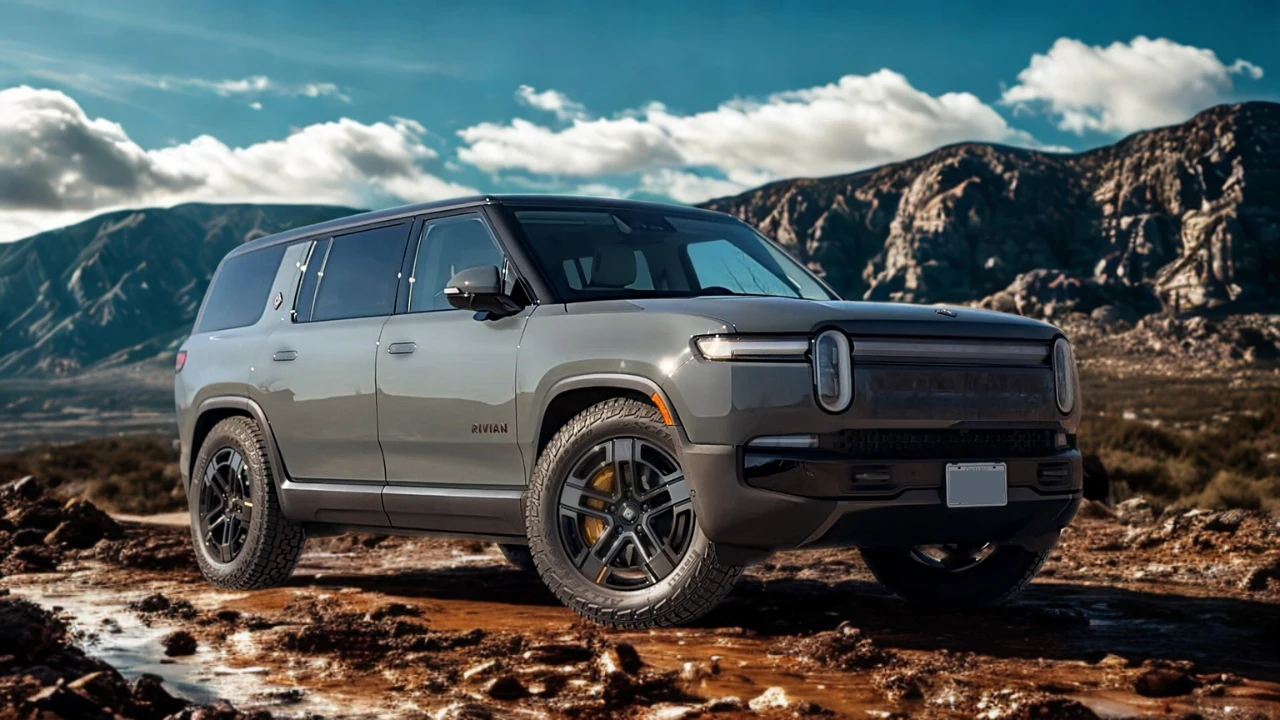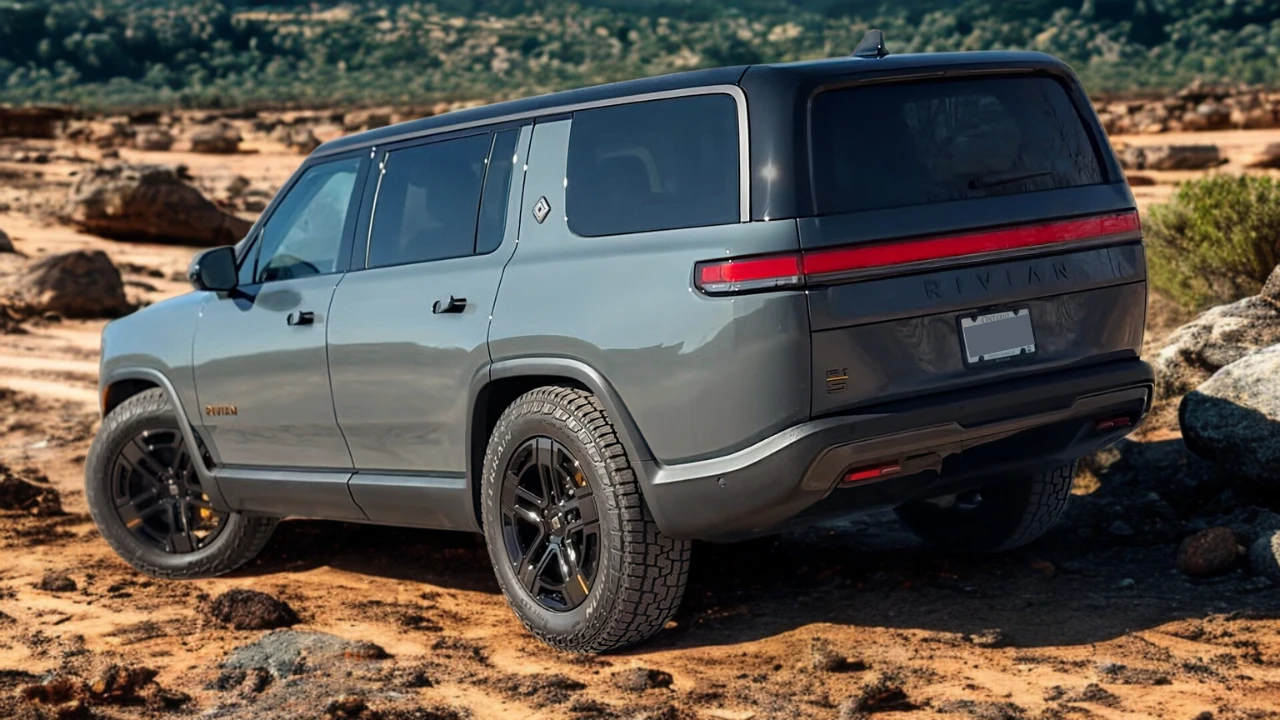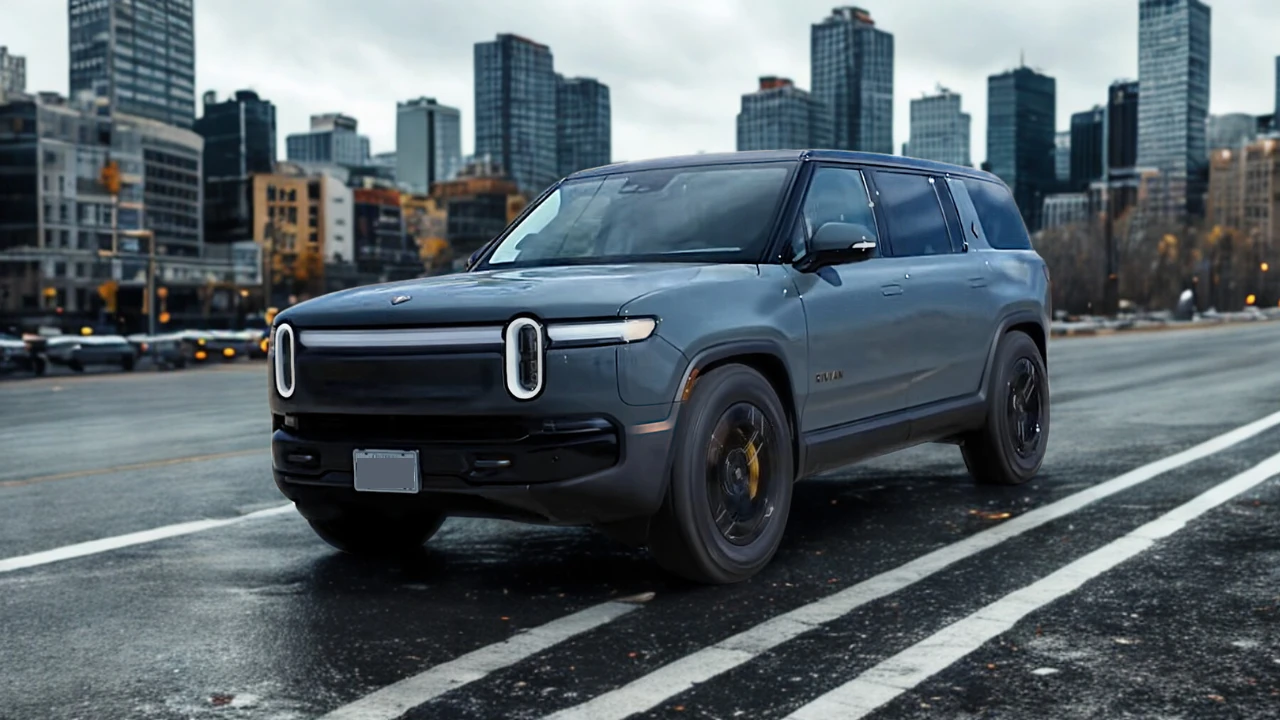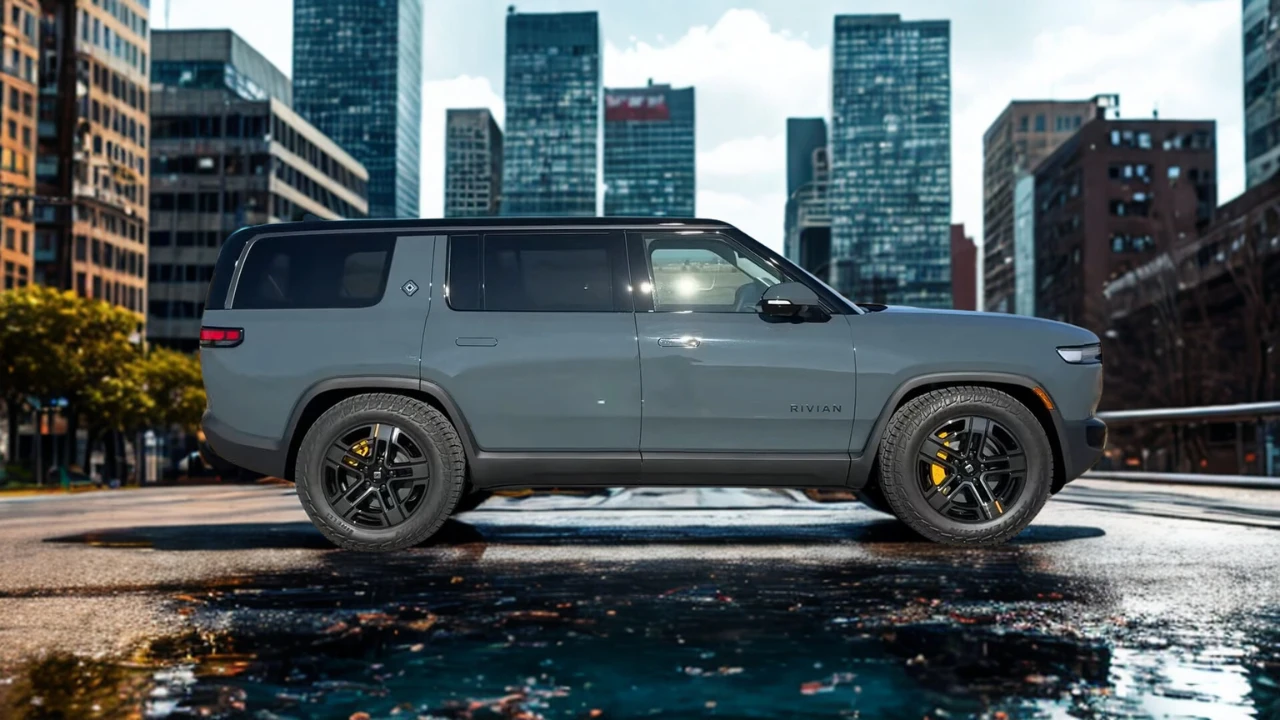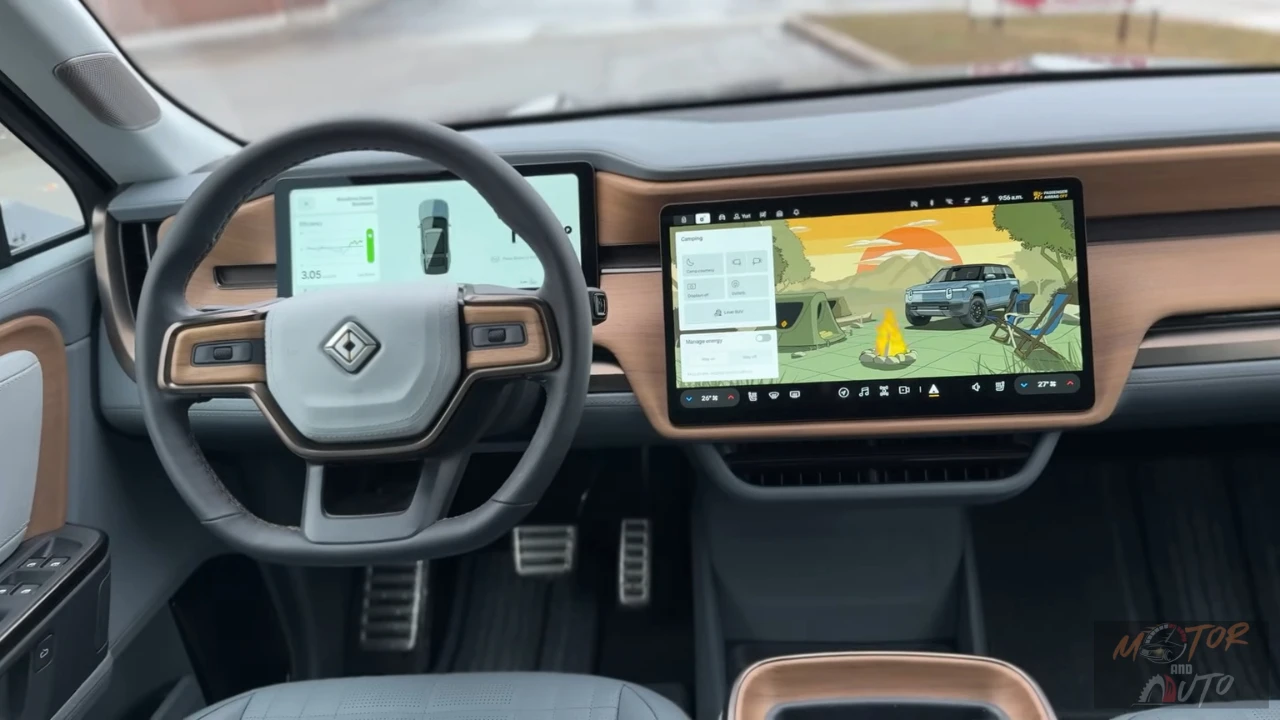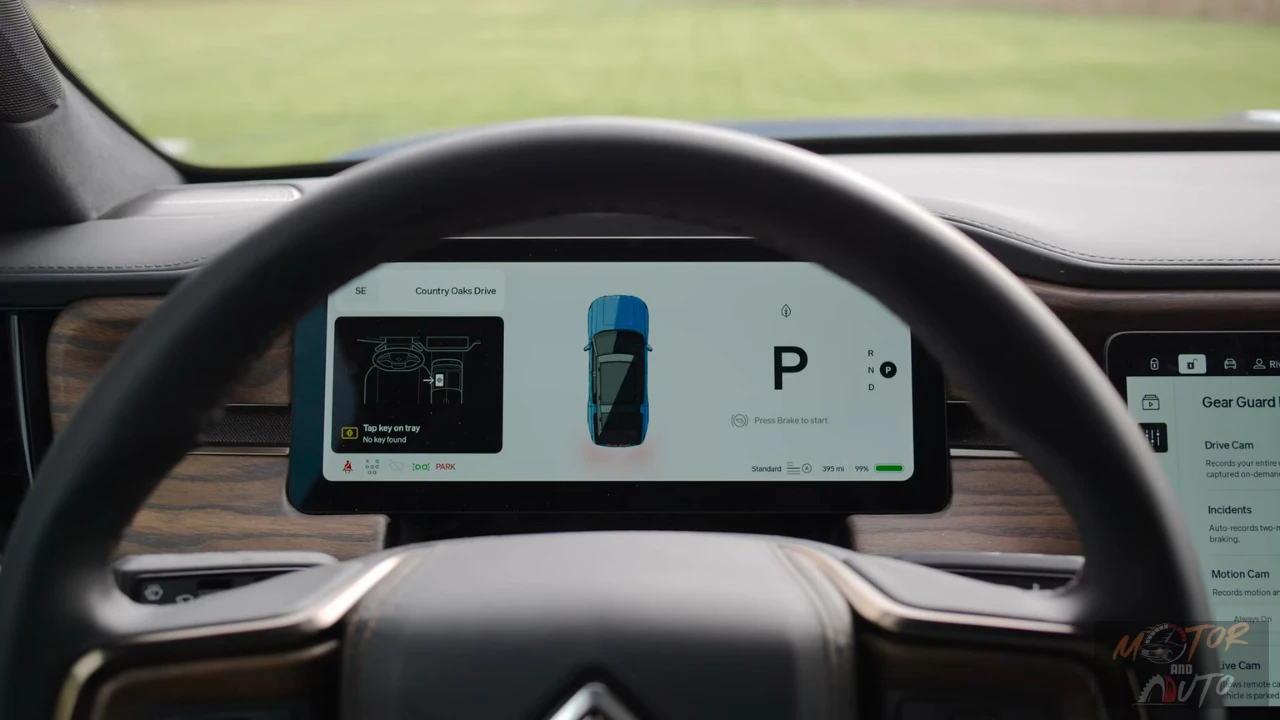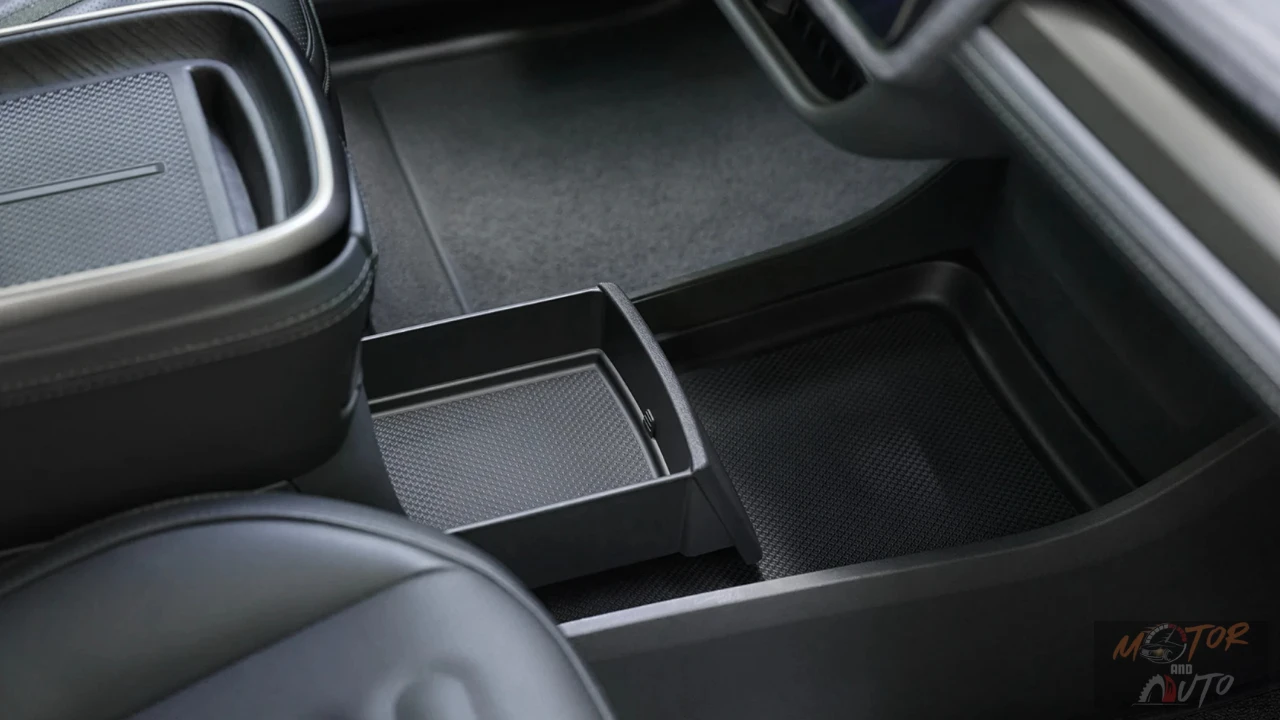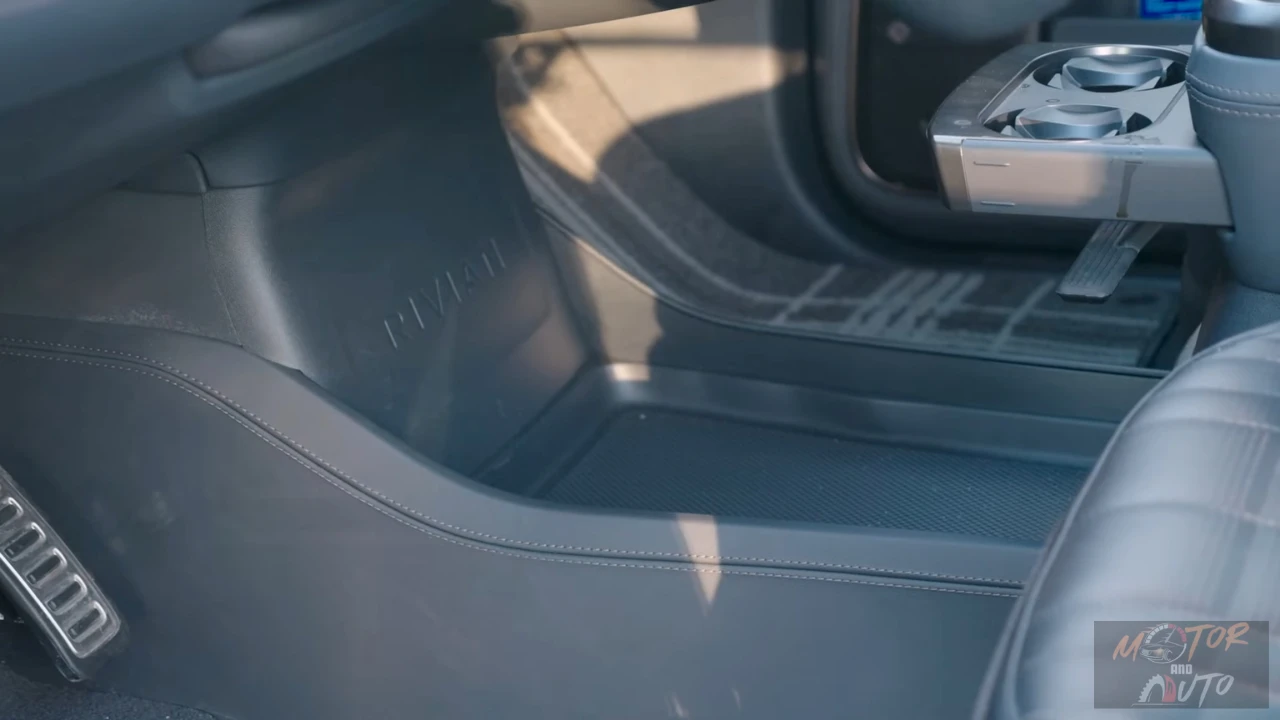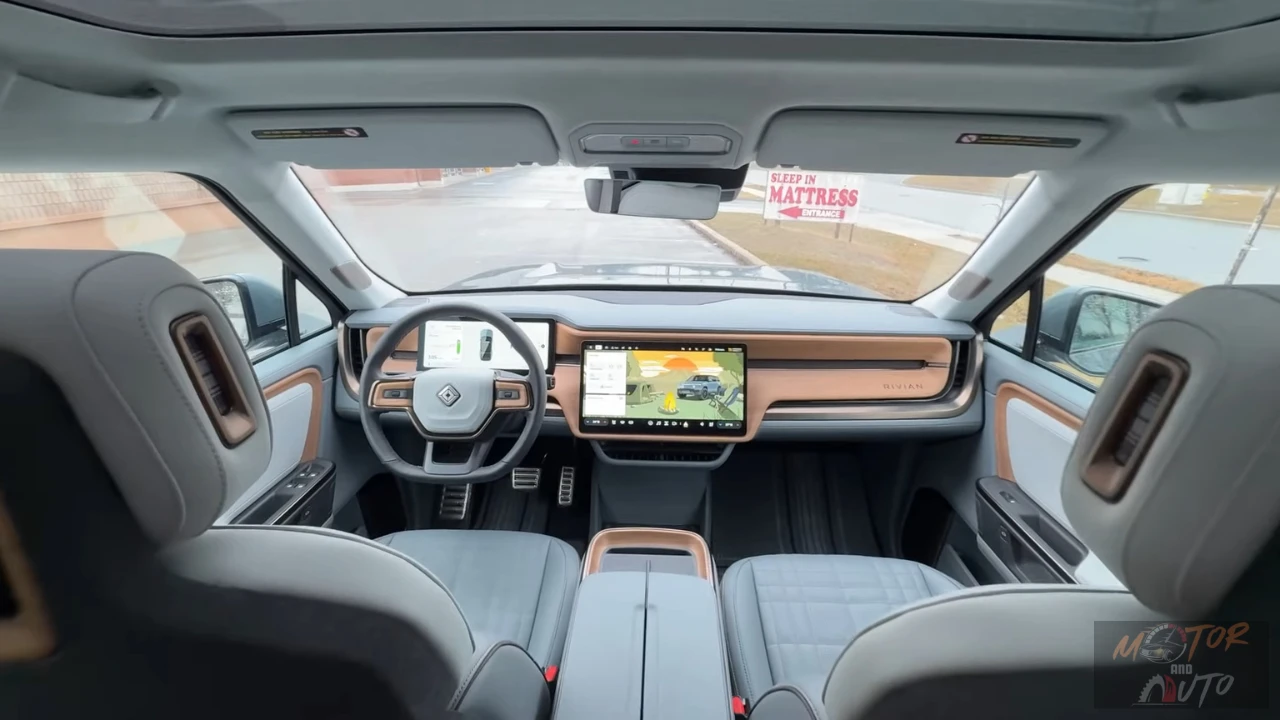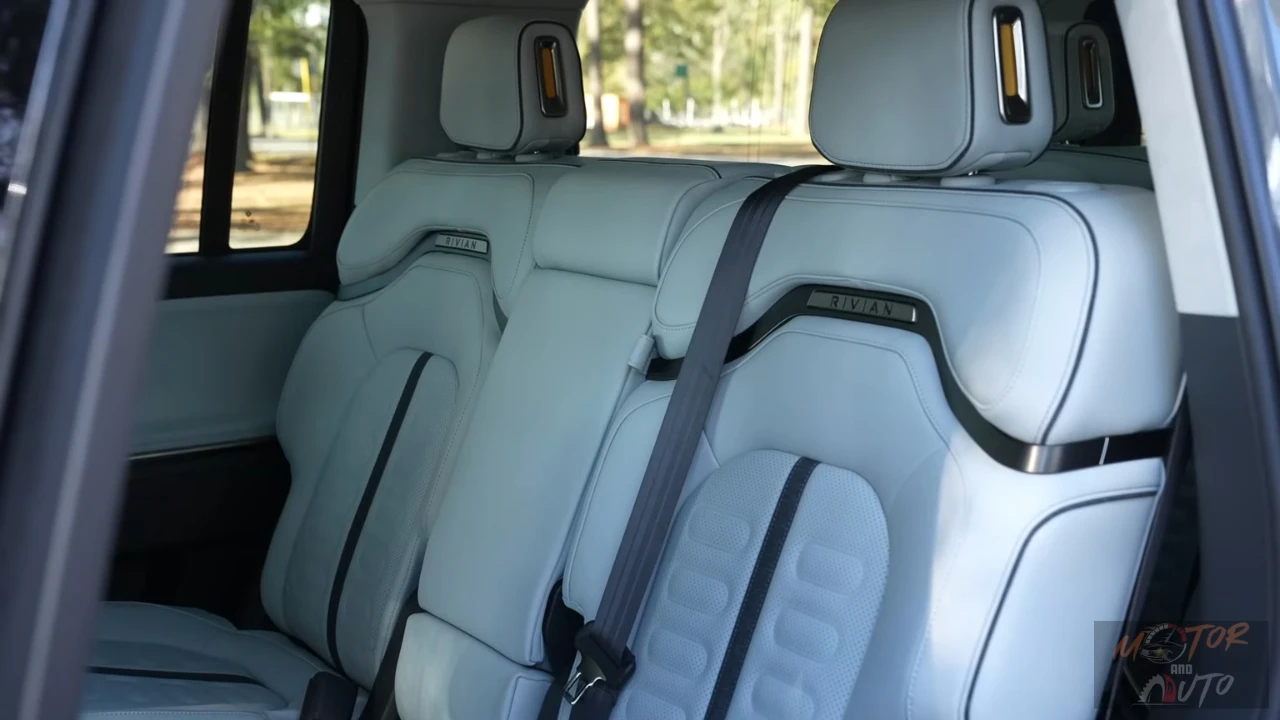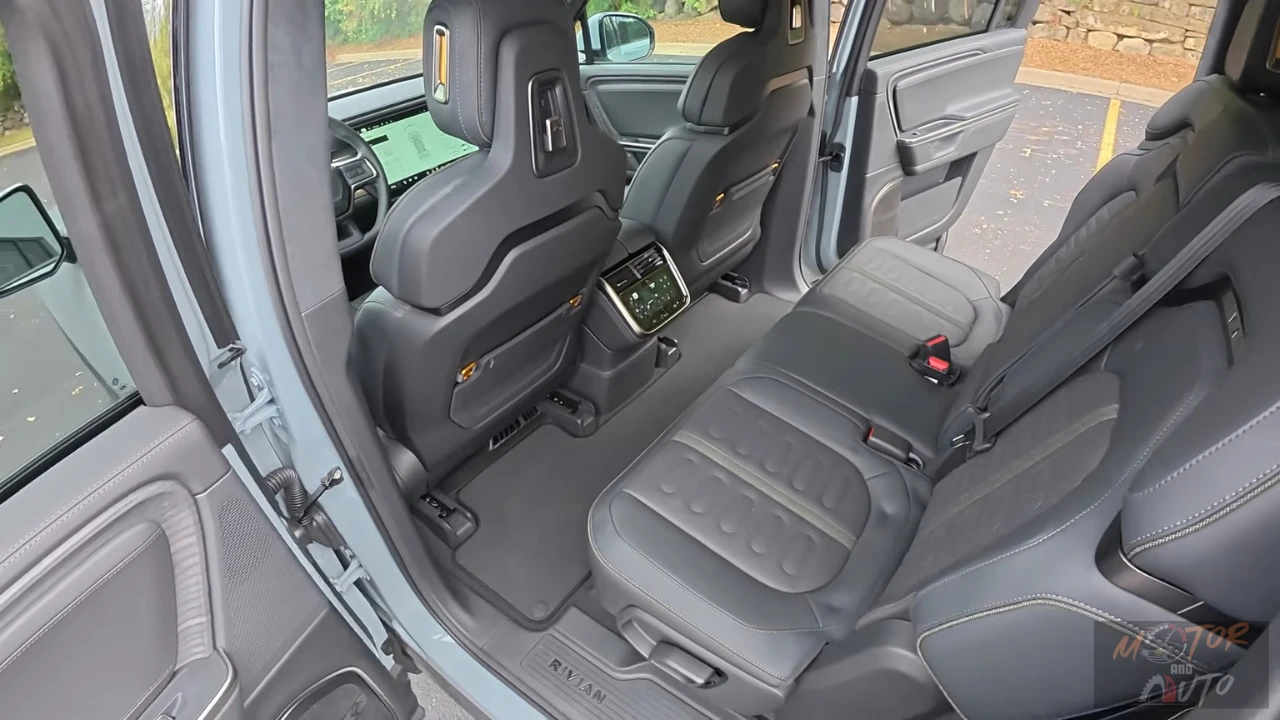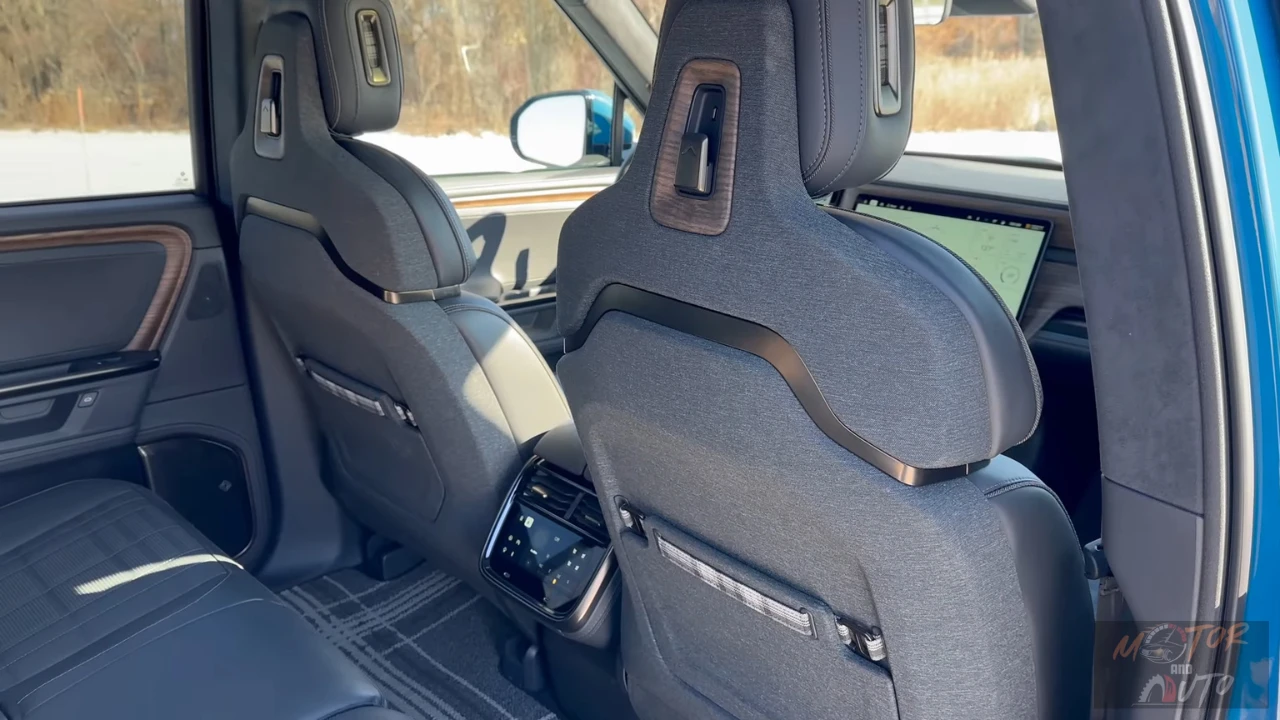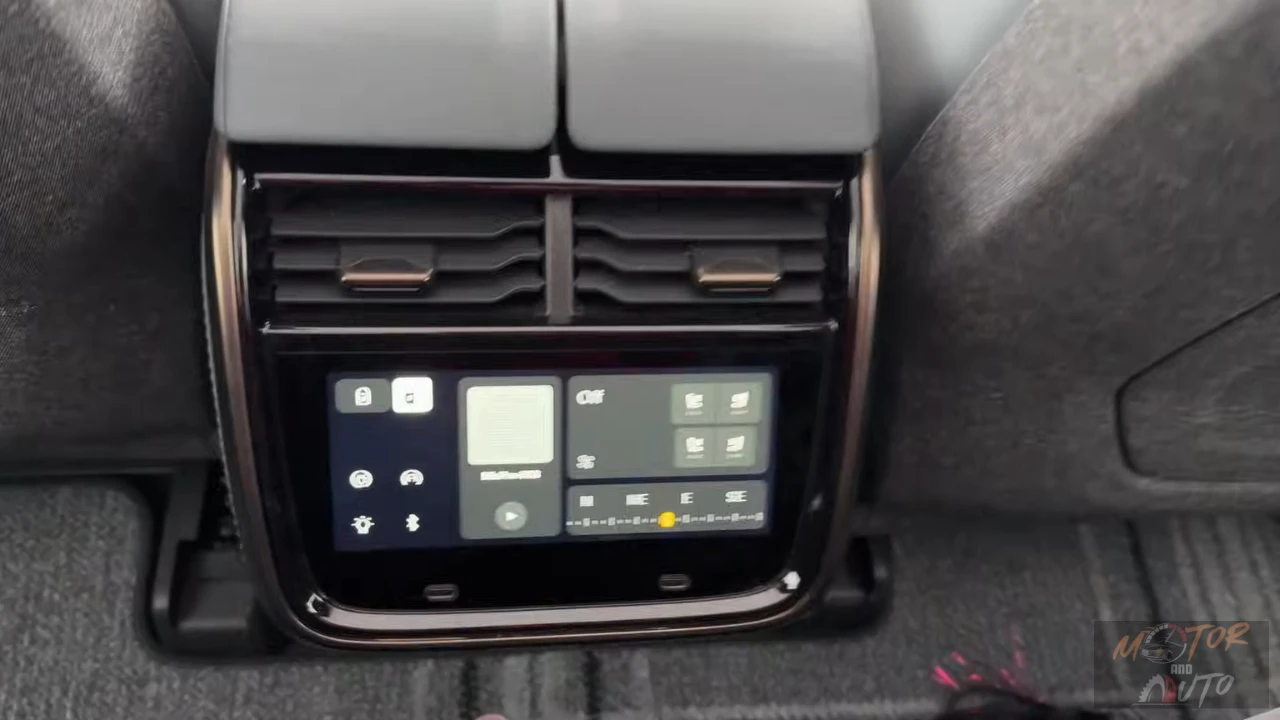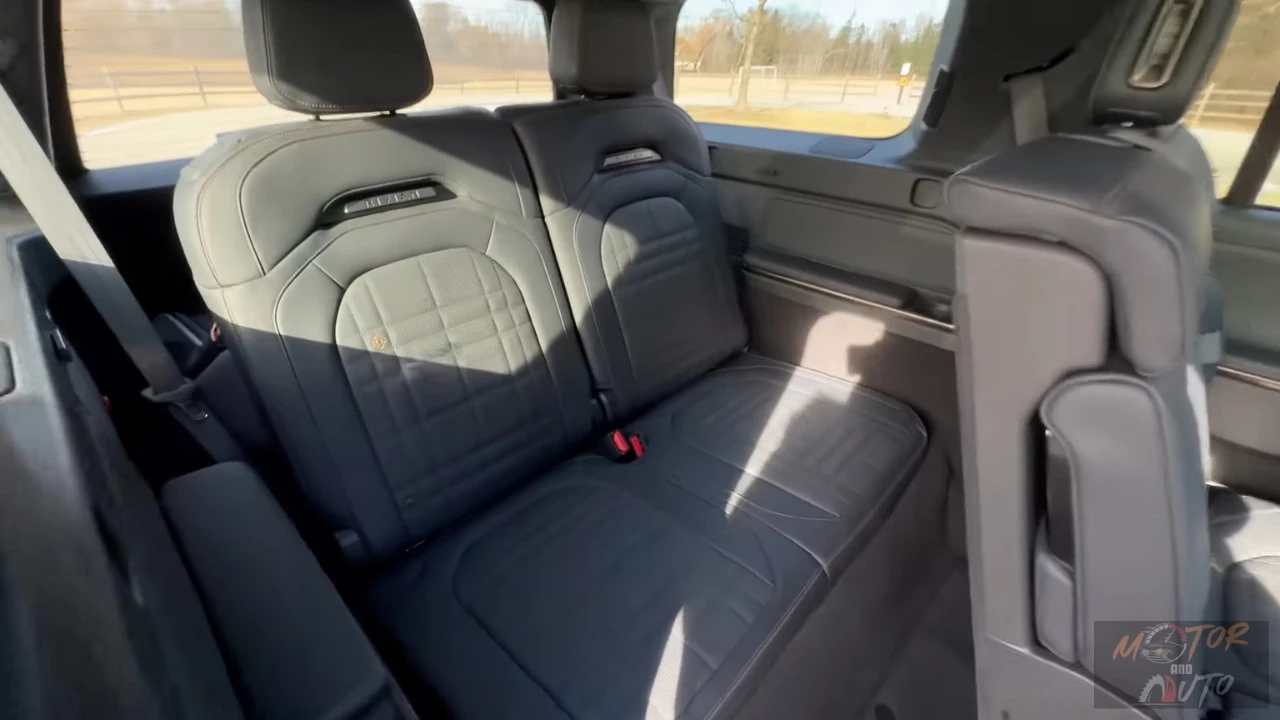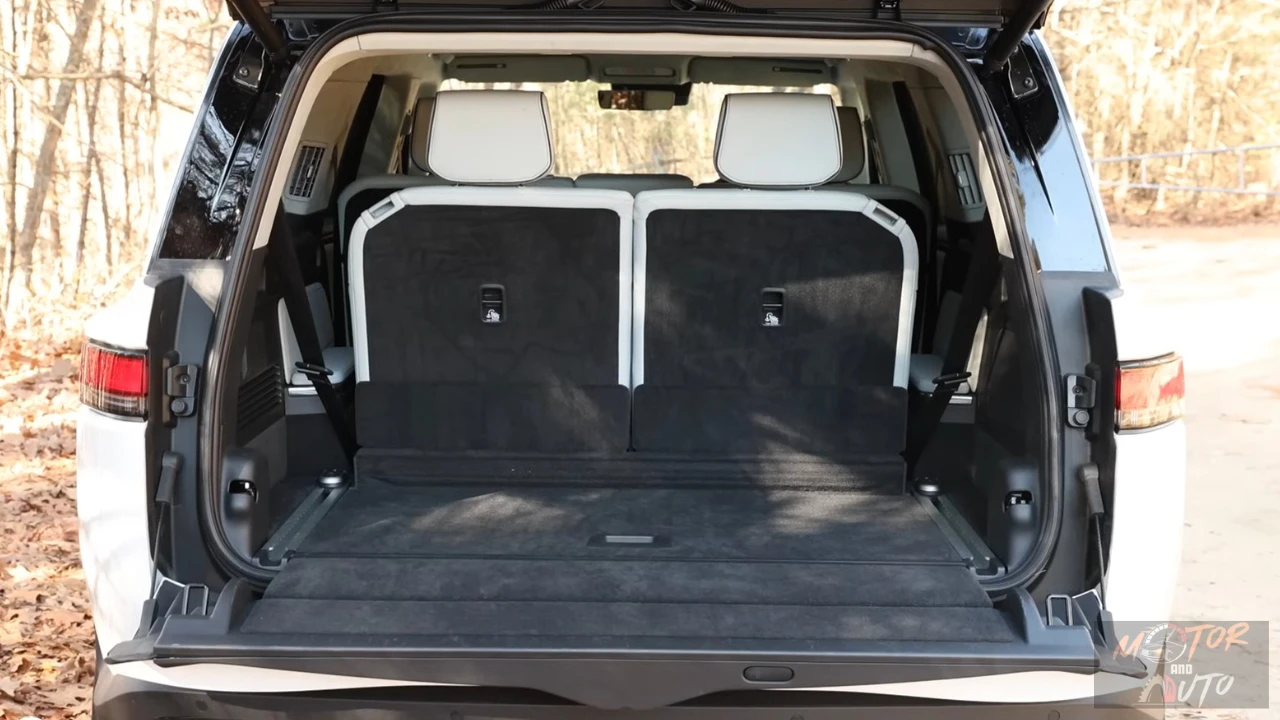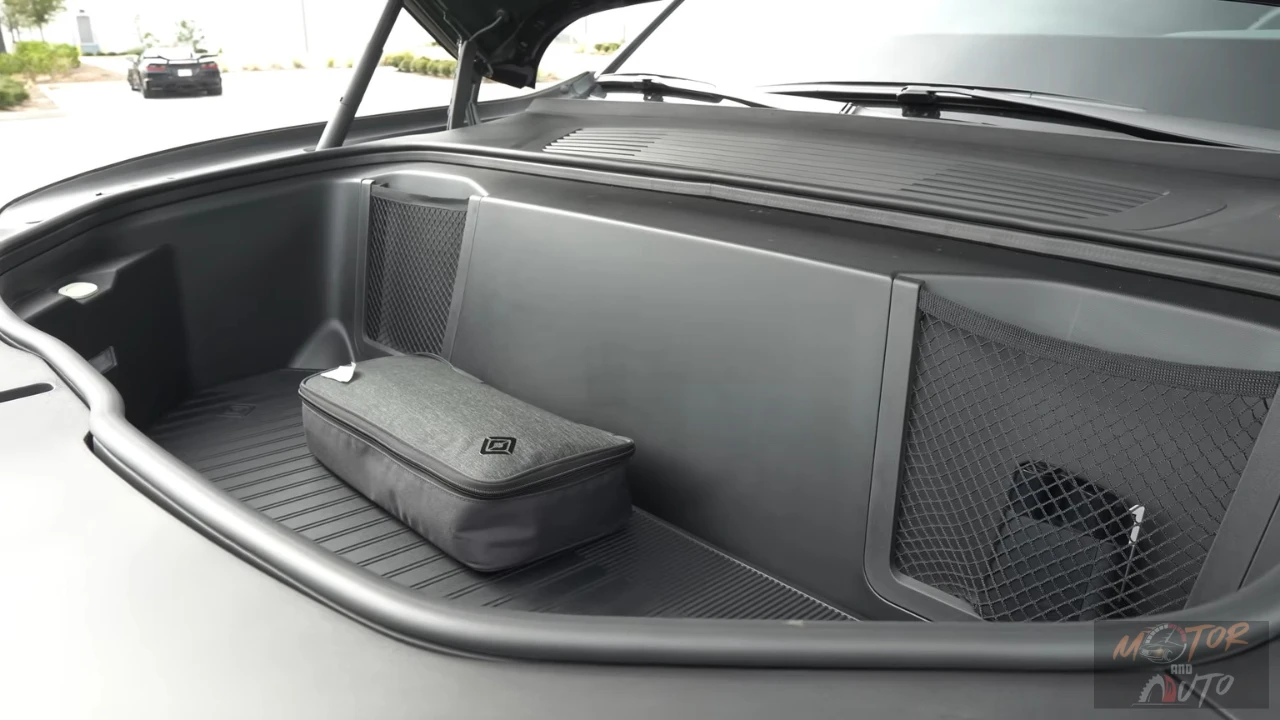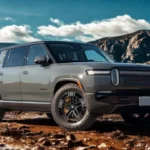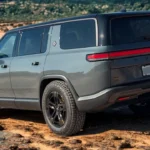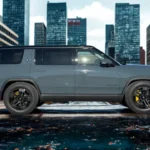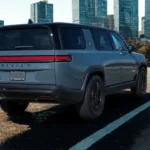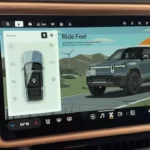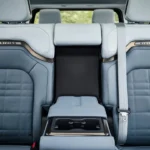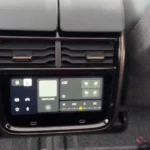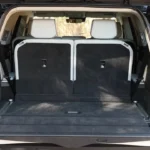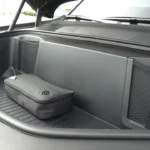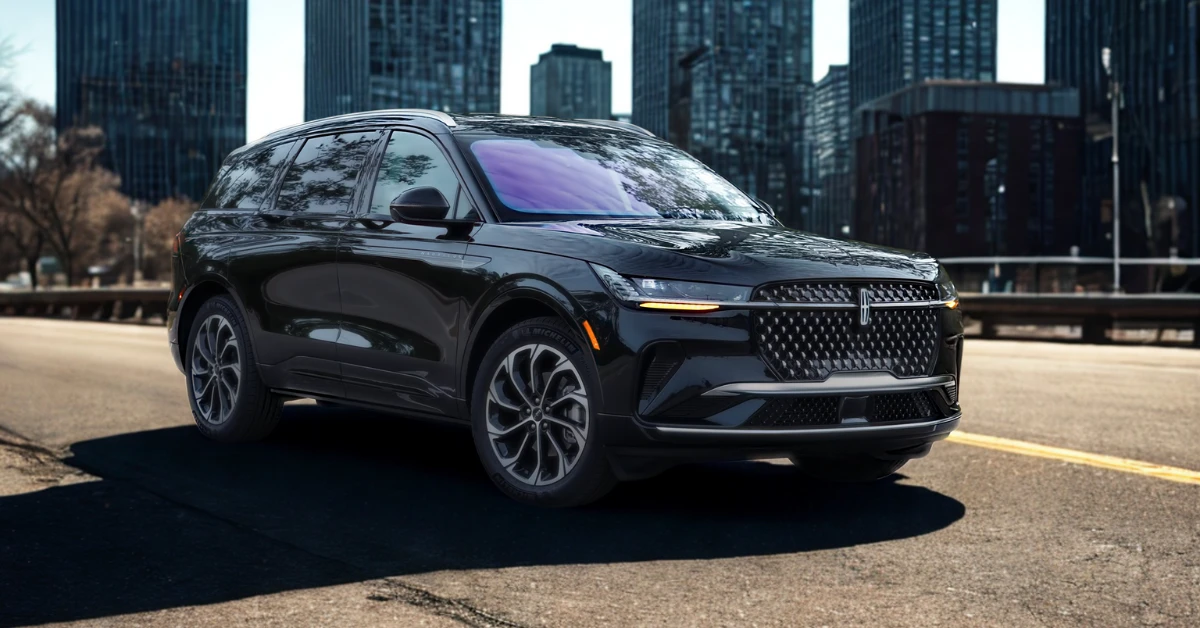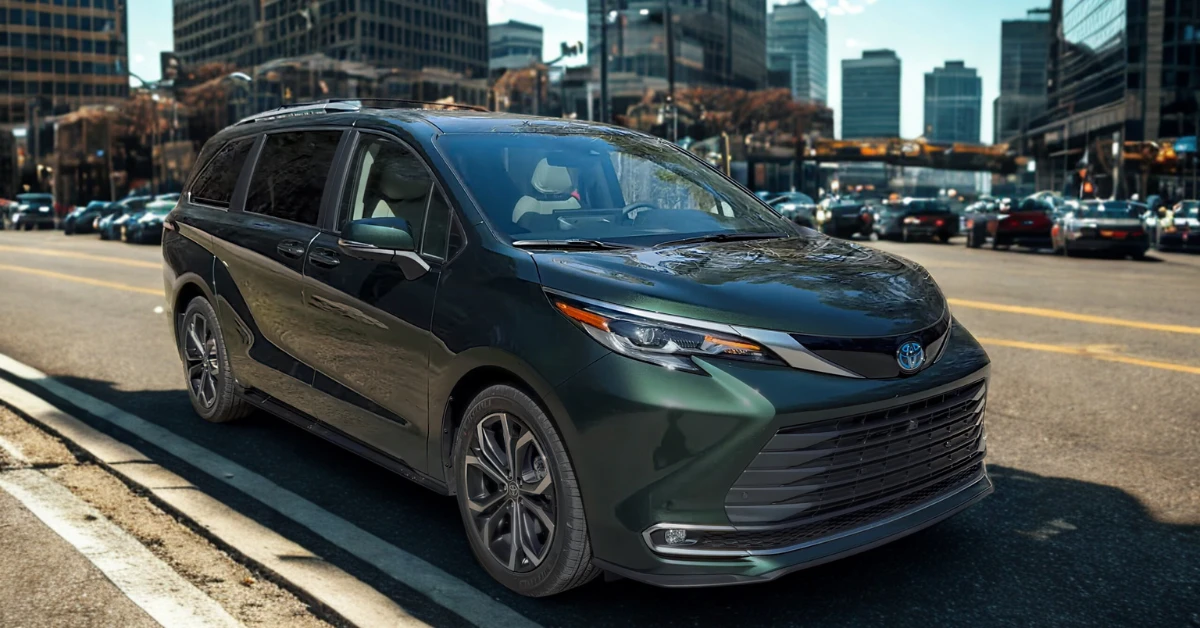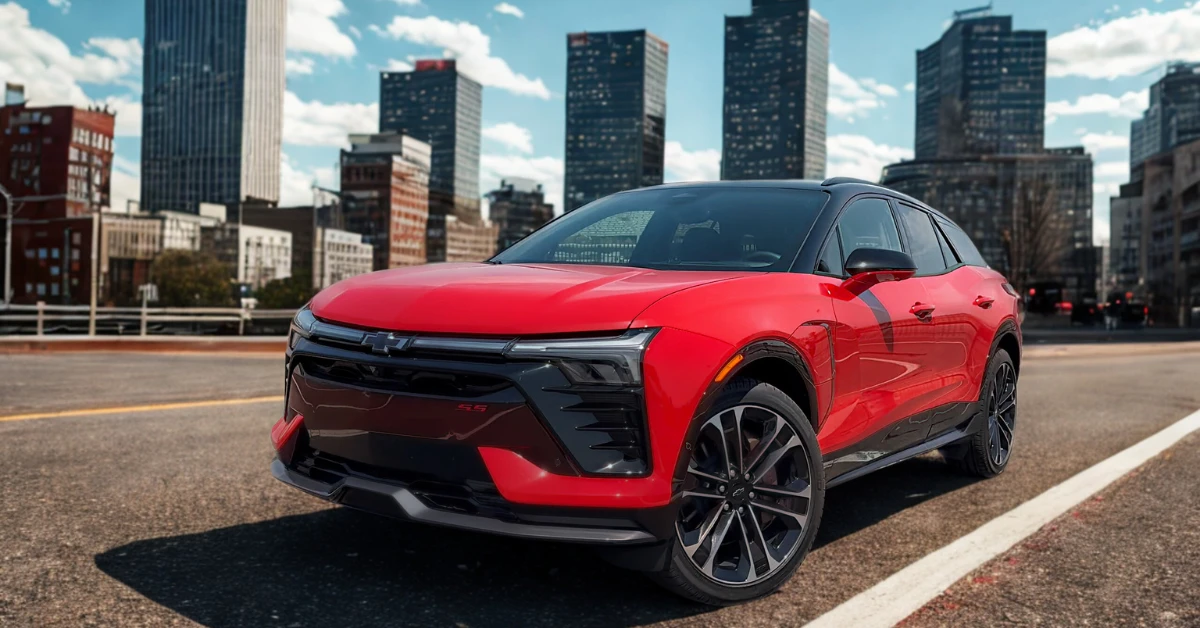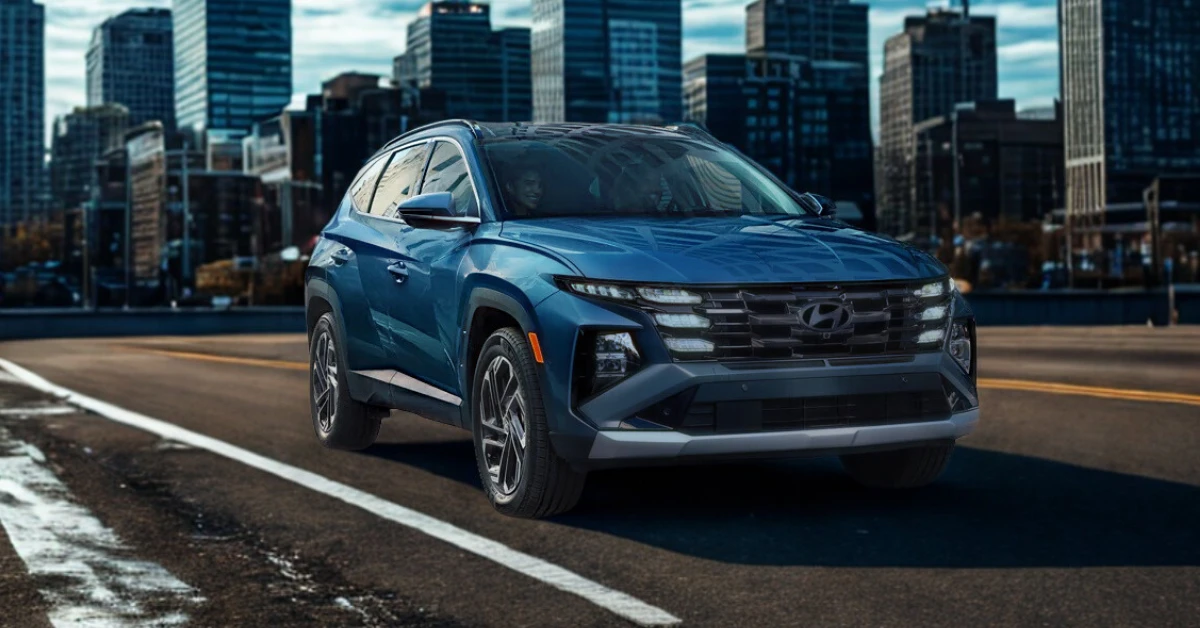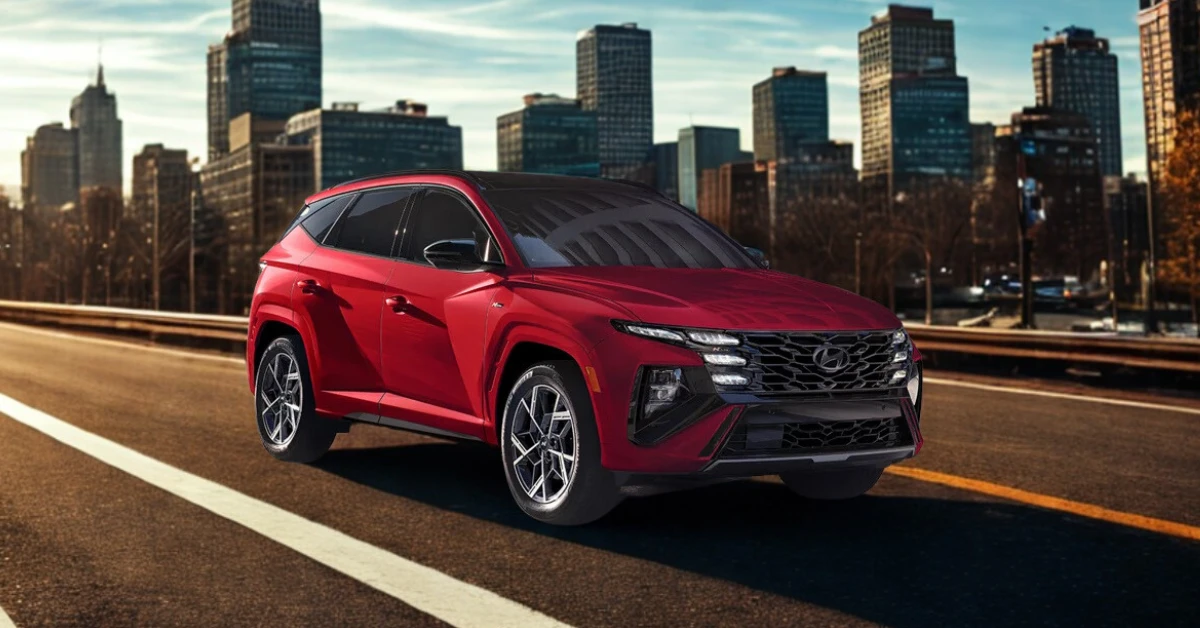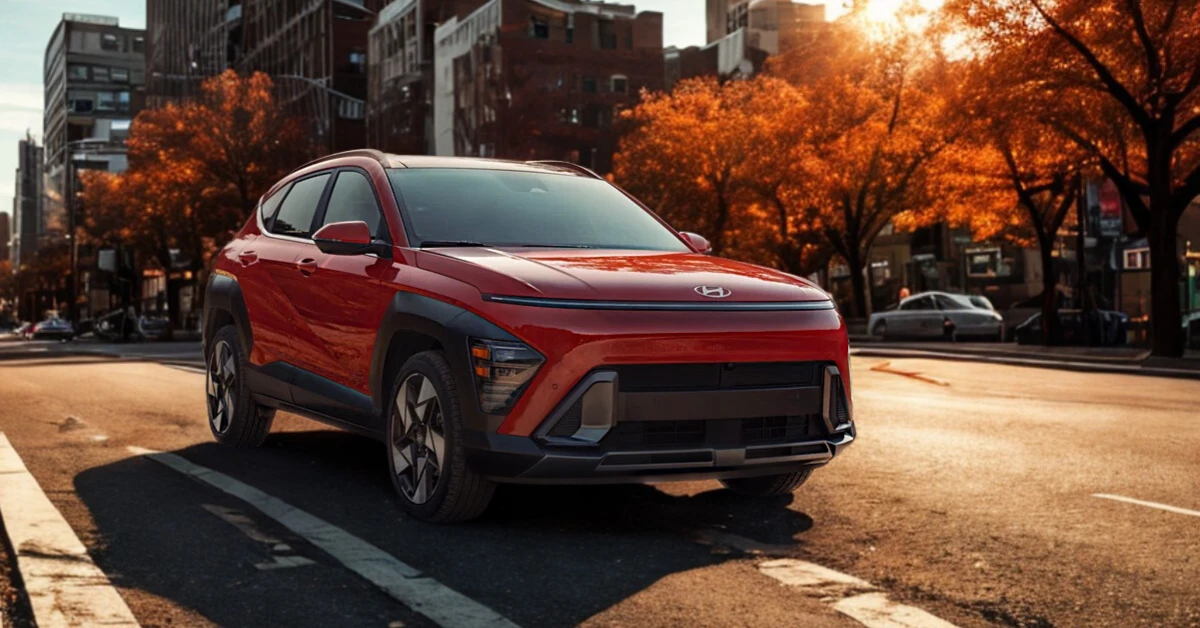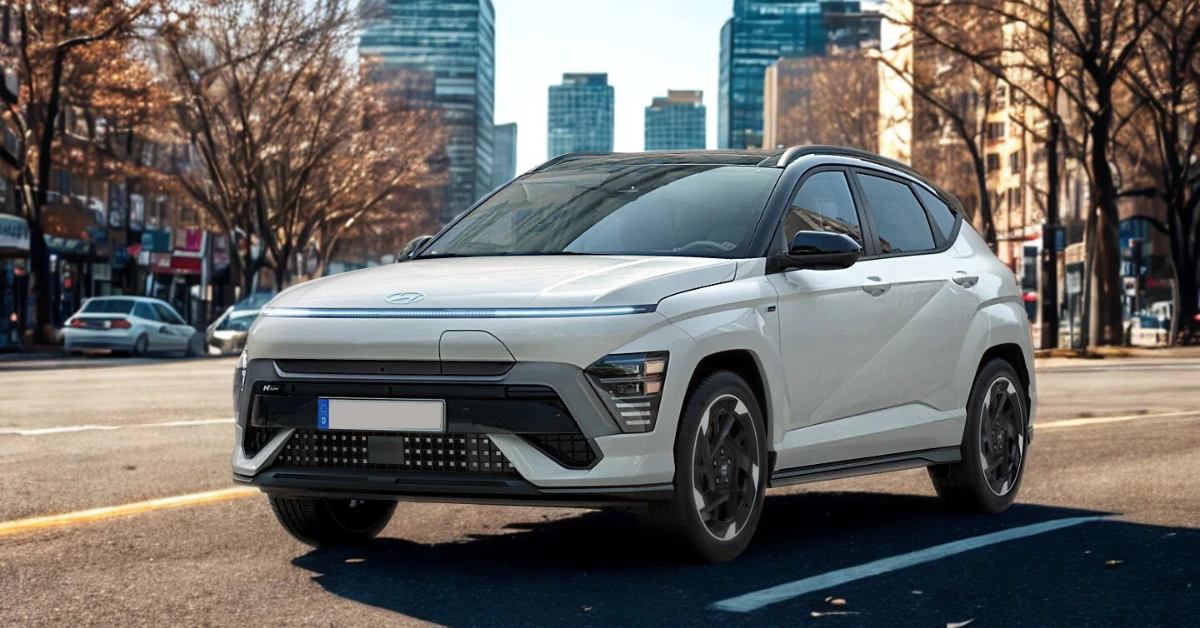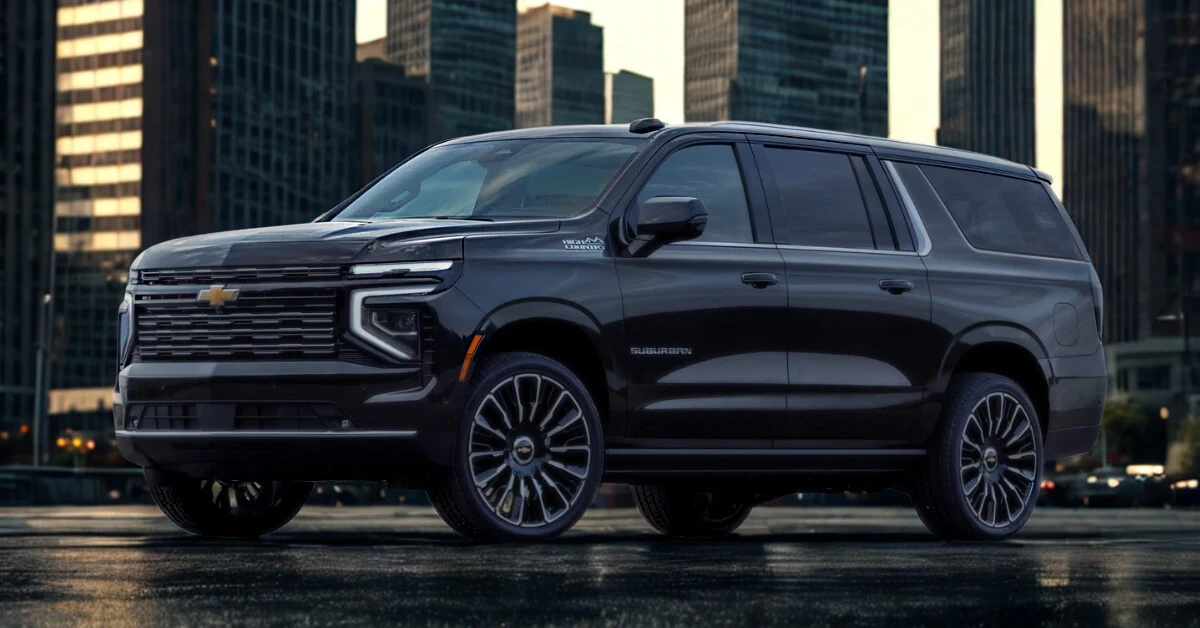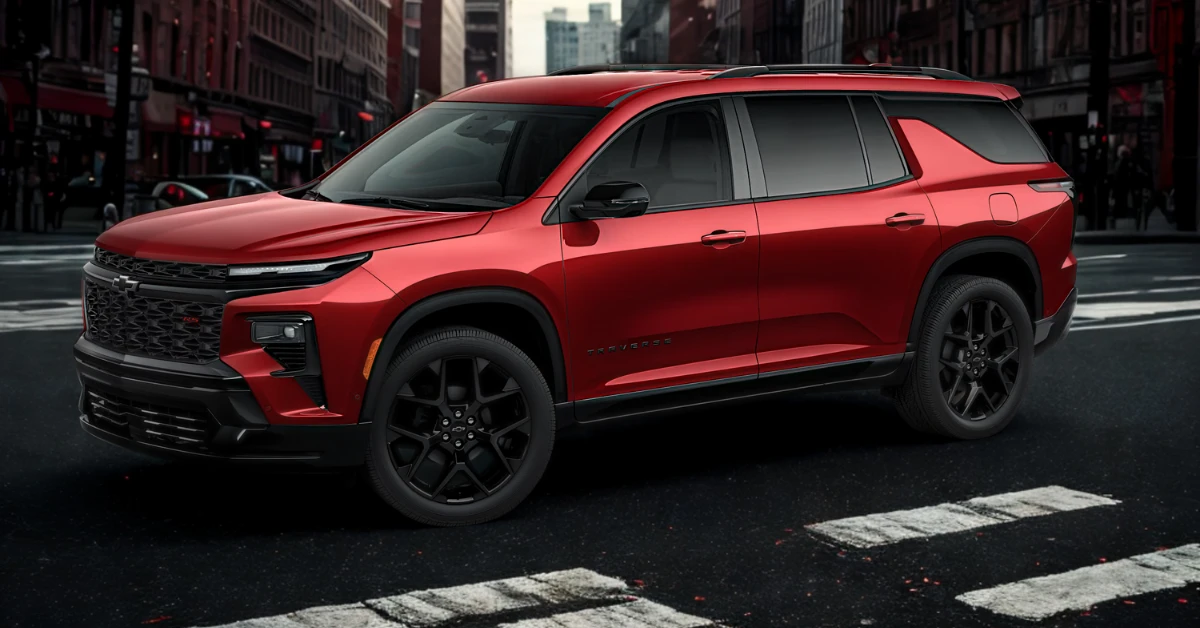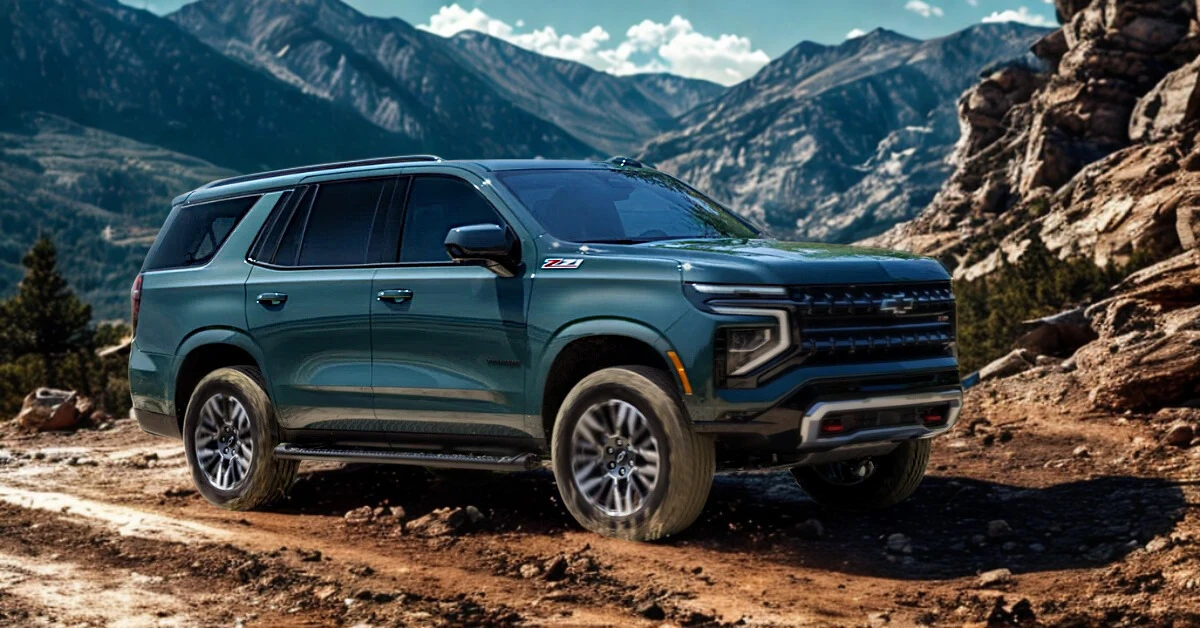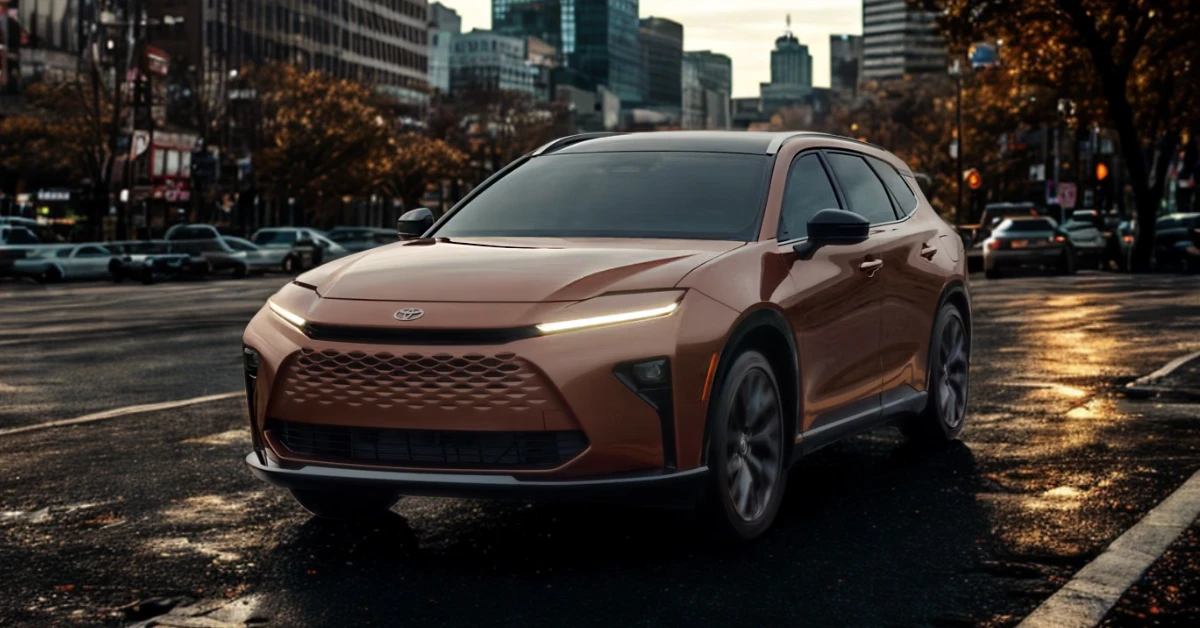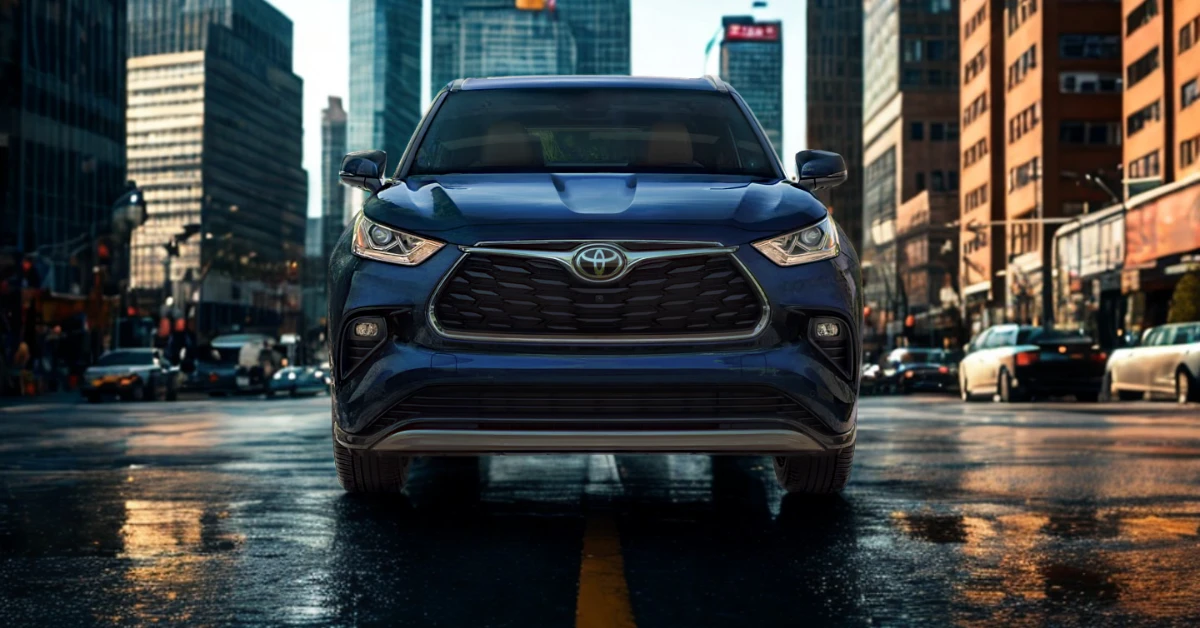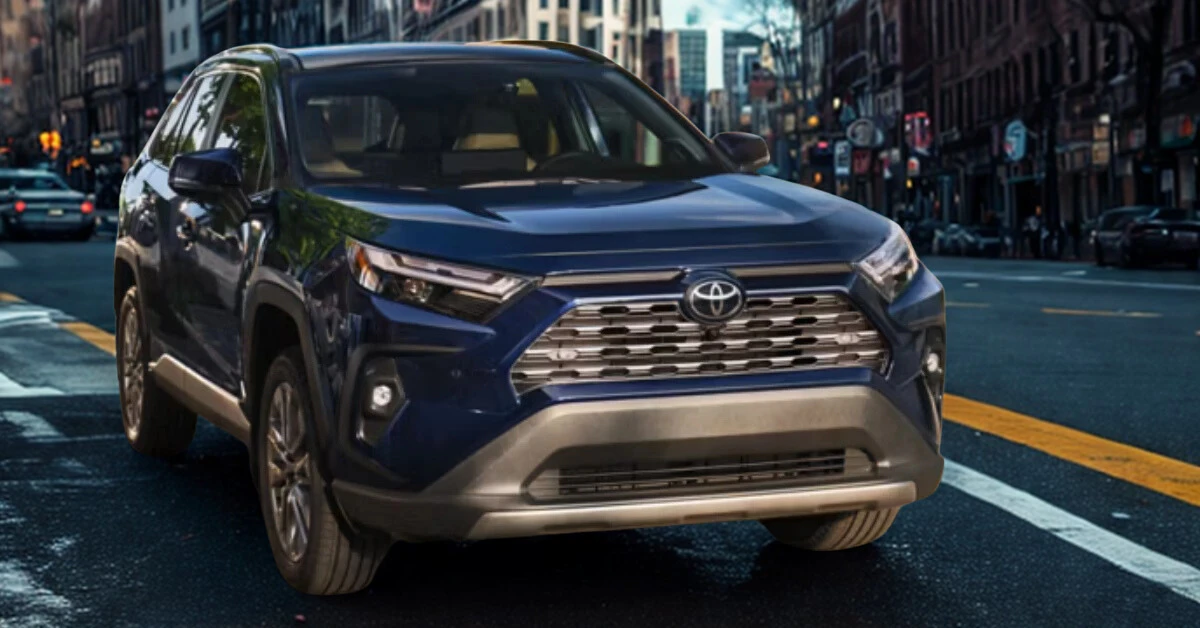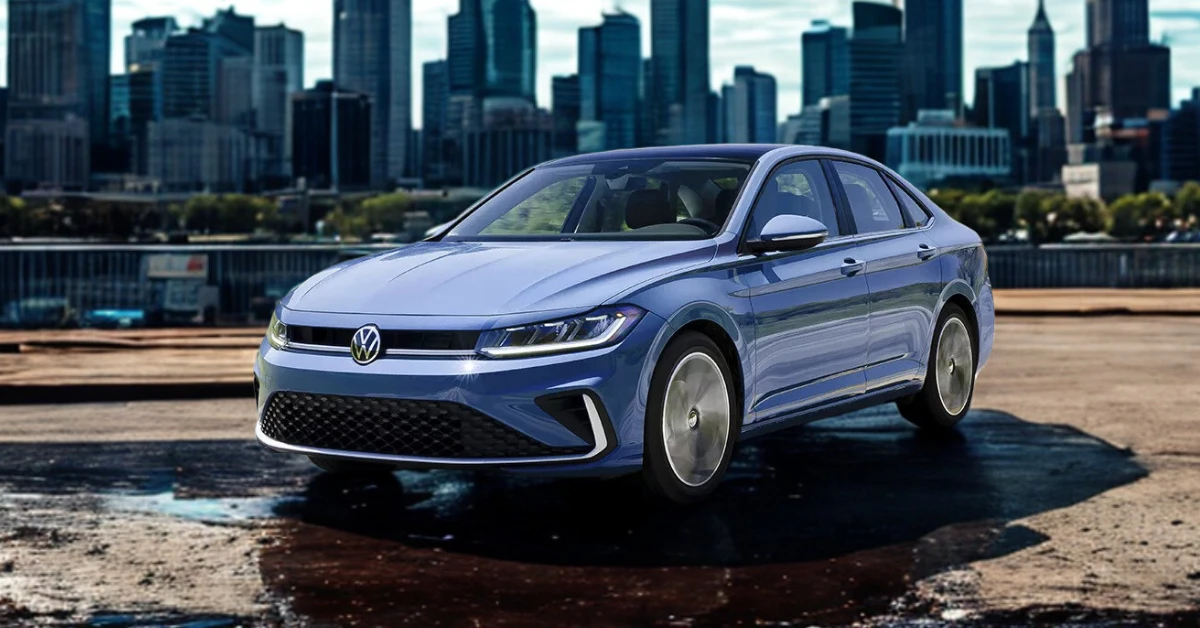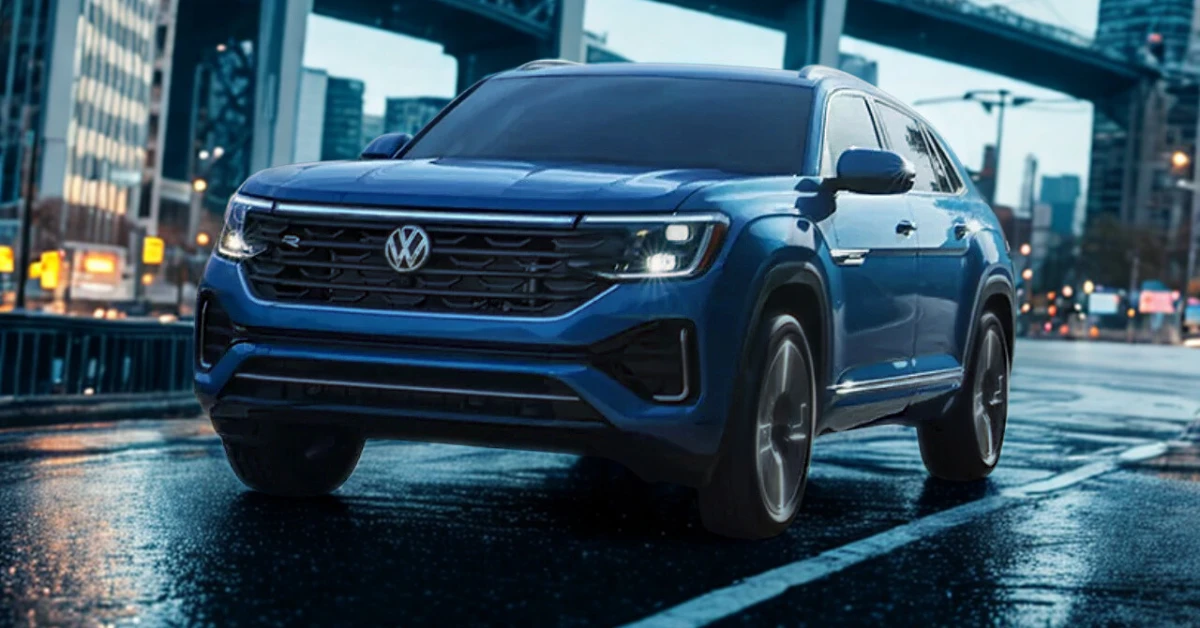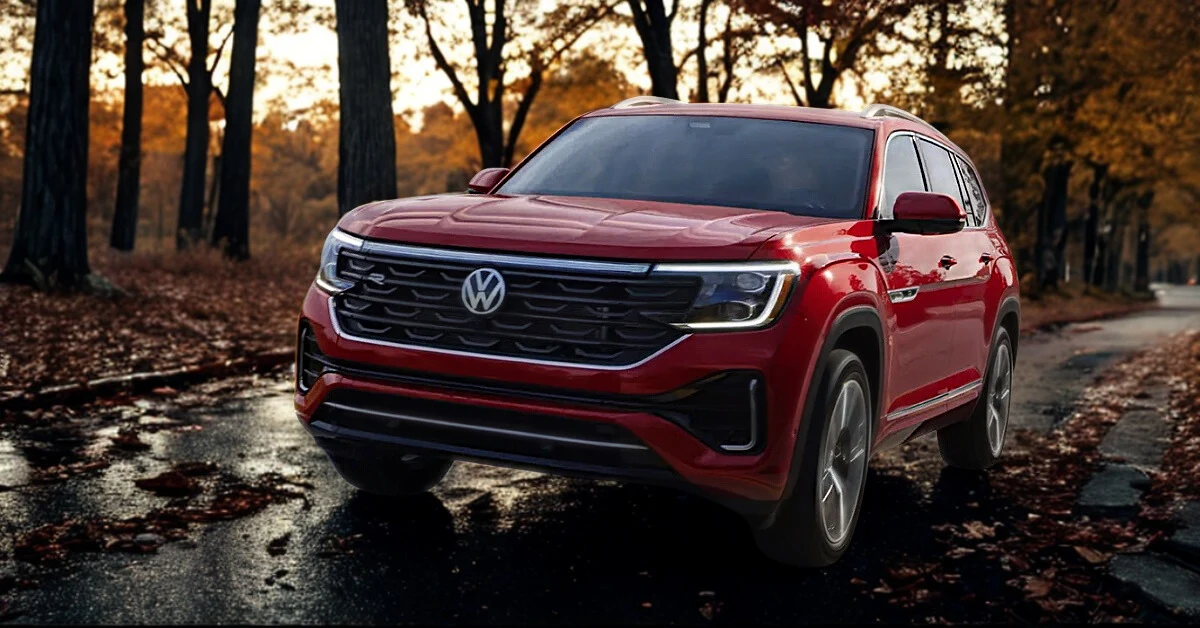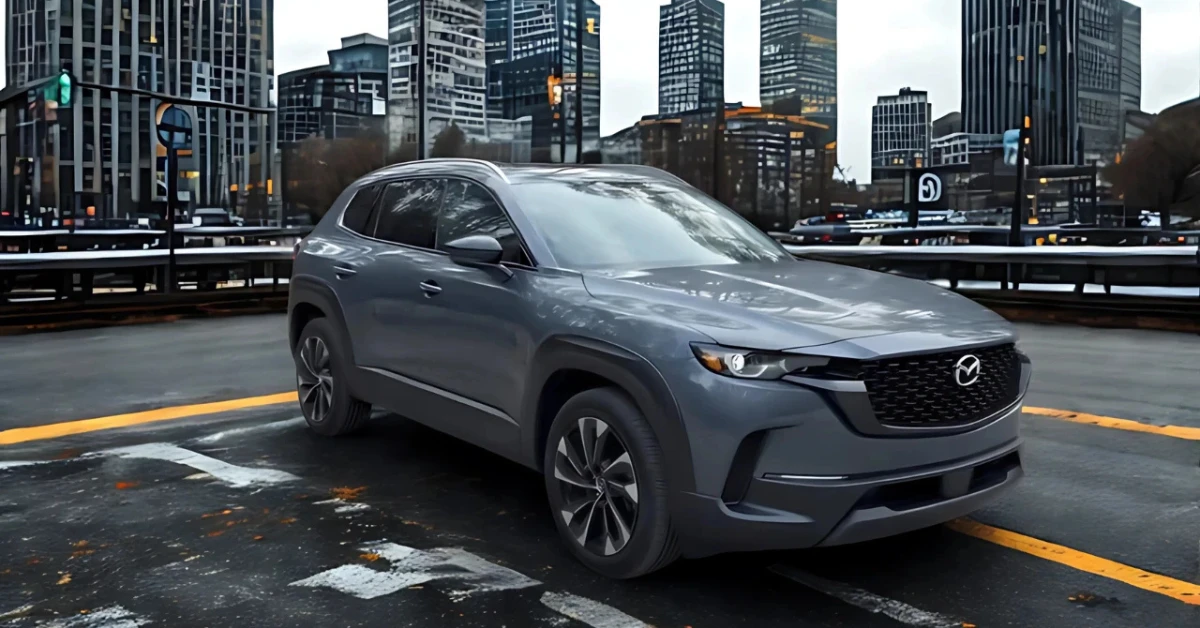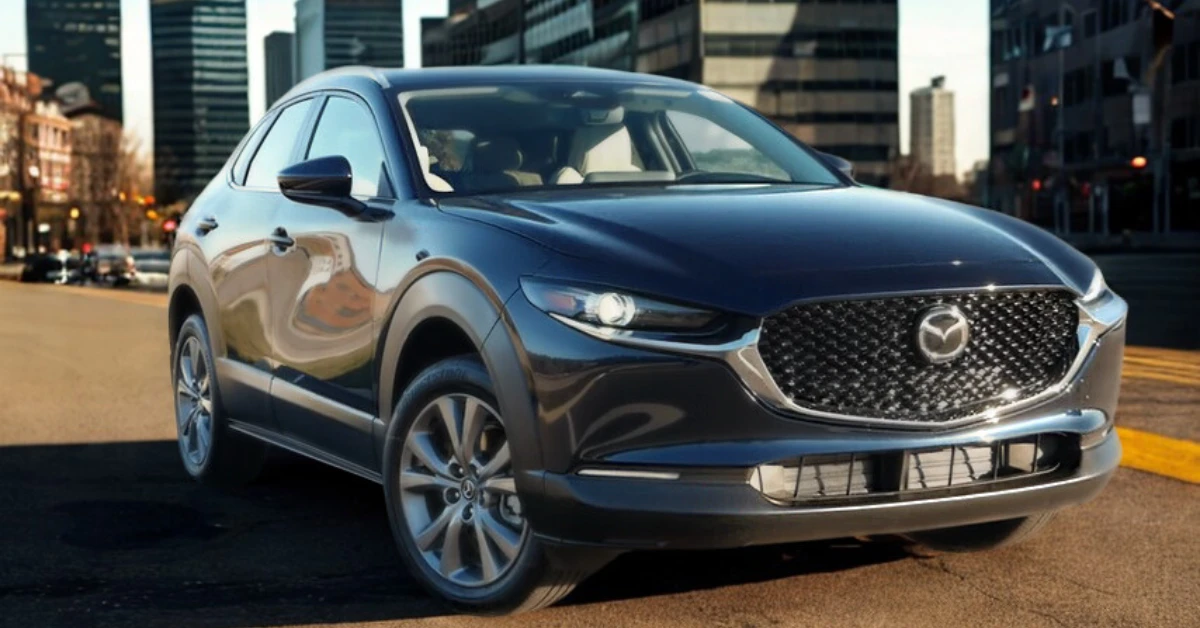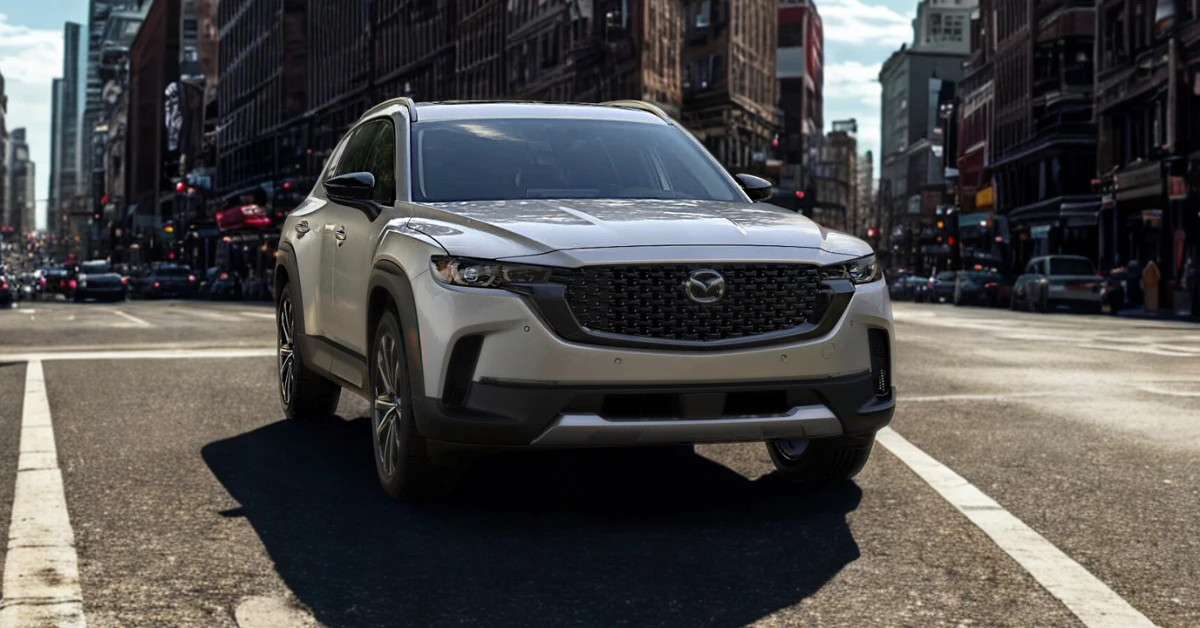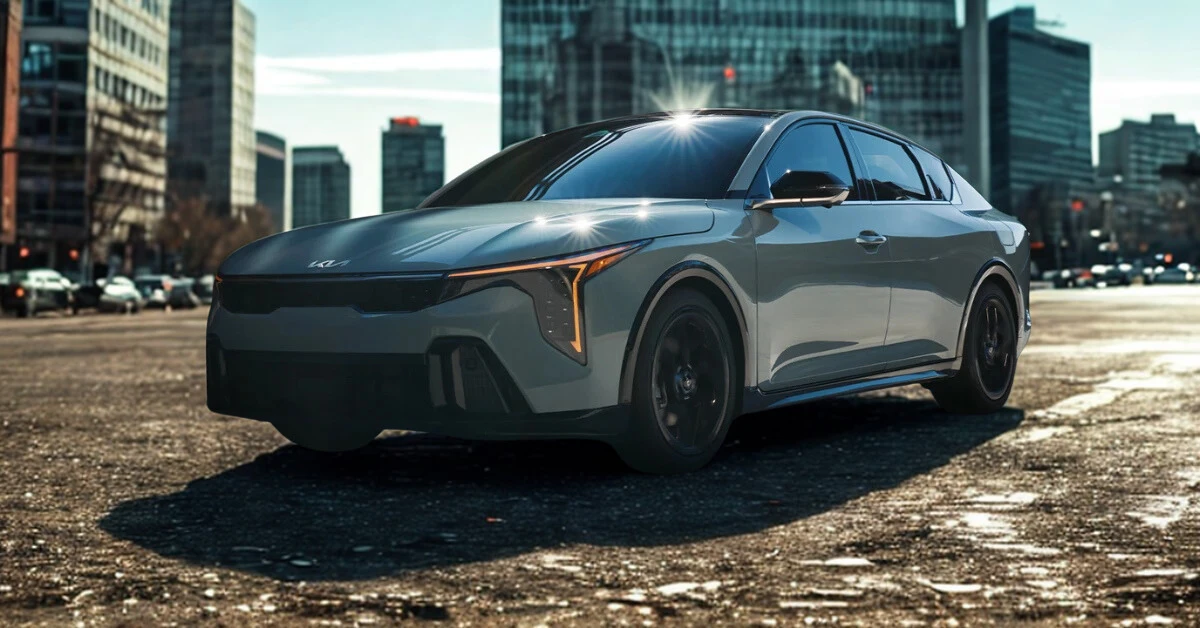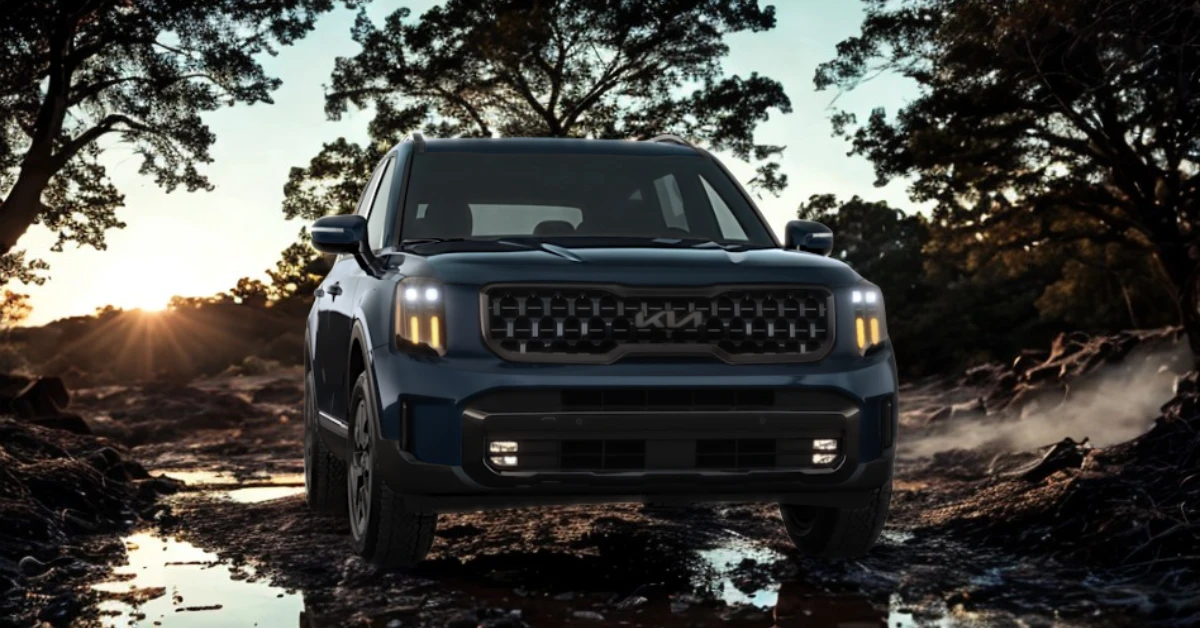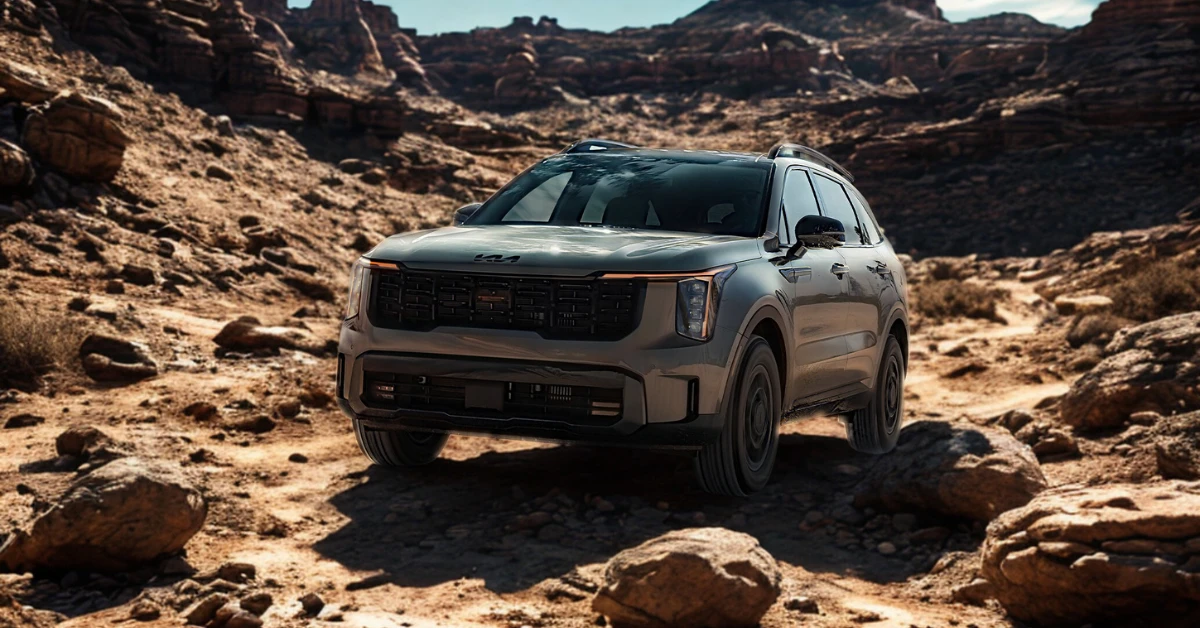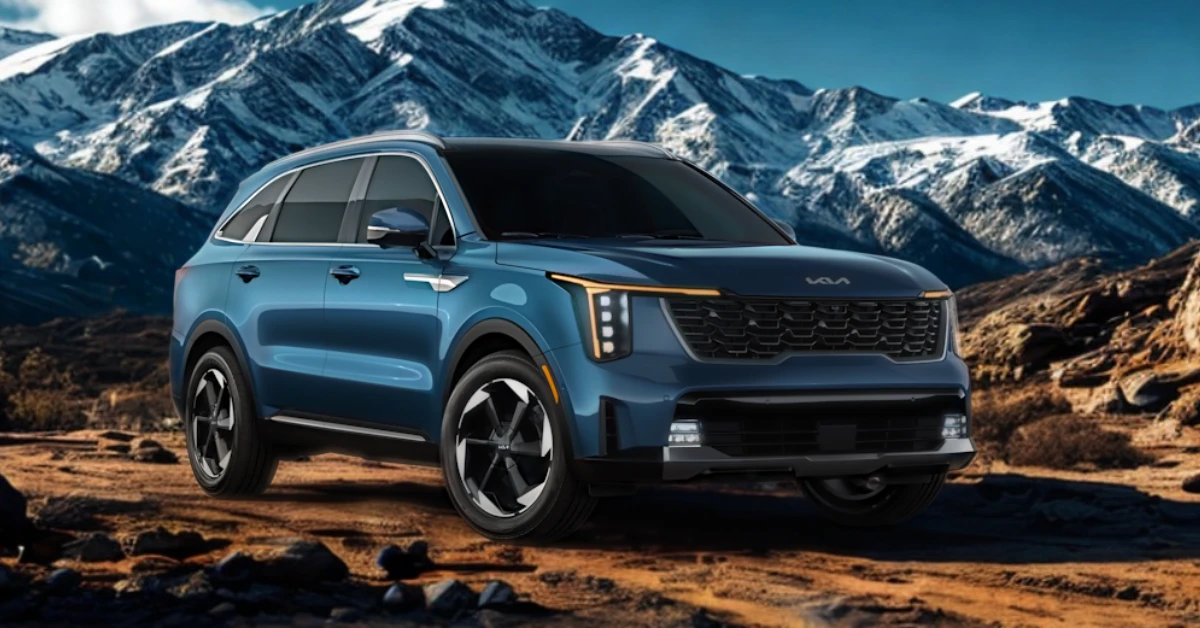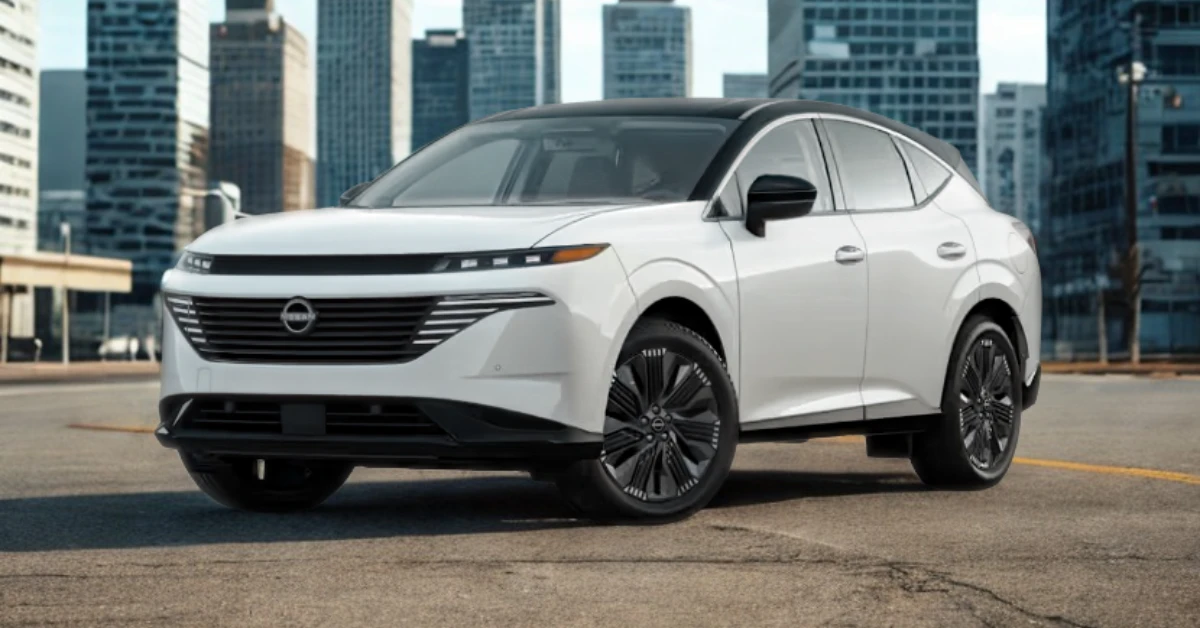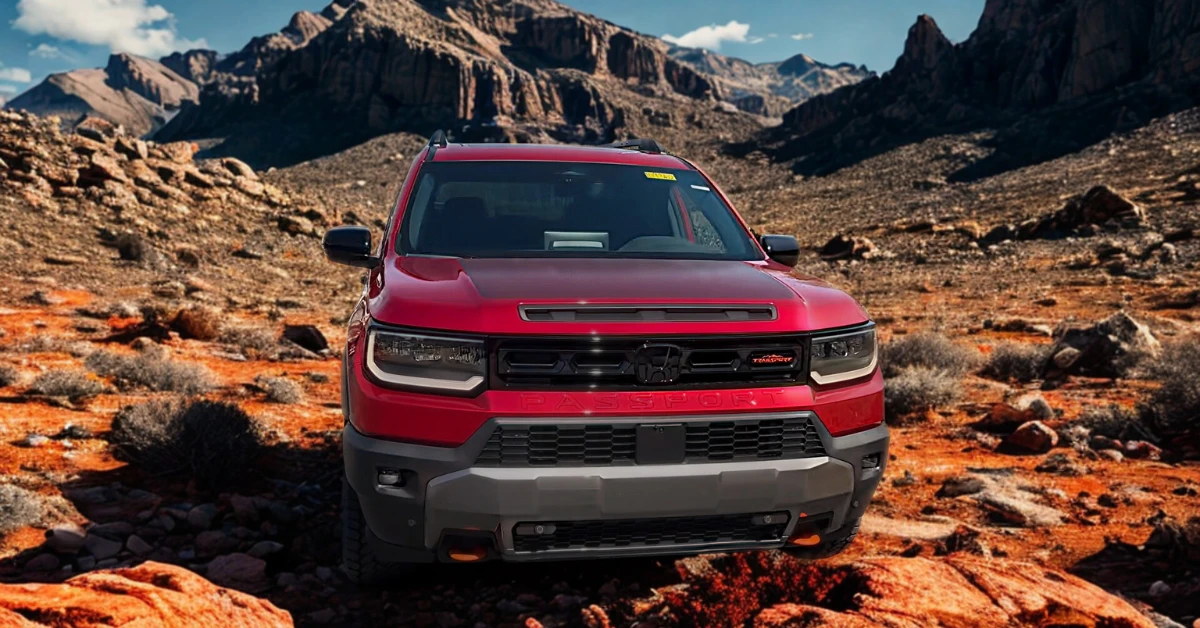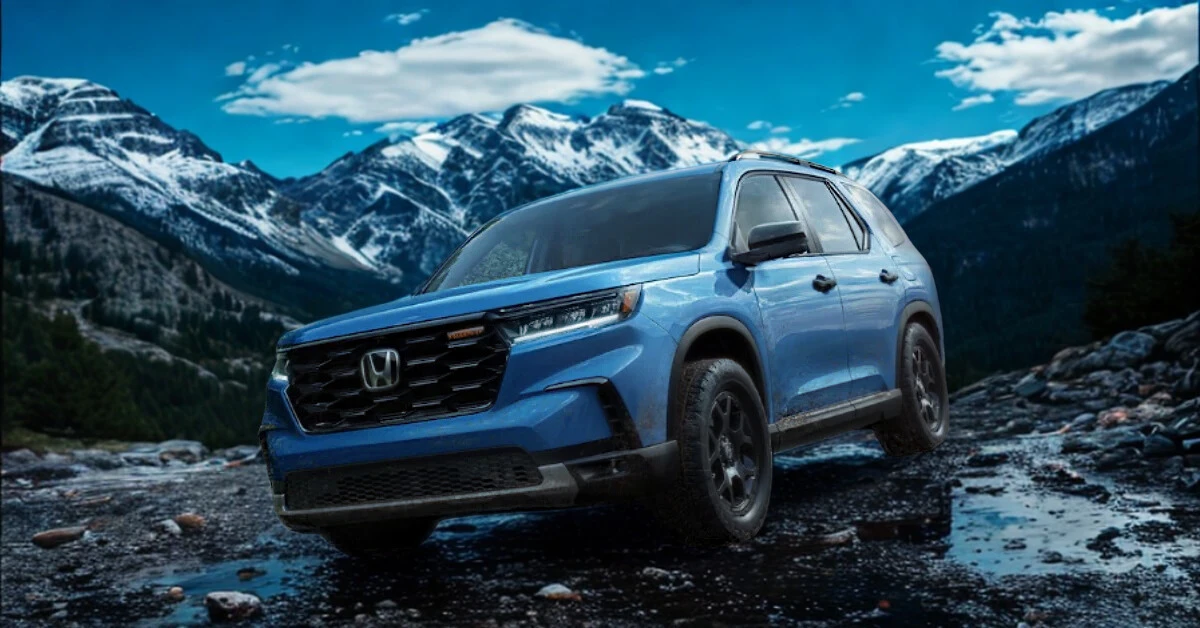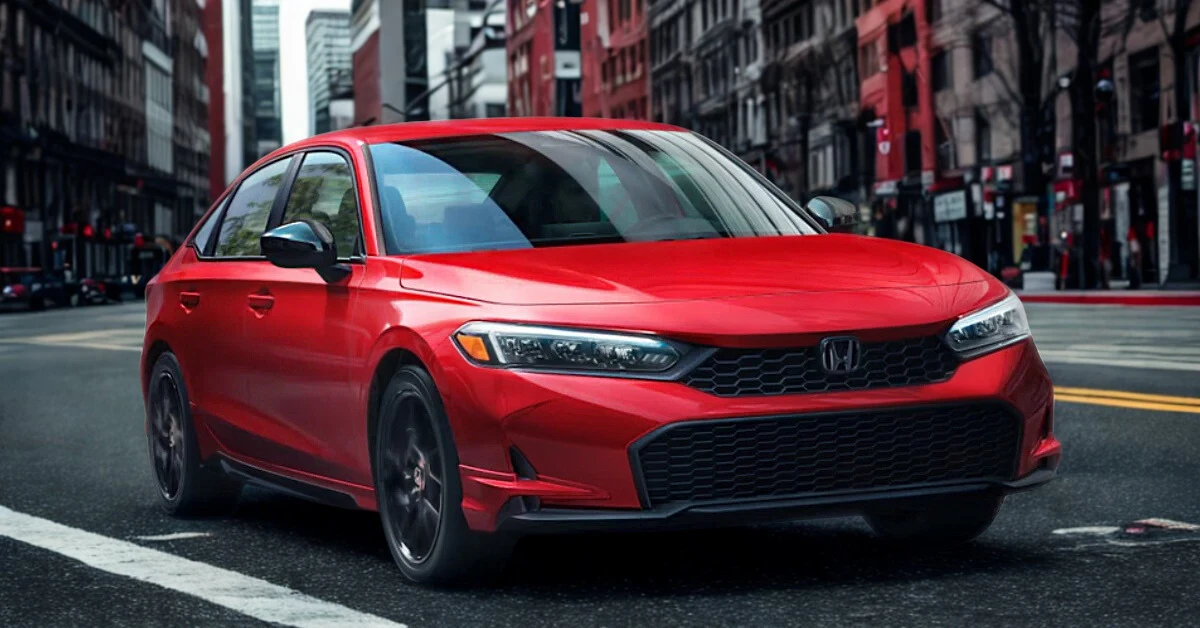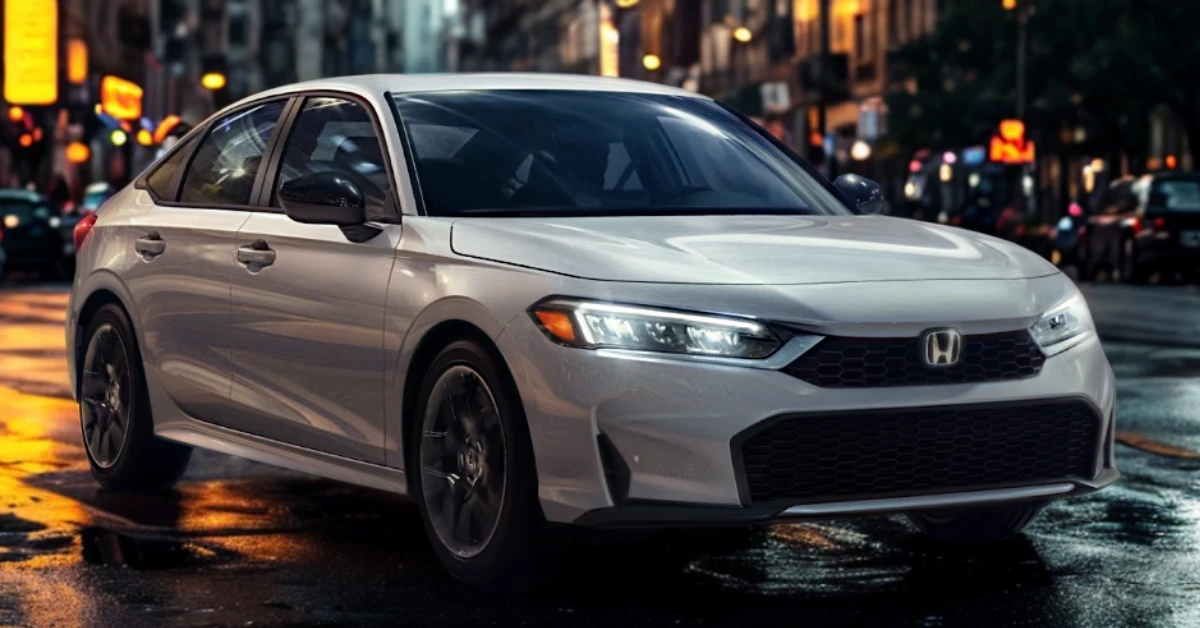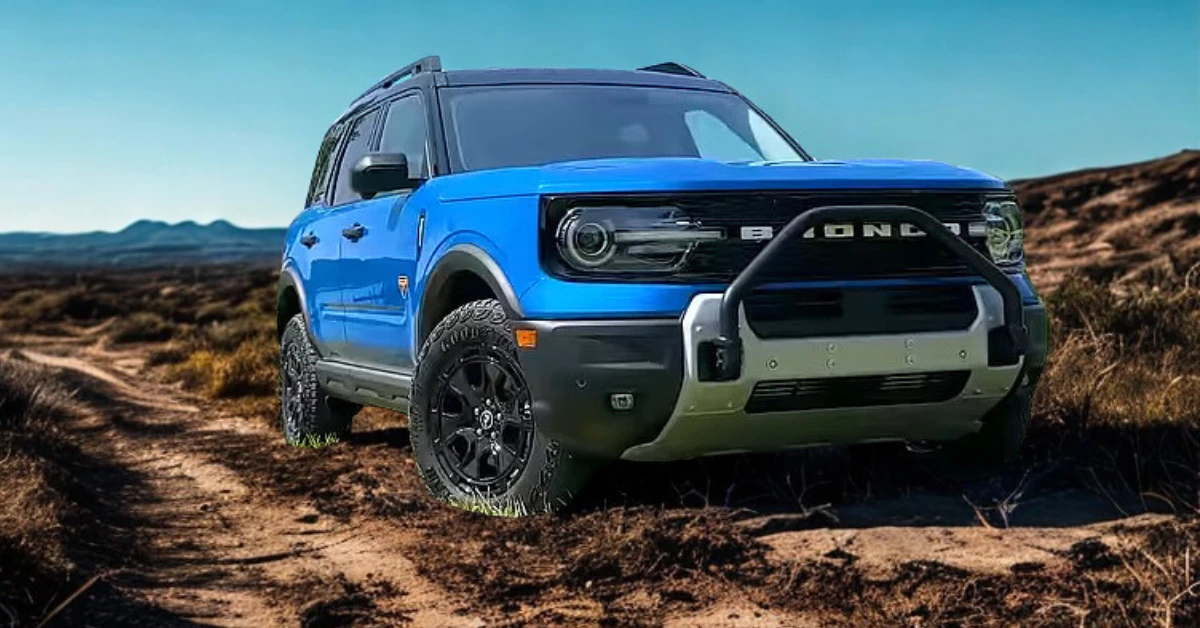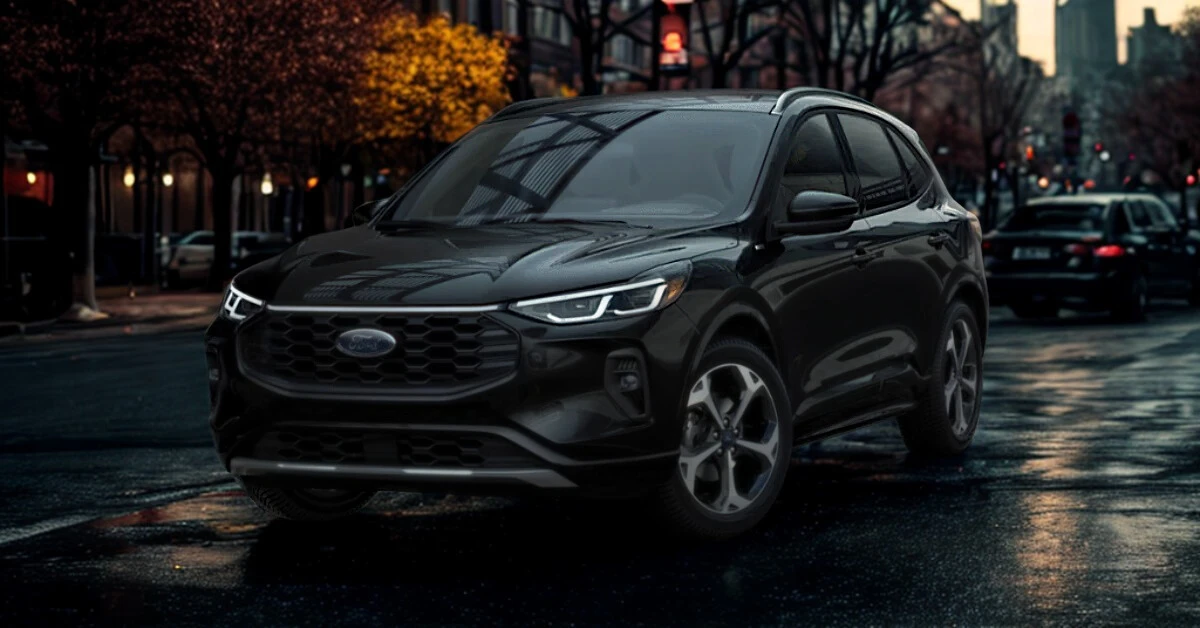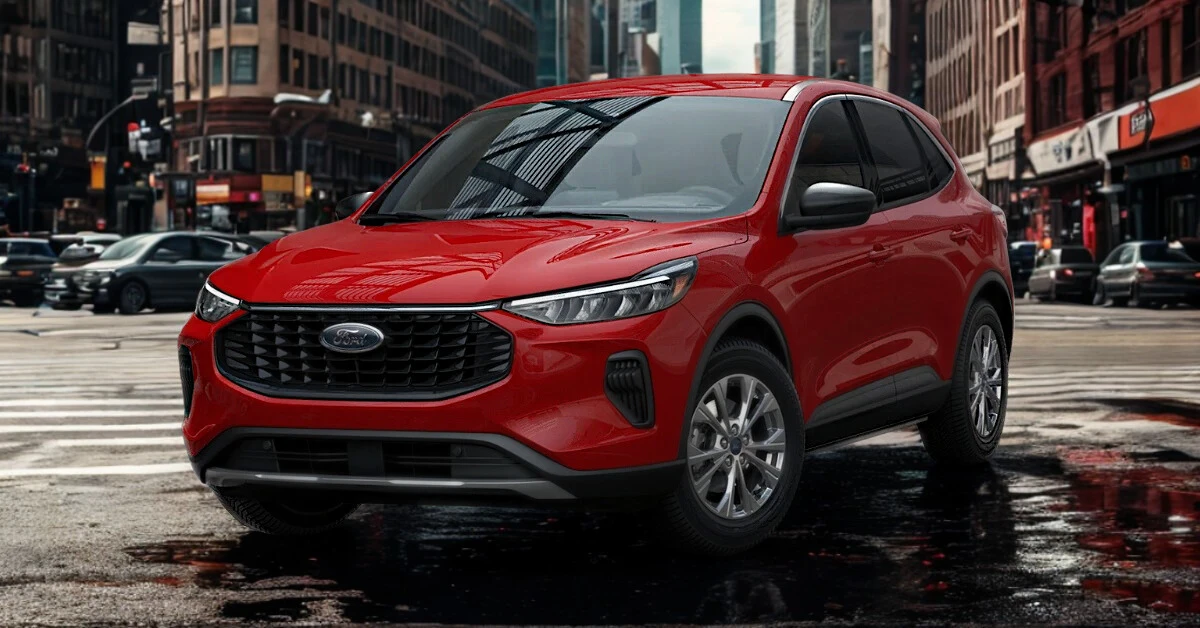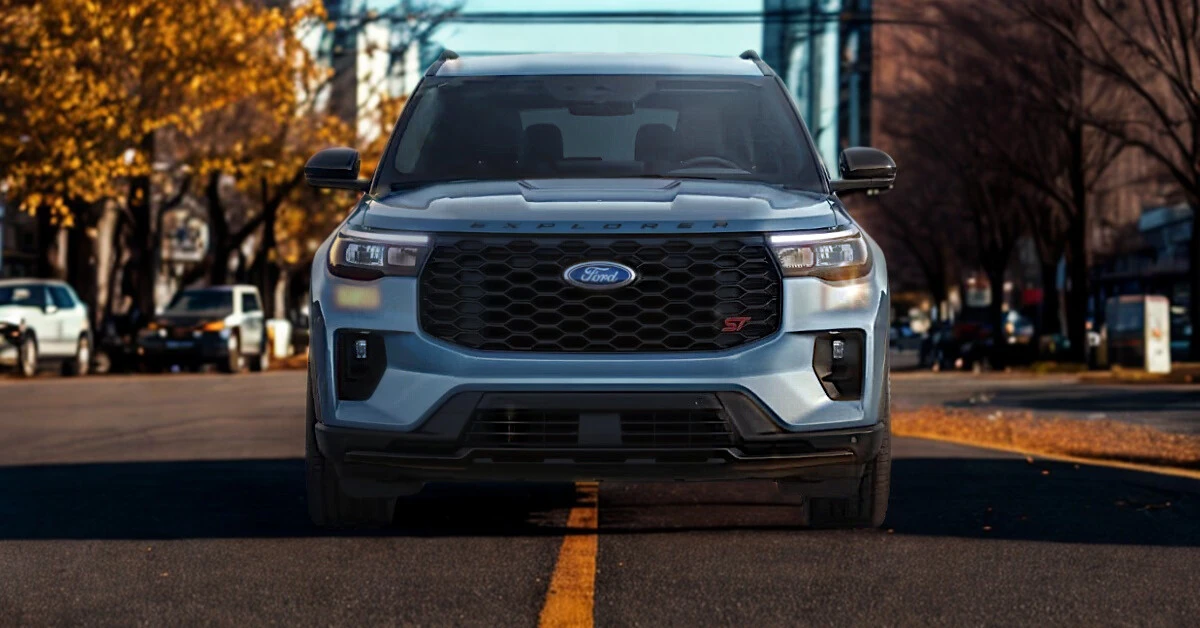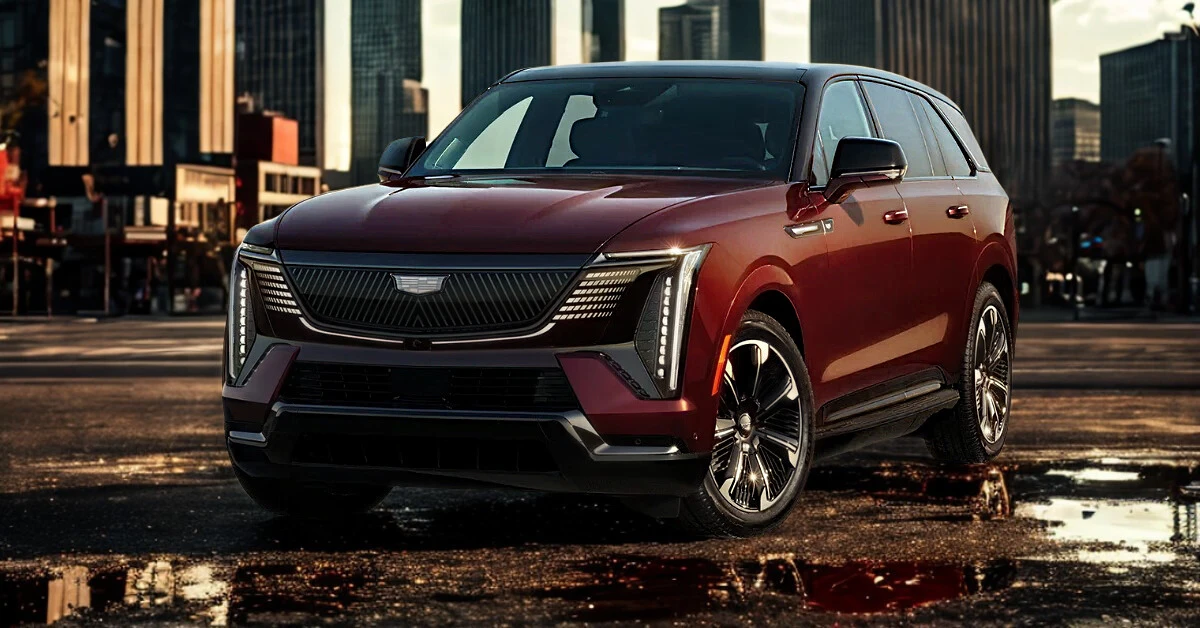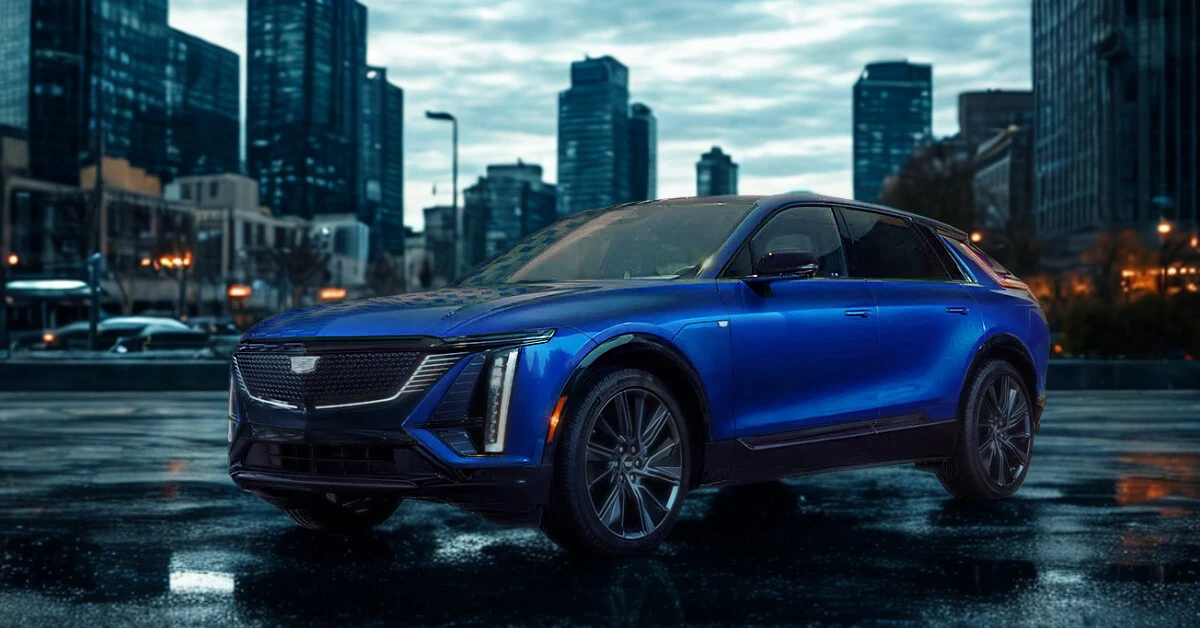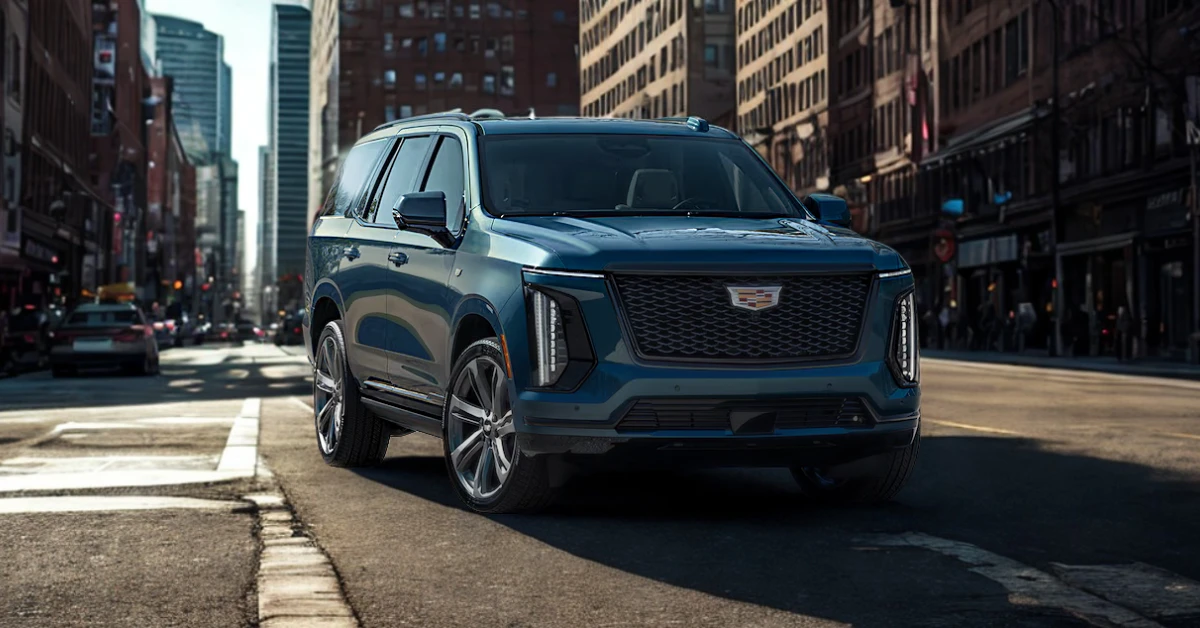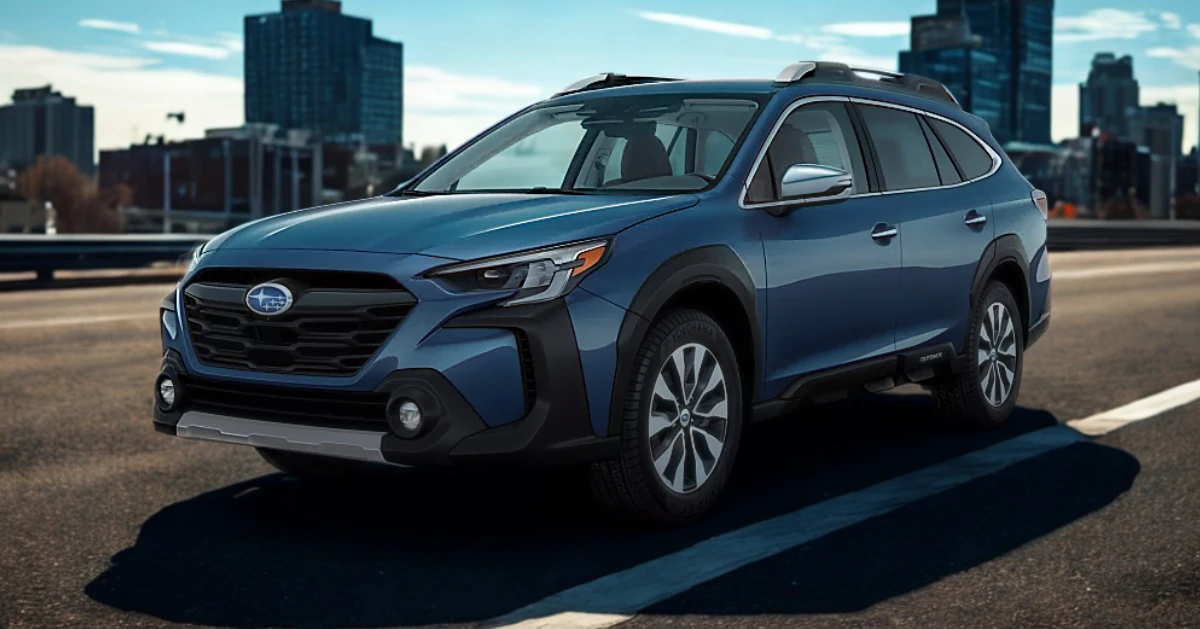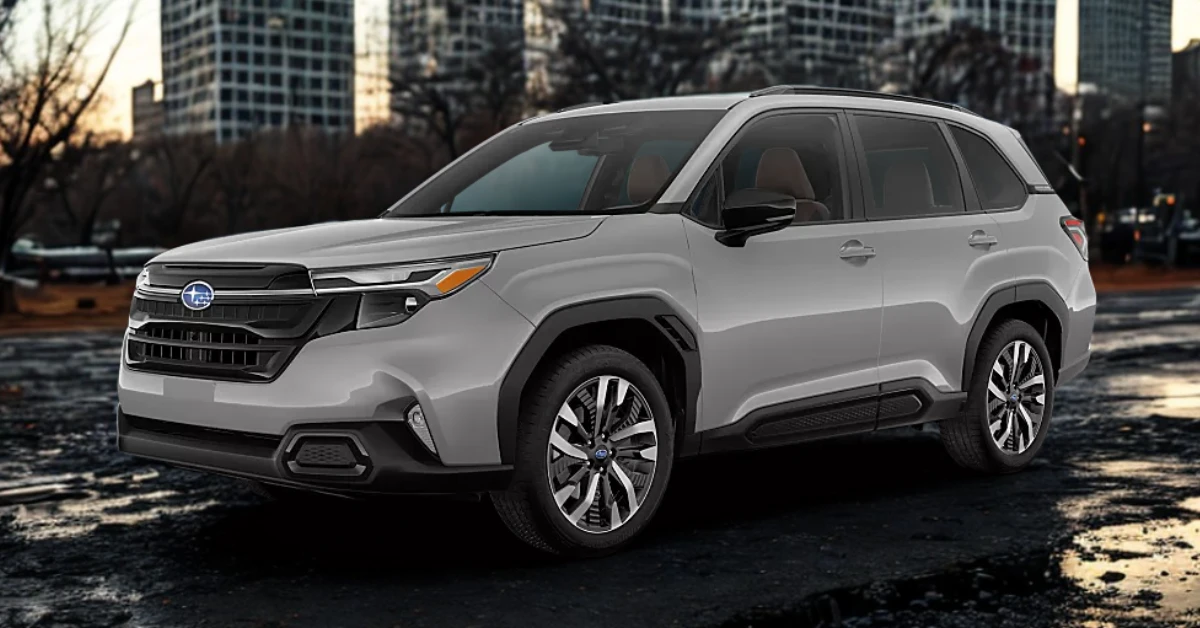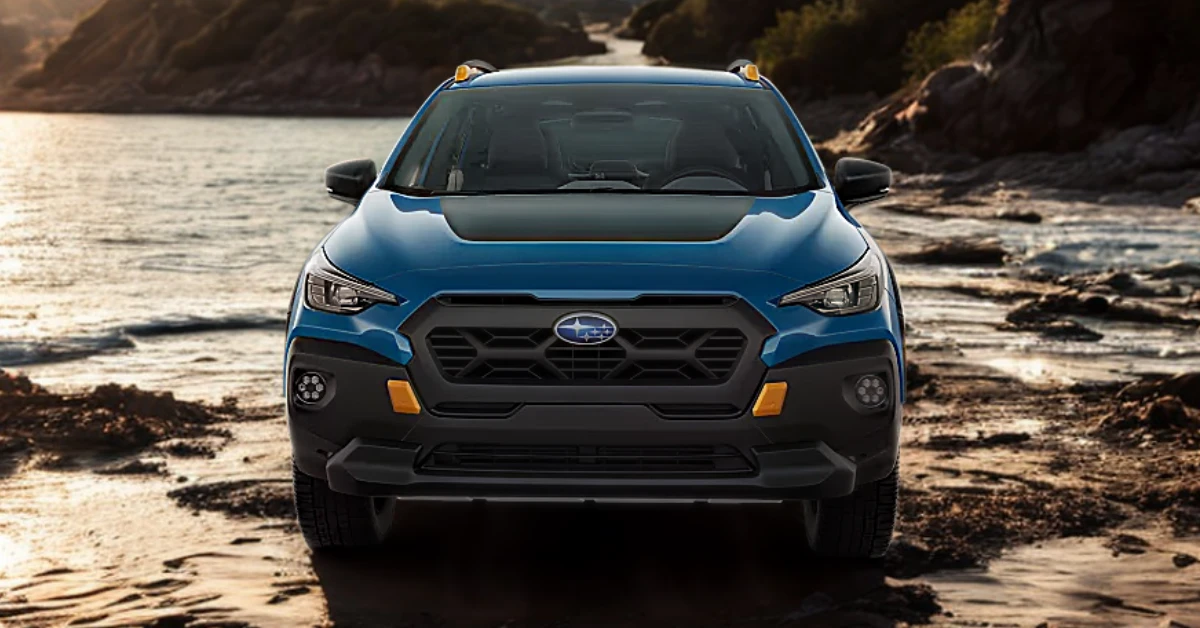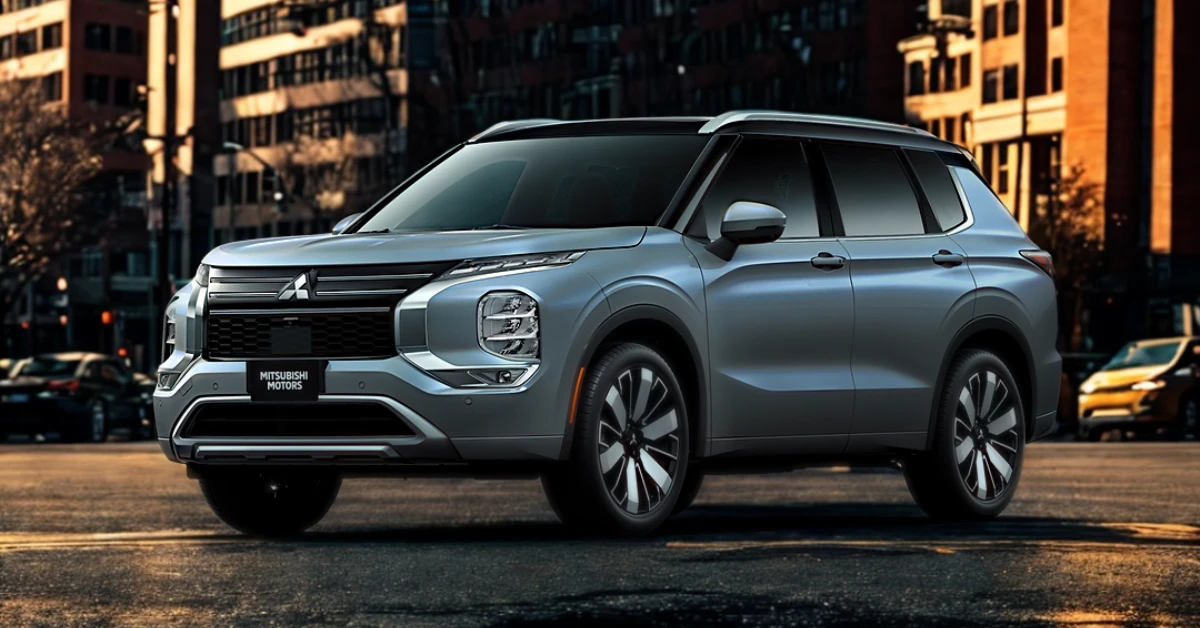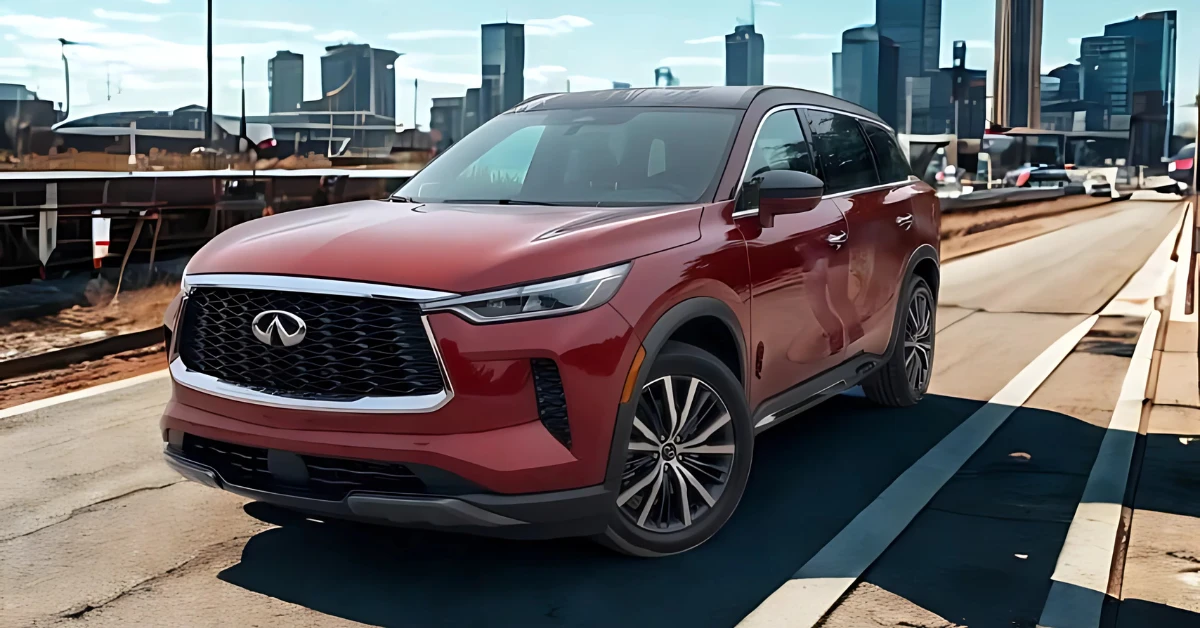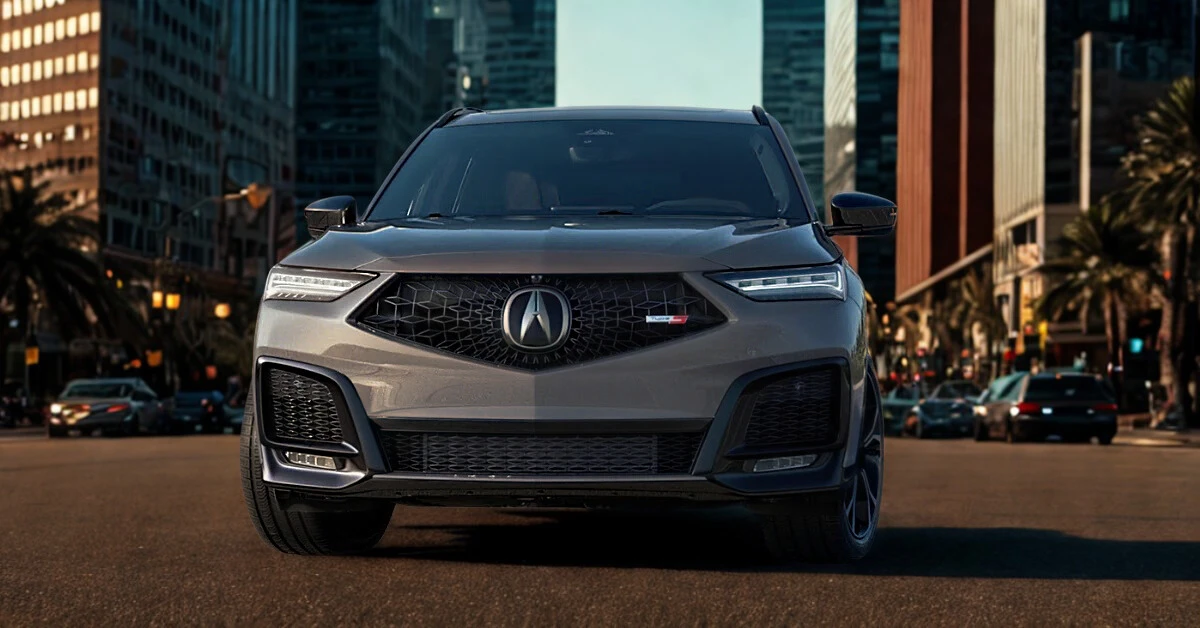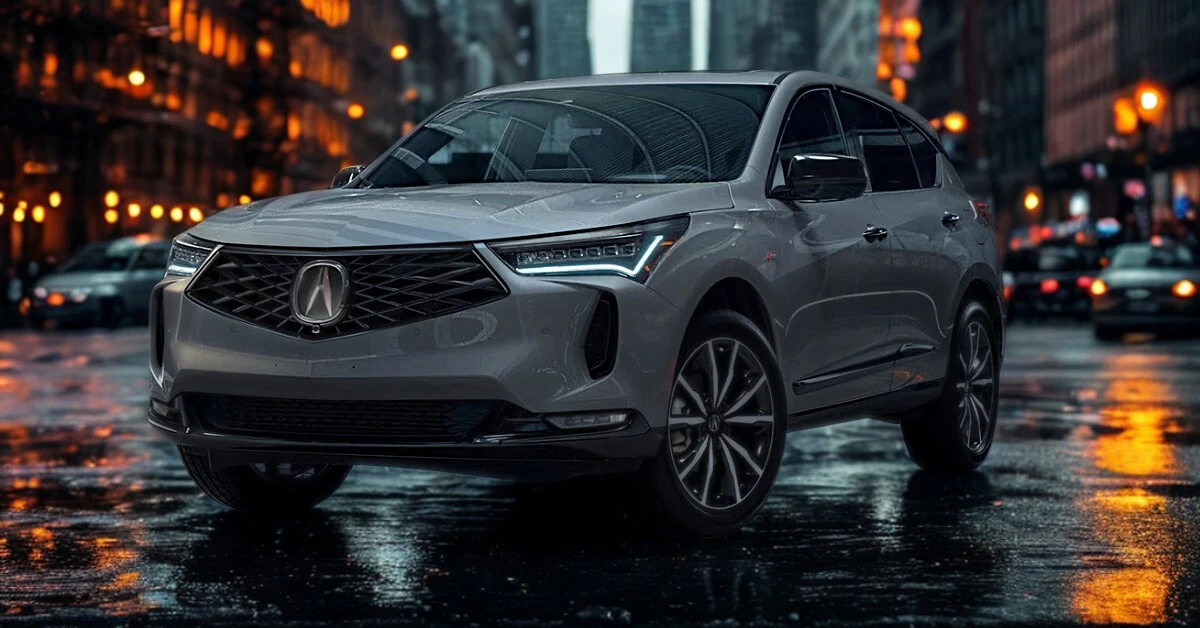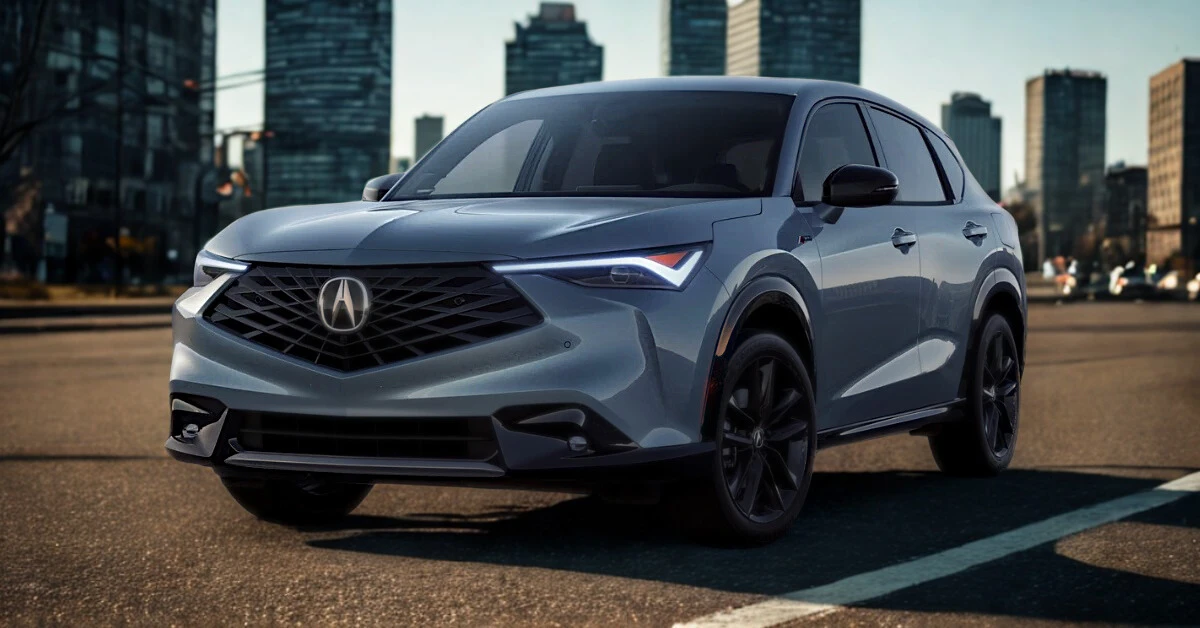2025 Rivian R1S Specifications
- POWERTRAINS
- TRIMS
- COLORS
- DIMENSIONS
| Specification | Adventure Dual-Motor Standard Pack | Adventure Dual-Motor Large Pack | Adventure Performance Dual-Motor Large Pack | Adventure Dual-Motor Max Pack | Adventure Performance Dual-Motor Max Pack | Premium Tri-Motor Max Pack | Ascend Tri-Motor Max Pack | Premium Quad-Motor Max Pack |
|---|---|---|---|---|---|---|---|---|
| Base Price | $77,700 | $84,700 | $90,700 | $91,700 | $96,700 | $107,700 | $107,700 | $117,700 |
| Engine Type | Electric | Electric | Electric | Electric | Electric | Electric | Electric | Electric |
| Drivetrain | All-Wheel Drive | All-Wheel Drive | All-Wheel Drive | All-Wheel Drive | All-Wheel Drive | All-Wheel Drive | All-Wheel Drive | All-Wheel Drive |
| Motor Configuration | Dual-Motor | Dual-Motor | Dual-Motor | Dual-Motor | Dual-Motor | Tri-Motor (1 Front, 2 Rear) | Tri-Motor (1 Front, 2 Rear) | Quad-Motor (2 Front, 2 Rear) |
| Battery Type | Lithium Iron Phosphate (LFP) | Lithium-Ion | Lithium-Ion | Lithium-Ion | Lithium-Ion | Lithium-Ion | Lithium-Ion | Lithium-Ion |
| Battery Capacity | 92.5 kWh | 109.4 kWh | 109.4 kWh | 141.5 kWh | 141.5 kWh | 141.5 kWh | 141.5 kWh | 141.5 kWh |
| Maximum Horsepower | 533 hp | 533 hp | 665 hp | 533 hp | 665 hp | 850 hp | 850 hp | 1050 hp |
| Maximum Torque | 610 lb-ft | 610 lb-ft | 829 lb-ft | 610 lb-ft | 829 lb-ft | 1103 lb-ft | 1103 lb-ft | 1198 lb-ft |
| 0-60 mph (est.) | 4.5 sec | 4.5 sec | 3.4 sec | 4.5 sec | 3.4 sec | 2.9 sec | 2.9 sec | 2.5 sec |
| Transmission | 1-Speed Automatic | 1-Speed Automatic | 1-Speed Automatic | 1-Speed Automatic | 1-Speed Automatic | 1-Speed Automatic | 1-Speed Automatic | 1-Speed Automatic |
| Axle Ratio | 12.60:1 | 12.60:1 | 12.60:1 | 12.60:1 | 12.60:1 | 11.70:1 | 11.70:1 | 11.70:1 |
| Range (est.) | 270 miles | 329 miles | 329 miles | 410 miles | 410 miles | 370 miles | 370 miles | 360 miles |
| Towing Capacity | 7,700 lbs | 7,700 lbs | 7,700 lbs | 7,700 lbs | 7,700 lbs | 7,700 lbs | 7,700 lbs | 7,700 lbs |
| Onboard Charger | 11.5 kW | 11.5 kW | 11.5 kW | 11.5 kW | 11.5 kW | 11.5 kW | 11.5 kW | 11.5 kW |
| DC Fast Charge (Max) | 200 kW | 220 kW | 220 kW | 220 kW | 220 kW | 220 kW | 220 kW | 220 kW |
| Charging Time (Level 2) | 9.5 hrs (10-100%) | 12 hrs (10-100%) | 12 hrs (10-100%) | 15 hrs (10-100%) | 15 hrs (10-100%) | 15 hrs (10-100%) | 15 hrs (10-100%) | 15 hrs (10-100%) |
| Gross Vehicle Weight | 8,532 lbs | 8,532 lbs | 8,532 lbs | 8,532 lbs | 8,532 lbs | 8,532 lbs | 8,532 lbs | 8,532 lbs |
| Front Axle Weight Rating | 4,134 lbs | 4,134 lbs | 4,134 lbs | 4,134 lbs | 4,134 lbs | 4,134 lbs | 4,134 lbs | 4,134 lbs |
| Rear Axle Weight Rating | 4,960 lbs | 4,960 lbs | 4,960 lbs | 4,960 lbs | 4,960 lbs | 4,960 lbs | 4,960 lbs | 4,960 lbs |
| Suspension Type (F/R) | Multi-Link / Multi-Link | Multi-Link / Multi-Link | Multi-Link / Multi-Link | Multi-Link / Multi-Link | Multi-Link / Multi-Link | Multi-Link / Multi-Link | Multi-Link / Multi-Link | Multi-Link / Multi-Link |
| Suspension Features | Air Springs, Adaptive Dampers | Air Springs, Adaptive Dampers | Air Springs, Adaptive Dampers | Air Springs, Adaptive Dampers | Air Springs, Adaptive Dampers | Air Springs, Adaptive Dampers | Air Springs, Adaptive Dampers | Air Springs, Adaptive Dampers |
| Ground Clearance | 8.7-15.0 inches (adjustable) | 8.7-15.0 inches (adjustable) | 8.7-15.0 inches (adjustable) | 8.7-15.0 inches (adjustable) | 8.7-15.0 inches (adjustable) | 8.7-15.0 inches (adjustable) | 8.7-15.0 inches (adjustable) | 8.7-15.0 inches (adjustable) |
| Brake Type | 4-Wheel Disc | 4-Wheel Disc | 4-Wheel Disc | 4-Wheel Disc | 4-Wheel Disc | 4-Wheel Disc | 4-Wheel Disc | 4-Wheel Disc |
| Front Brake Rotors | 13.5 inches | 13.5 inches | 13.5 inches | 13.5 inches | 13.5 inches | 13.5 inches | 13.5 inches | 13.5 inches |
| Rear Brake Rotors | 12.9 inches | 12.9 inches | 12.9 inches | 12.9 inches | 12.9 inches | 12.9 inches | 12.9 inches | 12.9 inches |
| Wheels | 20 x 8.5 inches | 22 x 8.5 inches | 22 x 8.5 inches | 22 x 8.5 inches | 22 x 8.5 inches | 22 x 8.5 inches | 22 x 8.5 inches | 22 x 8.5 inches |
| Tires | LT275/60HR20 | LT275/50HR22 | LT275/50HR22 | LT275/50HR22 | LT275/50HR22 | LT275/55HR22 | LT275/50HR22 | LT275/55HR22 |
| Special Features | All-Terrain Mode, Adaptive Air Suspension | All-Terrain Mode, Adaptive Air Suspension | Added Drive Modes: Soft Sand, Rally | All-Terrain Mode, Adaptive Air Suspension | Added Drive Modes: Soft Sand, Rally | Added Drive Modes: Drift, Rock Crawl, Conserve | Added Drive Modes: Drift, Rock Crawl, Conserve | Added Drive Modes: Drift, Rock Crawl, Conserve |
Battery & Range
| Feature | Adventure Dual-Motor Standard Pack | Adventure Dual-Motor Large Pack | Adventure Performance Dual-Motor Large Pack | Adventure Dual-Motor Max Pack | Adventure Performance Dual-Motor Max Pack | Premium Tri-Motor Max Pack | Ascend Tri-Motor Max Pack | Premium Quad-Motor Max Pack |
|---|---|---|---|---|---|---|---|---|
| Battery Type | Lithium Iron Phosphate (LFP) | Lithium-Ion | Lithium-Ion | Lithium-Ion | Lithium-Ion | Lithium-Ion | Lithium-Ion | Lithium-Ion |
| Battery Capacity | 92.5 kWh | 109.4 kWh | 109.4 kWh | 141.5 kWh | 141.5 kWh | 141.5 kWh | 141.5 kWh | 141.5 kWh |
| Range (est.) | 270 miles | 329 miles | 329 miles | 410 miles | 410 miles | 370 miles | 370 miles | 360 miles |
| Onboard Charger | 11.5 kW | 11.5 kW | 11.5 kW | 11.5 kW | 11.5 kW | 11.5 kW | 11.5 kW | 11.5 kW |
| DC Fast Charge (Max) | 200 kW | 220 kW | 220 kW | 220 kW | 220 kW | 220 kW | 220 kW | 220 kW |
| Charging Time (Level 2) | 9.5 hrs (10-100%) | 12 hrs (10-100%) | 12 hrs (10-100%) | 15 hrs (10-100%) | 15 hrs (10-100%) | 15 hrs (10-100%) | 15 hrs (10-100%) | 15 hrs (10-100%) |
| DC Fast Charge Time | 30-35 min (10-80%) | 30-35 min (10-80%) | 30-35 min (10-80%) | 35-41 min (10-80%) | 35-41 min (10-80%) | 35-41 min (10-80%) | 35-41 min (10-80%) | 35-41 min (10-80%) |
Interior Features
| Feature | Adventure Dual-Motor Standard Pack | Adventure Dual-Motor Large Pack | Adventure Performance Dual-Motor Large Pack | Adventure Dual-Motor Max Pack | Adventure Performance Dual-Motor Max Pack | Premium Tri-Motor Max Pack | Ascend Tri-Motor Max Pack | Premium Quad-Motor Max Pack |
|---|---|---|---|---|---|---|---|---|
| Seating Capacity | 7 | 7 | 7 | 7 | 7 | 7 | 7 | 7 |
| Seating Material | Vegan Leather | Vegan Leather | Vegan Leather | Vegan Leather | Vegan Leather | Premium Vegan Leather | Premium Vegan Leather | Premium Vegan Leather |
| Front Seats | Heated & Ventilated, 8-way Power w/Memory | Heated & Ventilated, 8-way Power w/Memory | Heated & Ventilated, 8-way Power w/Memory | Heated & Ventilated, 8-way Power w/Memory | Heated & Ventilated, 8-way Power w/Memory | Heated & Ventilated, 8-way Power w/Memory | Heated & Ventilated, 8-way Power w/Memory | Heated & Ventilated, 8-way Power w/Memory |
| Second Row Seats | Heated, 40-20-40 Split | Heated, 40-20-40 Split | Heated, 40-20-40 Split | Heated, 40-20-40 Split | Heated, 40-20-40 Split | Heated, 40-20-40 Split | Heated, 40-20-40 Split | Heated, 40-20-40 Split |
| Third Row Seats | Heated, 50-50 Split | Heated, 50-50 Split | Heated, 50-50 Split | Heated, 50-50 Split | Heated, 50-50 Split | Heated, 50-50 Split | Heated, 50-50 Split | Heated, 50-50 Split |
| Steering Wheel | Heated Vegan Leather | Heated Vegan Leather | Heated Vegan Leather | Heated Vegan Leather | Heated Vegan Leather | Heated Vegan Leather | Heated Vegan Leather | Heated Vegan Leather |
| Interior Trim | Wood/Metal-Look | Wood/Metal-Look | Wood/Metal-Look | Wood/Metal-Look | Wood/Metal-Look | Wood/Metal-Look | Wood/Metal-Look | Wood/Metal-Look |
| Suede Headliner | Standard | Standard | Standard | Standard | Standard | Standard | Standard | Standard |
| Climate Control | Dual Zone Automatic | Dual Zone Automatic | Dual Zone Automatic | Dual Zone Automatic | Dual Zone Automatic | Dual Zone Automatic | Dual Zone Automatic | Dual Zone Automatic |
| Ambient Lighting | Standard | Standard | Standard | Standard | Standard | Standard | Standard | Standard |
| Flashlight | Integrated in Driver’s Door | Integrated in Driver’s Door | Integrated in Driver’s Door | Integrated in Driver’s Door | Integrated in Driver’s Door | Integrated in Driver’s Door | Integrated in Driver’s Door | Integrated in Driver’s Door |
Technology
| Feature | Adventure Dual-Motor Standard Pack | Adventure Dual-Motor Large Pack | Adventure Performance Dual-Motor Large Pack | Adventure Dual-Motor Max Pack | Adventure Performance Dual-Motor Max Pack | Premium Tri-Motor Max Pack | Ascend Tri-Motor Max Pack | Premium Quad-Motor Max Pack |
|---|---|---|---|---|---|---|---|---|
| Touchscreen | 15.6″ Horizontal | 15.6″ Horizontal | 15.6″ Horizontal | 15.6″ Horizontal | 15.6″ Horizontal | 15.6″ Horizontal | 15.6″ Horizontal | 15.6″ Horizontal |
| Digital Instrument Cluster | Standard | Standard | Standard | Standard | Standard | Standard | Standard | Standard |
| Audio System | Rivian Standard Audio (12 speakers) | Rivian Standard Audio (12 speakers) | Rivian Standard Audio (12 speakers) | Rivian Standard Audio (12 speakers) | Rivian Standard Audio (12 speakers) | Rivian Elevation Audio (19 speakers) | Rivian Premium Audio (18 speakers) | Rivian Elevation Audio (19 speakers) |
| Apple CarPlay/Android Auto | Not Available | Not Available | Not Available | Not Available | Not Available | Not Available | Not Available | Not Available |
| Integrated Navigation | Standard | Standard | Standard | Standard | Standard | Standard | Standard | Standard |
| Alexa Integration | Standard | Standard | Standard | Standard | Standard | Standard | Standard | Standard |
| Wi-Fi Hotspot | Available with Connect+ | Available with Connect+ | Available with Connect+ | Available with Connect+ | Available with Connect+ | Available with Connect+ | Available with Connect+ | Available with Connect+ |
| Bluetooth | Standard | Standard | Standard | Standard | Standard | Standard | Standard | Standard |
| Wireless Phone Charging | Dual Pads | Dual Pads | Dual Pads | Dual Pads | Dual Pads | Dual Pads | Dual Pads | Dual Pads |
| USB Ports | Multiple USB-C Throughout | Multiple USB-C Throughout | Multiple USB-C Throughout | Multiple USB-C Throughout | Multiple USB-C Throughout | Multiple USB-C Throughout | Multiple USB-C Throughout | Multiple USB-C Throughout |
| Rear Entertainment | Available | Available | Available | Available | Available | Available | Available | Available |
| Voice Recognition | Natural Language | Natural Language | Natural Language | Natural Language | Natural Language | Natural Language | Natural Language | Natural Language |
| Connect+ Subscription | Optional ($14.99/mo or $149.99/yr) | Optional ($14.99/mo or $149.99/yr) | Optional ($14.99/mo or $149.99/yr) | Optional ($14.99/mo or $149.99/yr) | Optional ($14.99/mo or $149.99/yr) | Optional ($14.99/mo or $149.99/yr) | Optional ($14.99/mo or $149.99/yr) | Optional ($14.99/mo or $149.99/yr) |
Safety & Driver Assistance
| Feature | Adventure Dual-Motor Standard Pack | Adventure Dual-Motor Large Pack | Adventure Performance Dual-Motor Large Pack | Adventure Dual-Motor Max Pack | Adventure Performance Dual-Motor Max Pack | Premium Tri-Motor Max Pack | Ascend Tri-Motor Max Pack | Premium Quad-Motor Max Pack |
|---|---|---|---|---|---|---|---|---|
| Rivian Autonomy Platform | Standard | Standard | Standard | Standard | Standard | Standard | Standard | Standard |
| Adaptive Cruise Control | Standard | Standard | Standard | Standard | Standard | Standard | Standard | Standard |
| Highway Driving Assist | Standard | Standard | Standard | Standard | Standard | Standard | Standard | Standard |
| Lane Keeping Assist | Standard | Standard | Standard | Standard | Standard | Standard | Standard | Standard |
| Collision Warning & Mitigation | Standard | Standard | Standard | Standard | Standard | Standard | Standard | Standard |
| Blind Spot Warning | Standard | Standard | Standard | Standard | Standard | Standard | Standard | Standard |
| Rear Cross-Traffic Alert | Standard | Standard | Standard | Standard | Standard | Standard | Standard | Standard |
| Automatic Emergency Braking | Standard | Standard | Standard | Standard | Standard | Standard | Standard | Standard |
| Front & Rear Parking Sensors | Standard | Standard | Standard | Standard | Standard | Standard | Standard | Standard |
| 360-Degree Camera System | Standard | Standard | Standard | Standard | Standard | Standard | Standard | Standard |
| Gear Guard Security | Available with Connect+ | Available with Connect+ | Available with Connect+ | Available with Connect+ | Available with Connect+ | Available with Connect+ | Available with Connect+ | Available with Connect+ |
| Airbags | Front, Side, Knee, Curtain | Front, Side, Knee, Curtain | Front, Side, Knee, Curtain | Front, Side, Knee, Curtain | Front, Side, Knee, Curtain | Front, Side, Knee, Curtain | Front, Side, Knee, Curtain | Front, Side, Knee, Curtain |
Exterior Features
| Feature | Adventure Dual-Motor Standard Pack | Adventure Dual-Motor Large Pack | Adventure Performance Dual-Motor Large Pack | Adventure Dual-Motor Max Pack | Adventure Performance Dual-Motor Max Pack | Premium Tri-Motor Max Pack | Ascend Tri-Motor Max Pack | Premium Quad-Motor Max Pack |
|---|---|---|---|---|---|---|---|---|
| Exterior Lighting | LED Headlights, LED DRLs, LED Taillights | LED Headlights, LED DRLs, LED Taillights | LED Headlights, LED DRLs, LED Taillights | LED Headlights, LED DRLs, LED Taillights | LED Headlights, LED DRLs, LED Taillights | LED Headlights, LED DRLs, LED Taillights | LED Headlights, LED DRLs, LED Taillights | LED Headlights, LED DRLs, LED Taillights |
| Adaptive Drive Beam | Hardware Ready (OTA update) | Hardware Ready (OTA update) | Hardware Ready (OTA update) | Hardware Ready (OTA update) | Hardware Ready (OTA update) | Hardware Ready (OTA update) | Hardware Ready (OTA update) | Hardware Ready (OTA update) |
| Front & Rear Fog Lamps | Standard | Standard | Standard | Standard | Standard | Standard | Standard | Standard |
| Side Mirrors | Body-Colored, Power, Heated, Auto-Dimming, Power Folding | Body-Colored, Power, Heated, Auto-Dimming, Power Folding | Body-Colored, Power, Heated, Auto-Dimming, Power Folding | Body-Colored, Power, Heated, Auto-Dimming, Power Folding | Body-Colored, Power, Heated, Auto-Dimming, Power Folding | Body-Colored, Power, Heated, Auto-Dimming, Power Folding | Body-Colored, Power, Heated, Auto-Dimming, Power Folding | Body-Colored, Power, Heated, Auto-Dimming, Power Folding |
| Glass Roof | Dynamic Glass (Electronically Adjustable Tint) | Dynamic Glass (Electronically Adjustable Tint) | Dynamic Glass (Electronically Adjustable Tint) | Dynamic Glass (Electronically Adjustable Tint) | Dynamic Glass (Electronically Adjustable Tint) | Dynamic Glass (Electronically Adjustable Tint) | Dynamic Glass (Electronically Adjustable Tint) | Dynamic Glass (Electronically Adjustable Tint) |
| Liftgate | Power | Power | Power | Power | Power | Power | Power | Power |
| Door Handles | Power Pop-Out | Power Pop-Out | Power Pop-Out | Power Pop-Out | Power Pop-Out | Power Pop-Out | Power Pop-Out | Power Pop-Out |
| Roof Rails | Standard | Standard | Standard | Standard | Standard | Standard w/Yellow Accents | Standard w/Yellow Accents | Standard w/Yellow Accents |
| Wipers | Rain-Detecting Variable Intermittent | Rain-Detecting Variable Intermittent | Rain-Detecting Variable Intermittent | Rain-Detecting Variable Intermittent | Rain-Detecting Variable Intermittent | Rain-Detecting Variable Intermittent | Rain-Detecting Variable Intermittent | Rain-Detecting Variable Intermittent |
Suspension & Chassis
| Feature | Adventure Dual-Motor Standard Pack | Adventure Dual-Motor Large Pack | Adventure Performance Dual-Motor Large Pack | Adventure Dual-Motor Max Pack | Adventure Performance Dual-Motor Max Pack | Premium Tri-Motor Max Pack | Ascend Tri-Motor Max Pack | Premium Quad-Motor Max Pack |
|---|---|---|---|---|---|---|---|---|
| Front Suspension | Multi-Link | Multi-Link | Multi-Link | Multi-Link | Multi-Link | Multi-Link | Multi-Link | Multi-Link |
| Rear Suspension | Multi-Link | Multi-Link | Multi-Link | Multi-Link | Multi-Link | Multi-Link | Multi-Link | Multi-Link |
| Shock Absorbers | Air Springs, Adaptive Dampers | Air Springs, Adaptive Dampers | Air Springs, Adaptive Dampers | Air Springs, Adaptive Dampers | Air Springs, Adaptive Dampers | Air Springs, Adaptive Dampers | Air Springs, Adaptive Dampers | Air Springs, Adaptive Dampers |
| Active Anti-Roll Bars | Standard | Standard | Standard | Standard | Standard | Standard | Standard | Standard |
| Roll Mitigation System | Hydraulic | Hydraulic | Hydraulic | Hydraulic | Hydraulic | Hydraulic | Hydraulic | Hydraulic |
| Brake Type | 4-Wheel Disc | 4-Wheel Disc | 4-Wheel Disc | 4-Wheel Disc | 4-Wheel Disc | 4-Wheel Disc | 4-Wheel Disc | 4-Wheel Disc |
| Front Brake Rotors | 13.5 inches | 13.5 inches | 13.5 inches | 13.5 inches | 13.5 inches | 13.5 inches | 13.5 inches | 13.5 inches |
| Rear Brake Rotors | 12.9 inches | 12.9 inches | 12.9 inches | 12.9 inches | 12.9 inches | 12.9 inches | 12.9 inches | 12.9 inches |
| Electronic Parking Brake | Standard | Standard | Standard | Standard | Standard | Standard | Standard | Standard |
| Regenerative Braking | Adjustable: Low, Standard, High | Adjustable: Low, Standard, High | Adjustable: Low, Standard, High | Adjustable: Low, Standard, High | Adjustable: Low, Standard, High | Adjustable: Low, Standard, High | Adjustable: Low, Standard, High | Adjustable: Low, Standard, High |
Off-Road Capability
| Feature | Adventure Dual-Motor Standard Pack | Adventure Dual-Motor Large Pack | Adventure Performance Dual-Motor Large Pack | Adventure Dual-Motor Max Pack | Adventure Performance Dual-Motor Max Pack | Premium Tri-Motor Max Pack | Ascend Tri-Motor Max Pack | Premium Quad-Motor Max Pack |
|---|---|---|---|---|---|---|---|---|
| Ground Clearance | 8.7-15.0 inches (adjustable) | 8.7-15.0 inches (adjustable) | 8.7-15.0 inches (adjustable) | 8.7-15.0 inches (adjustable) | 8.7-15.0 inches (adjustable) | 8.7-15.0 inches (adjustable) | 8.7-15.0 inches (adjustable) | 8.7-15.0 inches (adjustable) |
| Air Suspension | Standard w/Driver Control | Standard w/Driver Control | Standard w/Driver Control | Standard w/Driver Control | Standard w/Driver Control | Standard w/Driver Control | Standard w/Driver Control | Standard w/Driver Control |
| Drive Modes | All-Purpose, Sport, Conserve, Snow, All-Terrain | All-Purpose, Sport, Conserve, Snow, All-Terrain | All-Purpose, Sport, Conserve, Snow, All-Terrain, Soft Sand, Rally | All-Purpose, Sport, Conserve, Snow, All-Terrain | All-Purpose, Sport, Conserve, Snow, All-Terrain, Soft Sand, Rally | All-Purpose, Sport, Conserve, Snow, All-Terrain, Soft Sand, Rally, Drift, Rock Crawl | All-Purpose, Sport, Conserve, Snow, All-Terrain, Soft Sand, Rally, Drift, Rock Crawl | All-Purpose, Sport, Conserve, Snow, All-Terrain, Soft Sand, Rally, Drift, Rock Crawl |
| Torque Vectoring | Brake-Based | Brake-Based | Brake-Based | Brake-Based | Brake-Based | Mechanical (Rear) | Mechanical (Rear) | Mechanical (Front & Rear) |
| Skid Plate | Standard | Standard | Standard | Standard | Standard | Standard | Standard | Standard |
| Tow Hooks | 2 Front | 2 Front | 2 Front | 2 Front | 2 Front | 2 Front | 2 Front | 2 Front |
| Water Fording Depth | 3 feet | 3 feet | 3 feet | 3 feet | 3 feet | 3 feet | 3 feet | 3 feet |
| Towing Capacity | 7,700 lbs | 7,700 lbs | 7,700 lbs | 7,700 lbs | 7,700 lbs | 7,700 lbs | 7,700 lbs | 7,700 lbs |
| Air Compressor | Onboard (in cargo area) | Onboard (in cargo area) | Onboard (in cargo area) | Onboard (in cargo area) | Onboard (in cargo area) | Onboard (in cargo area) | Onboard (in cargo area) | Onboard (in cargo area) |
Wheels & Tires
| Feature | Adventure Dual-Motor Standard Pack | Adventure Dual-Motor Large Pack | Adventure Performance Dual-Motor Large Pack | Adventure Dual-Motor Max Pack | Adventure Performance Dual-Motor Max Pack | Premium Tri-Motor Max Pack | Ascend Tri-Motor Max Pack | Premium Quad-Motor Max Pack |
|---|---|---|---|---|---|---|---|---|
| Wheels | 20 x 8.5 inches | 22 x 8.5 inches | 22 x 8.5 inches | 22 x 8.5 inches | 22 x 8.5 inches | 22 x 8.5 inches | 22 x 8.5 inches | 22 x 8.5 inches |
| Wheel Material | Aluminum | Aluminum | Aluminum | Aluminum | Aluminum | Aluminum | Aluminum | Aluminum |
| Tires | LT275/60HR20 All-Season | LT275/50HR22 All-Season | LT275/50HR22 All-Season | LT275/50HR22 All-Season | LT275/50HR22 All-Season | LT275/55HR22 All-Season | LT275/50HR22 All-Season | LT275/55HR22 All-Season |
| Optional Performance Tires | Not Available | Not Available | Not Available | Not Available | Not Available | Not Available | Not Available | Michelin Pilot Sport S5 (Optional) |
| Spare Tire | Tire Mobility Kit | Tire Mobility Kit | Tire Mobility Kit | Tire Mobility Kit | Tire Mobility Kit | Tire Mobility Kit | Tire Mobility Kit | Tire Mobility Kit |
Cargo Capacity
| Feature | Adventure Dual-Motor Standard Pack | Adventure Dual-Motor Large Pack | Adventure Performance Dual-Motor Large Pack | Adventure Dual-Motor Max Pack | Adventure Performance Dual-Motor Max Pack | Premium Tri-Motor Max Pack | Ascend Tri-Motor Max Pack | Premium Quad-Motor Max Pack |
|---|---|---|---|---|---|---|---|---|
| Front Trunk Capacity | 11.0 cu. ft. | 11.0 cu. ft. | 11.0 cu. ft. | 11.0 cu. ft. | 11.0 cu. ft. | 11.0 cu. ft. | 11.0 cu. ft. | 11.0 cu. ft. |
| Behind 3rd Row | 17.7 cu. ft. | 17.7 cu. ft. | 17.7 cu. ft. | 17.7 cu. ft. | 17.7 cu. ft. | 17.7 cu. ft. | 17.7 cu. ft. | 17.7 cu. ft. |
| Behind 2nd Row | 46.7 cu. ft. | 46.7 cu. ft. | 46.7 cu. ft. | 46.7 cu. ft. | 46.7 cu. ft. | 46.7 cu. ft. | 46.7 cu. ft. | 46.7 cu. ft. |
| Behind 1st Row | 104.7 cu. ft. | 104.7 cu. ft. | 104.7 cu. ft. | 104.7 cu. ft. | 104.7 cu. ft. | 104.7 cu. ft. | 104.7 cu. ft. | 104.7 cu. ft. |
| Split Tailgate | Standard | Standard | Standard | Standard | Standard | Standard | Standard | Standard |
| Cargo Area Power Outlet | Standard (120V) | Standard (120V) | Standard (120V) | Standard (120V) | Standard (120V) | Standard (120V) | Standard (120V) | Standard (120V) |
| Cargo Tie-Downs | Standard | Standard | Standard | Standard | Standard | Standard | Standard | Standard |
Convenience Features
| Feature | Adventure Dual-Motor Standard Pack | Adventure Dual-Motor Large Pack | Adventure Performance Dual-Motor Large Pack | Adventure Dual-Motor Max Pack | Adventure Performance Dual-Motor Max Pack | Premium Tri-Motor Max Pack | Ascend Tri-Motor Max Pack | Premium Quad-Motor Max Pack |
|---|---|---|---|---|---|---|---|---|
| Garage Door Transmitter | Standard | Standard | Standard | Standard | Standard | Standard | Standard | Standard |
| Proximity Key Entry | Standard | Standard | Standard | Standard | Standard | Standard | Standard | Standard |
| Digital Key | Standard | Standard | Standard | Standard | Standard | Standard | Standard | Standard |
| Power Tilt/Telescoping Steering | Standard | Standard | Standard | Standard | Standard | Standard | Standard | Standard |
| Auto-Dimming Rearview Mirror | Standard | Standard | Standard | Standard | Standard | Standard | Standard | Standard |
| 12V Power Outlets | Multiple | Multiple | Multiple | Multiple | Multiple | Multiple | Multiple | Multiple |
| 120V Power Outlets | Multiple | Multiple | Multiple | Multiple | Multiple | Multiple | Multiple | Multiple |
| Camp Mode | Standard | Standard | Standard | Standard | Standard | Standard | Standard | Standard |
| Pet Mode | Standard | Standard | Standard | Standard | Standard | Standard | Standard | Standard |
| Memory Settings | Driver Seat, Door Mirrors, Steering Wheel | Driver Seat, Door Mirrors, Steering Wheel | Driver Seat, Door Mirrors, Steering Wheel | Driver Seat, Door Mirrors, Steering Wheel | Driver Seat, Door Mirrors, Steering Wheel | Driver Seat, Door Mirrors, Steering Wheel | Driver Seat, Door Mirrors, Steering Wheel | Driver Seat, Door Mirrors, Steering Wheel |
Warranty & Coverage
| Feature | Adventure Dual-Motor Standard Pack | Adventure Dual-Motor Large Pack | Adventure Performance Dual-Motor Large Pack | Adventure Dual-Motor Max Pack | Adventure Performance Dual-Motor Max Pack | Premium Tri-Motor Max Pack | Ascend Tri-Motor Max Pack | Premium Quad-Motor Max Pack |
|---|---|---|---|---|---|---|---|---|
| Basic Warranty | 4 years/50,000 miles | 4 years/50,000 miles | 4 years/50,000 miles | 4 years/50,000 miles | 4 years/50,000 miles | 4 years/50,000 miles | 4 years/50,000 miles | 4 years/50,000 miles |
| Powertrain/Battery Warranty | 8 years/150,000 miles | 8 years/150,000 miles | 8 years/150,000 miles | 8 years/150,000 miles | 8 years/150,000 miles | 8 years/150,000 miles | 8 years/150,000 miles | 8 years/150,000 miles |
| Standard Battery Warranty | 8 years/120,000 miles | 8 years/150,000 miles | 8 years/150,000 miles | 8 years/150,000 miles | 8 years/150,000 miles | 8 years/150,000 miles | 8 years/150,000 miles | 8 years/150,000 miles |
| Corrosion Warranty | 8 years/Unlimited miles | 8 years/Unlimited miles | 8 years/Unlimited miles | 8 years/Unlimited miles | 8 years/Unlimited miles | 8 years/Unlimited miles | 8 years/Unlimited miles | 8 years/Unlimited miles |
| Roadside Assistance | 4 years/50,000 miles | 4 years/50,000 miles | 4 years/50,000 miles | 4 years/50,000 miles | 4 years/50,000 miles | 4 years/50,000 miles | 4 years/50,000 miles | 4 years/50,000 miles |
| Scheduled Maintenance | None | None | None | None | None | None | None | None |
| Over-the-Air Updates | Standard | Standard | Standard | Standard | Standard | Standard | Standard | Standard |
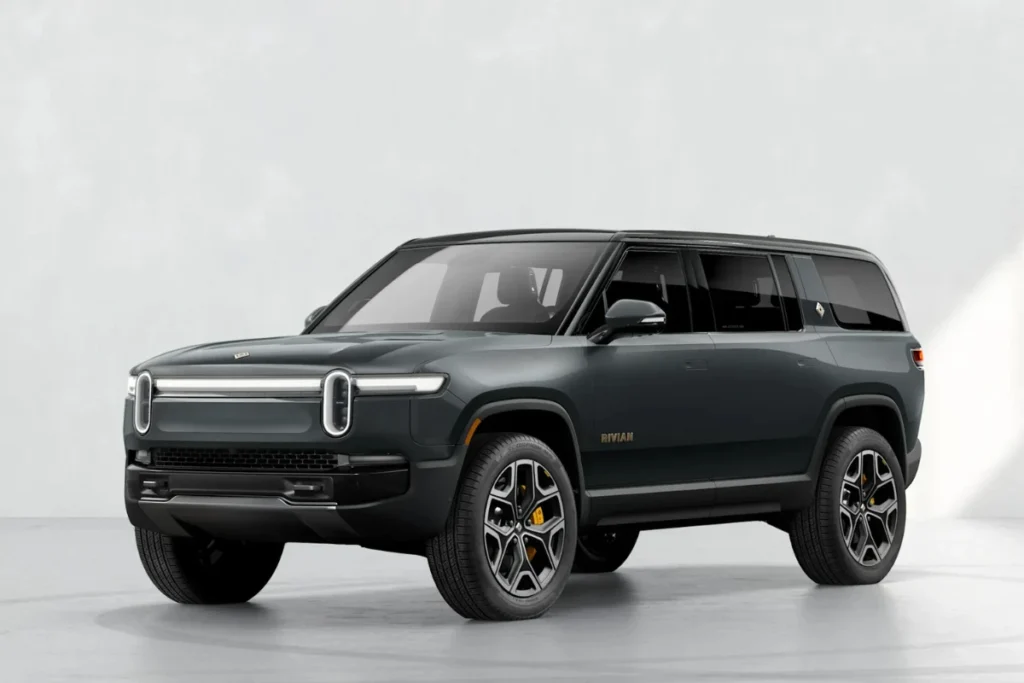


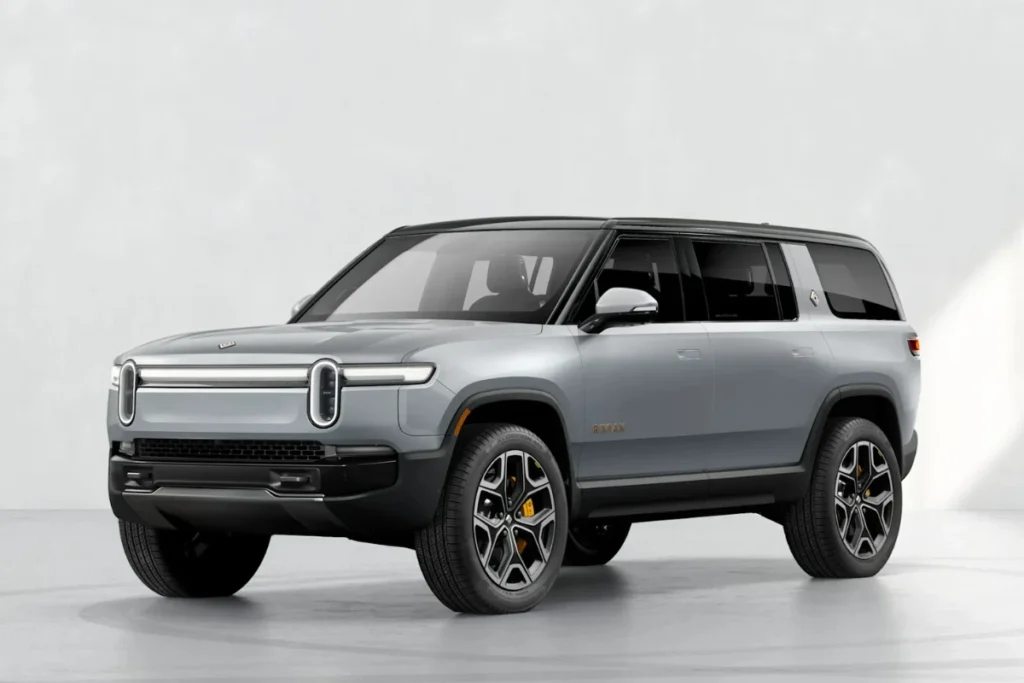
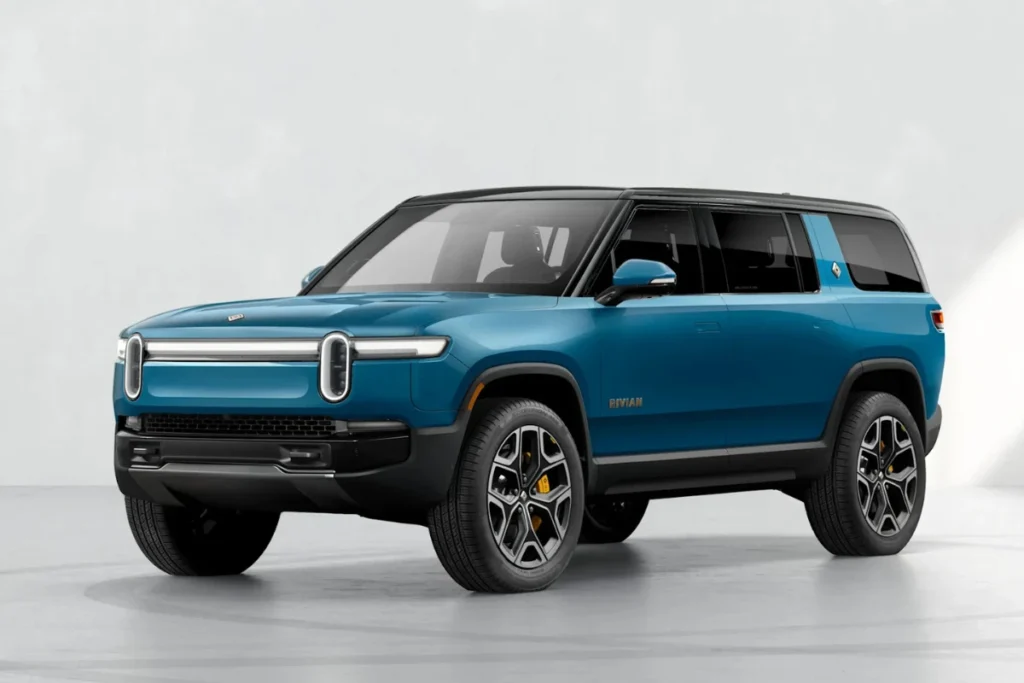



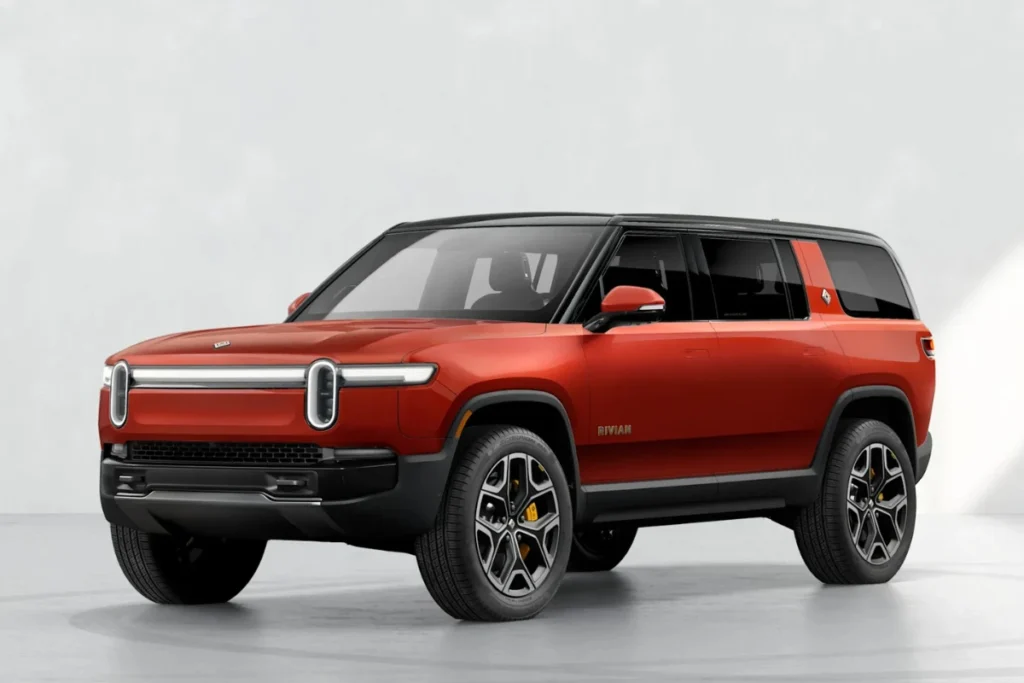
Exterior Dimensions
| Dimension | Adventure Dual-Motor Standard Pack | Adventure Dual-Motor Large Pack | Adventure Performance Dual-Motor Large Pack | Adventure Dual-Motor Max Pack | Adventure Performance Dual-Motor Max Pack | Premium Tri-Motor Max Pack | Ascend Tri-Motor Max Pack | Premium Quad-Motor Max Pack |
|---|---|---|---|---|---|---|---|---|
| Base Price | $77,700 | $84,700 | $90,700 | $91,700 | $96,700 | $107,700 | $107,700 | $117,700 |
| Wheelbase | 121.1 in | 121.1 in | 121.1 in | 121.1 in | 121.1 in | 121.1 in | 121.1 in | 121.1 in |
| Overall Length | 200.8 in | 200.8 in | 200.8 in | 200.8 in | 200.8 in | 200.8 in | 200.8 in | 200.8 in |
| Overall Width (without mirrors) | 81.8 in | 81.8 in | 81.8 in | 81.8 in | 81.8 in | 81.8 in | 81.8 in | 81.8 in |
| Overall Height | 77.3 in | 77.3 in | 77.3 in | 77.3 in | 77.3 in | 77.3 in | 77.3 in | 77.3 in |
| Ground Clearance (min) | 8.7 in | 8.7 in | 8.7 in | 8.7 in | 8.7 in | 8.7 in | 8.7 in | 8.7 in |
| Ground Clearance (max) | 15.0 in | 15.0 in | 15.0 in | 15.0 in | 15.0 in | 15.0 in | 15.0 in | 15.0 in |
Interior Dimensions
| Dimension | Adventure Dual-Motor Standard Pack | Adventure Dual-Motor Large Pack | Adventure Performance Dual-Motor Large Pack | Adventure Dual-Motor Max Pack | Adventure Performance Dual-Motor Max Pack | Premium Tri-Motor Max Pack | Ascend Tri-Motor Max Pack | Premium Quad-Motor Max Pack |
|---|---|---|---|---|---|---|---|---|
| Passenger Capacity | 7 | 7 | 7 | 7 | 7 | 7 | 7 | 7 |
| Front Head Room | 41.1 in | 41.1 in | 41.1 in | 41.1 in | 41.1 in | 41.1 in | 41.1 in | 41.1 in |
| Front Leg Room | 41.4 in | 41.4 in | 41.4 in | 41.4 in | 41.4 in | 41.4 in | 41.4 in | 41.4 in |
| Front Shoulder Room | 60.6 in | 60.6 in | 60.6 in | 60.6 in | 60.6 in | 60.6 in | 60.6 in | 60.6 in |
| Front Hip Room | 54.9 in | 54.9 in | 54.9 in | 54.9 in | 54.9 in | 54.9 in | 54.9 in | 54.9 in |
| Second Row Head Room | 39.7 in | 39.7 in | 39.7 in | 39.7 in | 39.7 in | 39.7 in | 39.7 in | 39.7 in |
| Second Row Leg Room | 36.6 in | 36.6 in | 36.6 in | 36.6 in | 36.6 in | 36.6 in | 36.6 in | 36.6 in |
| Second Row Shoulder Room | 58.9 in | 58.9 in | 58.9 in | 58.9 in | 58.9 in | 58.9 in | 58.9 in | 58.9 in |
| Second Row Hip Room | 54.2 in | 54.2 in | 54.2 in | 54.2 in | 54.2 in | 54.2 in | 54.2 in | 54.2 in |
| Third Row Head Room | 38.6 in | 38.6 in | 38.6 in | 38.6 in | 38.6 in | 38.6 in | 38.6 in | 38.6 in |
| Third Row Leg Room | 32.8 in | 32.8 in | 32.8 in | 32.8 in | 32.8 in | 32.8 in | 32.8 in | 32.8 in |
| Third Row Shoulder Room | 51.1 in | 51.1 in | 51.1 in | 51.1 in | 51.1 in | 51.1 in | 51.1 in | 51.1 in |
| Third Row Hip Room | 42.8 in | 42.8 in | 42.8 in | 42.8 in | 42.8 in | 42.8 in | 42.8 in | 42.8 in |
Cargo Dimensions
| Dimension | Adventure Dual-Motor Standard Pack | Adventure Dual-Motor Large Pack | Adventure Performance Dual-Motor Large Pack | Adventure Dual-Motor Max Pack | Adventure Performance Dual-Motor Max Pack | Premium Tri-Motor Max Pack | Ascend Tri-Motor Max Pack | Premium Quad-Motor Max Pack |
|---|---|---|---|---|---|---|---|---|
| Front Trunk (Frunk) Capacity | 11.0 cu ft | 11.0 cu ft | 11.0 cu ft | 11.0 cu ft | 11.0 cu ft | 11.0 cu ft | 11.0 cu ft | 11.0 cu ft |
| Cargo Space Behind Third Row | 17.7 cu ft | 17.7 cu ft | 17.7 cu ft | 17.7 cu ft | 17.7 cu ft | 17.7 cu ft | 17.7 cu ft | 17.7 cu ft |
| Cargo Space Behind Second Row | 46.7 cu ft | 46.7 cu ft | 46.7 cu ft | 46.7 cu ft | 46.7 cu ft | 46.7 cu ft | 46.7 cu ft | 46.7 cu ft |
| Cargo Space Behind First Row | 104.7 cu ft | 104.7 cu ft | 104.7 cu ft | 104.7 cu ft | 104.7 cu ft | 104.7 cu ft | 104.7 cu ft | 104.7 cu ft |
| Cargo Length Behind Third Row | 21.0 in | 21.0 in | 21.0 in | 21.0 in | 21.0 in | 21.0 in | 21.0 in | 21.0 in |
| Cargo Length Behind Second Row | 57.8 in | 57.8 in | 57.8 in | 57.8 in | 57.8 in | 57.8 in | 57.8 in | 57.8 in |
| Cargo Length Behind First Row | 84.7 in | 84.7 in | 84.7 in | 84.7 in | 84.7 in | 84.7 in | 84.7 in | 84.7 in |
| Cargo Width at Beltline | 58.9 in | 58.9 in | 58.9 in | 58.9 in | 58.9 in | 58.9 in | 58.9 in | 58.9 in |
| Cargo Width Between Wheelhousings | 51.1 in | 51.1 in | 51.1 in | 51.1 in | 51.1 in | 51.1 in | 51.1 in | 51.1 in |
| Cargo Height | 33.7 in | 33.7 in | 33.7 in | 33.7 in | 33.7 in | 33.7 in | 33.7 in | 33.7 in |
Weight & Capacity
| Dimension | Adventure Dual-Motor Standard Pack | Adventure Dual-Motor Large Pack | Adventure Performance Dual-Motor Large Pack | Adventure Dual-Motor Max Pack | Adventure Performance Dual-Motor Max Pack | Premium Tri-Motor Max Pack | Ascend Tri-Motor Max Pack | Premium Quad-Motor Max Pack |
|---|---|---|---|---|---|---|---|---|
| Curb Weight (est.) | 6,700 lbs | 6,800 lbs | 6,800 lbs | 7,000 lbs | 7,000 lbs | 7,100 lbs | 7,100 lbs | 7,200 lbs |
| Gross Vehicle Weight Rating (GVWR) | 8,532 lbs | 8,532 lbs | 8,532 lbs | 8,532 lbs | 8,532 lbs | 8,532 lbs | 8,532 lbs | 8,532 lbs |
| Front Gross Axle Weight Rating | 4,134 lbs | 4,134 lbs | 4,134 lbs | 4,134 lbs | 4,134 lbs | 4,134 lbs | 4,134 lbs | 4,134 lbs |
| Rear Gross Axle Weight Rating | 4,960 lbs | 4,960 lbs | 4,960 lbs | 4,960 lbs | 4,960 lbs | 4,960 lbs | 4,960 lbs | 4,960 lbs |
| Maximum Payload Capacity (est.) | 1,800 lbs | 1,700 lbs | 1,700 lbs | 1,500 lbs | 1,500 lbs | 1,400 lbs | 1,400 lbs | 1,300 lbs |
| Maximum Towing Capacity | 7,700 lbs | 7,700 lbs | 7,700 lbs | 7,700 lbs | 7,700 lbs | 7,700 lbs | 7,700 lbs | 7,700 lbs |
| Battery Pack Capacity | 92.5 kWh | 109.4 kWh | 109.4 kWh | 141.5 kWh | 141.5 kWh | 141.5 kWh | 141.5 kWh | 141.5 kWh |
Wheels & Tires
| Dimension | Adventure Dual-Motor Standard Pack | Adventure Dual-Motor Large Pack | Adventure Performance Dual-Motor Large Pack | Adventure Dual-Motor Max Pack | Adventure Performance Dual-Motor Max Pack | Premium Tri-Motor Max Pack | Ascend Tri-Motor Max Pack | Premium Quad-Motor Max Pack |
|---|---|---|---|---|---|---|---|---|
| Front Wheel Size | 20 x 8.5 in | 22 x 8.5 in | 22 x 8.5 in | 22 x 8.5 in | 22 x 8.5 in | 22 x 8.5 in | 22 x 8.5 in | 22 x 8.5 in |
| Rear Wheel Size | 20 x 8.5 in | 22 x 8.5 in | 22 x 8.5 in | 22 x 8.5 in | 22 x 8.5 in | 22 x 8.5 in | 22 x 8.5 in | 22 x 8.5 in |
| Front Tire Size | LT275/60HR20 | LT275/50HR22 | LT275/50HR22 | LT275/50HR22 | LT275/50HR22 | LT275/55HR22 | LT275/50HR22 | LT275/55HR22 |
| Rear Tire Size | LT275/60HR20 | LT275/50HR22 | LT275/50HR22 | LT275/50HR22 | LT275/50HR22 | LT275/55HR22 | LT275/50HR22 | LT275/55HR22 |
| Spare Tire | Tire Mobility Kit | Tire Mobility Kit | Tire Mobility Kit | Tire Mobility Kit | Tire Mobility Kit | Tire Mobility Kit | Tire Mobility Kit | Tire Mobility Kit |
Turning & Maneuverability
| Dimension | Adventure Dual-Motor Standard Pack | Adventure Dual-Motor Large Pack | Adventure Performance Dual-Motor Large Pack | Adventure Dual-Motor Max Pack | Adventure Performance Dual-Motor Max Pack | Premium Tri-Motor Max Pack | Ascend Tri-Motor Max Pack | Premium Quad-Motor Max Pack |
|---|---|---|---|---|---|---|---|---|
| Turning Diameter (curb to curb) (est.) | 40.5 ft | 40.5 ft | 40.5 ft | 40.5 ft | 40.5 ft | 40.5 ft | 40.5 ft | 40.5 ft |
| Approach Angle | 35.6° | 35.6° | 35.6° | 35.6° | 35.6° | 35.6° | 35.6° | 35.6° |
| Departure Angle | 34.3° | 34.3° | 34.3° | 34.3° | 34.3° | 34.3° | 34.3° | 34.3° |
| Breakover Angle | 29.3° | 29.3° | 29.3° | 29.3° | 29.3° | 29.3° | 29.3° | 29.3° |
| Water Fording Depth | 3.0 ft | 3.0 ft | 3.0 ft | 3.0 ft | 3.0 ft | 3.0 ft | 3.0 ft | 3.0 ft |
2025 Rivian R1S Overview:
The 2025 Rivian R1S is what they’re calling a “second-generation” model, but you can still spot its familiar shape and core design that fans loved about the old one. This electric SUV, with three rows of seating, has seen some serious upgrades beneath the surface. These enhancements really boost its performance, efficiency, and tech capabilities, making it a standout in the premium electric SUV market. After putting it through its paces—from smooth highway driving to tackling tough off-road paths filled with snow, mud, and rocky terrain—we found the R1S to be an exciting choice for families who crave adventure and need a reliable electric vehicle.
Now, the R1S sits in a pretty unique spot in the market, filling a gap that not many competitors really touch. Sure, the Tesla Model X is in a similar price range and offers comparable performance, but it doesn’t quite have the off-road chops and has a more futuristic, unconventional interior. Tesla does have an edge with its Autopilot system and a broader charging network, but the R1S is all about being rugged and ready for adventure. Then there’s the Kia EV9, which is a more budget-friendly option that can also seat three rows, but it can’t keep up with the R1S when it comes to performance, range, or off-road abilities—though, hey, it does come with solid infotainment options like Apple CarPlay and Android Auto.
If you’re looking at other premium options, there’s the Volvo EX90, which is priced similarly and takes a more classic luxury route. While it might handle better on paved roads, it doesn’t quite measure up to the R1S in terms of performance or off-road capability. BMW’s iX is focused on luxury too, and is in the same ballpark price-wise, but it lacks utility and is basically useless off-road. The GMC Hummer EV SUV is probably the closest competitor to the R1S when it comes to performance and off-roading, but it’s pricier, less efficient, and only has two rows of seating.
What really makes the R1S stand out in this crowded field is its killer combination of impressive performance, real off-road ability, practical three-row seating, and a high-quality interior. The powertrain lineup is extensive too, catering to different budgets and needs—from the basic Adventure Dual-Motor setup to the high-octane Tri-Motor and top-tier Quad-Motor versions. With all this versatility and better efficiency, and range, the R1S is a great option for families who want to go electric without giving up on performance or practicality.
The 2025 version has also brought some noteworthy upgrades compared to the last model. It features a fresh electrical architecture that cuts down over 44 pounds of wiring and reduces the number of ECUs from 17 to just 7. This means lower latency, quicker processing, and overall better efficiency. The battery lineup has been updated too; the Standard battery now uses lithium-iron-phosphate chemistry, while the Large and Max batteries have seen improvements in their range. Plus, Rivian has moved motor production in-house for the Tri-Motor and Quad-Motor setups, which should lead to better performance.
Another big change for 2025 is the revamped suspension system. They’ve retuned it with new air springs, updated adaptive dampers, and a new hydraulic roll-mitigation system. These tweaks tackle previous concerns about body control and steering feel, making for a smoother and more comfortable ride. And let’s not forget about the new “Adaptive Drive Beam” headlight tech, which is designed to improve visibility without blinding other drivers. That’s set to come through an over-the-air update later in the model year. All in all, these upgrades, along with the already solid foundation of the vehicle, make the 2025 R1S a much more refined and capable choice in the electric SUV landscape.
Trim Levels and Pricing:
The 2025 Rivian R1S lineup is pretty interesting, offering a bunch of different trim levels that cater to various tastes and needs. It’s essential for anyone thinking about buying one to really dig into these options, you know? Figuring out what works best for your budget and lifestyle is key.
So, let’s kick things off with the Adventure trim. It starts at $77,700 for the Dual-Motor setup with the Standard battery pack. This is, like, the most budget-friendly way to get into the R1S world, giving you that core Rivian experience along with enough capability for most everyday drivers. You’ll find it’s packed with features like air suspension, a vegan leather interior (which is kinda cool), and a nice 15.6-inch touchscreen infotainment system. If you want to boost your range, you can upgrade to the Large battery for an extra $7,000, bringing you to $84,700. Or, if you’re feeling extra adventurous, the Max battery option will set you back another $7,000, totaling $91,700. These upgrades really do extend the range without messing with how the vehicle performs.
Now, let’s talk about the California Dune Edition, which kicks off at $105,900. This one’s a standout in the R1S lineup! It has this awesome desert-inspired paint job and comes with off-road gear as standard, all powered by the Tri-Motor. It’s definitely aimed at those who want something a little different and stylish without giving up on performance. Rivian seems to get that a lot of buyers care about how their car looks and feels, not just how it drives.
If you’re looking for a bit more luxury, the Premium trim starts at $107,700. This one’s all about those high-end touches, adding better materials inside and more comfort features while still keeping the performance intact. You can choose between the Tri-Motor ($107,700) and the Quad-Motor ($117,000) options, letting you find the right mix of power and efficiency that suits you. The Premium trim is the most opulent R1S experience and is perfect for folks who want to enjoy a refined ride without losing that adventurous spirit.
Then there’s the Ascend trim, also starting at $107,700, but it’s only offered with the Tri-Motor and Quad-Motor setups. This trim is like the cherry on top of the R1S lineup. It’s packed with all the luxury features you could want, although the specifics aren’t super clear from the info available. But you can bet it comes loaded with all the comfort, convenience, and tech goodies. If you’re after the full package, the Ascend is the way to go—no compromises.
Finally, for those who crave performance, the Quad-Motor configuration is the top dog in the electric SUV game, with prices that can soar to around $130,000 when fully decked out. Sure, that’s a hefty jump from the base models, but the performance and off-road prowess it delivers make it a tempting choice for buyers who have the cash to splash. Rivian’s pricing and variety really allow them to cater to different segments of the premium EV market, making the R1S appealing to a wide range of potential buyers.
Engine Options and Performance Specs:
The 2025 Rivian R1S brings a lot to the table when it comes to powertrains. There’s quite a variety, each with its own unique performance traits, but they all keep those classic electric perks—like that instant torque and smooth, steady power delivery. Unlike your typical gas-guzzlers with their clunky transmissions, the R1S uses direct-drive electric motors. That means no more gear shifting, just smooth acceleration all the way through the speed range.
Let’s talk about the standard Dual-Motor setup first. This dishes out 553 horsepower and 610 pound-feet of torque. Honestly, those numbers would make any gas-powered performance SUV jealous, and here it is in an entry-level electric model! With one motor on each axle, it gives you true all-wheel drive and nifty electronic torque vectoring. If you’re after a little more kick without jumping up to the fancier trims, you can opt for the Performance upgrade. For an extra $5,000, you get it boosted to 665 horsepower and 829 pound-feet. Plus, you unlock some cool new drive modes like soft sand and rally. The Dual-Motor R1S, when equipped with the Performance package, zips from 0 to 60 mph in about 3.4 seconds. Pretty impressive for a vehicle this size, right?
Now, new for 2025, we have the Tri-Motor configuration. This is a real game-changer in terms of performance. It sports one motor up front and two at the back, cranking out a whopping 850 horsepower and a mind-boggling 1,103 pound-feet of torque. Those rear motors allow for true mechanical torque vectoring, which means you can send different power levels to each rear wheel. This gives you better handling on the road and more off-road prowess, thanks to more precise power distribution than what brake-based systems can offer. The Tri-Motor R1S can hit 0 to 60 mph in roughly 2.9 seconds, and it has additional drive modes like drift mode, rock crawl, and a new conserve mode for when you want to stretch your range on longer trips.
And then there’s the top-of-the-line Quad-Motor configuration, which got a serious upgrade for 2025. This setup now churns out an insane 1,050 horsepower and 1,198 pound-feet of torque—up by 215 horsepower and 290 pound-feet from the 2024 model. With each wheel powered by its own motor, this Quad-Motor system gives you unmatched control, whether you’re cruising down the highway or tackling rough terrain. What about the acceleration? It’s blistering fast, hitting that 0 to 60 mph mark in about 2.5 seconds if you go for the optional Michelin Pilot Sport S5 tires. Just think about it—a three-row family SUV keeping pace with supercars that cost way more.
Now, let’s not overlook a key technical feature of the R1S’s powertrain: the clutch disconnect system. This clever little system lets the motors disconnect from the wheels when they’re not needed. Rivian has improved this for 2025 across all configurations, leading to smoother performance and better efficiency. In the Tri-Motor and Quad-Motor versions, there’s a “conserve” mode that mainly uses the front motor for cruising, only kicking in the rear motors when you really need that extra power or traction. This smart power management system helps you maximize your range while still being able to unleash full performance when the moment calls for it. Oh, and did we mention the motors are oil-cooled instead of using those external water jackets? That’s a big win for thermal management, especially during intense driving or tricky off-road situations.
But it’s not all about speed—these electric powertrains pack some real-world benefits too. That instant torque means you get great responsiveness when you’re merging onto highways or trying to pass someone slowly. Plus, the precise control over power to each wheel boosts stability in bad weather. And if you’re the adventurous type who likes to go off-road, the electric motors let you modulate power with precision on tough terrain—often better than what you’d get with traditional engines. All in all, these powertrain options in the R1S aren’t just impressive in theory; they really ramp up the driving experience in all sorts of situations.
Closer Look at the Rivian R1S Brakes:
So, the R1S employs this blended braking system that smoothly switches between regenerative braking—which, by the way, captures kinetic energy to charge the battery—and the regular friction brakes when you really need to stop on a dime. Drivers get to choose from three levels of regenerative braking: Low, Standard, and High. This means you can tailor your driving experience to what feels right for you. The Standard mode strikes a good balance for most situations. It gives enough regenerative deceleration for that one-pedal driving you might want in the city without being too intense on the highway. The High setting is where things get interesting—you can actually stop completely by just letting off the accelerator, which is super handy in stop-and-go traffic. One downside we noticed, though, is that, unlike some other vehicles out there, the R1S doesn’t let you turn off regenerative braking entirely. That might bug drivers who like a more traditional coasting experience.
When it comes to emergency stops, the R1S doesn’t disappoint, especially considering it weighs around 6,700 to 7,200 pounds, depending on how it’s configured. The brake pedal feels pretty intuitive and progressive, giving you a solid bite at the start and consistent resistance as you push down. But here’s the thing: when we tested the Quad-Motor variant—which has extra power—there were hints that the braking system could use some upgrades to keep up with that performance boost. After several high-speed stops, we felt the brake pedal start to soften a bit, indicating it might be nearing its thermal limits with heavy use. That’s particularly important for folks who might frequently push the R1S’s impressive acceleration or those who plan to tackle hilly terrain where braking is crucial.
Off-road, though? The braking system really shines. You can finely control the brake pedal, which is super helpful on tricky trails, especially when you’re going down steep hills. Plus, the R1S has this nifty hill descent control feature in its off-road modes. It automatically manages braking to keep a steady speed while you’re navigating steep descents, letting you focus on steering and dodging obstacles instead of worrying about the brakes. It all works together with the vehicle’s air suspension and electronic stability controls to give you a lot of confidence in challenging off-road situations.
Now, something interesting we noticed is how the braking system behaves in cold weather. A few testers pointed out that regenerative braking can feel a bit more aggressive when you first start the vehicle in chilly conditions, but it tends to smooth out as the system warms up. This is something to keep in mind for drivers in colder areas; you might need a moment to adjust during those first few minutes of driving on a cold morning. It seems like Rivian’s engineering team made this decision to help with battery conditioning and system protection, but it could be a tiny learning curve for new owners.
All in all, the braking system in the R1S is pretty well matched to the vehicle’s diverse capabilities. It gives you reliable stopping power for day-to-day driving while also reaping the benefits of regenerative braking. For most drivers, it should perform just fine across all scenarios. However, if you’re someone who plans to really push the vehicle’s performance—especially with the more powerful Tri-Motor and Quad-Motor versions—you might wish for some beefier braking hardware to keep pace with that exhilarating acceleration. This could be a potential area for Rivian to consider improving in future updates, ensuring the vehicle’s acceleration and stopping power are truly in sync at the limits of performance.
Steering and Suspension Performance on Various Terrains:
The 2025 Rivian R1S comes with a completely overhauled suspension system that tackles some of the issues folks had with earlier versions. It’s all about making the ride smoother on the road while still being tough enough for off-road adventures. This new setup mixes air springs, adaptive dampers, and a fresh hydraulic roll-mitigation system, which altogether creates a driving experience that’s pretty impressive, especially given how big and heavy the vehicle is.
For this year, Rivian has tweaked the air suspension system quite a bit, introducing new springs and fine-tuning the adaptive dampers. The result – Way better body control! Previous R1S models sometimes got knocked for having too much body motion—like that annoying “head bob” you feel when you accelerate or brake. But after taking the new model for a spin, it’s clear there’s been some serious improvement. The 2025 R1S handles aggressive driving a lot better. It now manages weight transfer during quick accelerations much more effectively, which means it doesn’t squat down like earlier models did. And when you hit the brakes hard, it stays steady, making those emergency stops and spirited drives on twisty roads feel more secure.
One cool feature of the air suspension is how you can adjust the ride height, making the R1S super versatile. In its standard mode, it strikes a nice balance between comfort and stability for daily driving. Flip it into Sport mode, and the suspension drops down, which lowers the center of gravity—great for handling and even helps with highway efficiency. And if you’re planning to hit some trails, you can raise it up to a whopping 15 inches of ground clearance! That’s pretty impressive, especially compared to most off-road vehicles out there. This flexibility means the R1S can handle everything from tight parking garages to rugged off-road paths without breaking a sweat.
Now, let’s talk about the steering. It’s got precise control and good feedback thanks to its electric power-assisted design. The weight feels just right—enough to give you confidence on the highway but not so heavy that it makes parking a hassle. Some testers mentioned that at higher speeds, the steering can feel a bit too eager, needing smaller adjustments than you might expect in a vehicle this size. It’s not a safety concern, but it might take a little getting used to if you’re coming from a more traditional SUV. The steering ratio is on the quicker side, which really helps the R1S feel nimbler than you’d think, especially in city driving, where tight turns are the name of the game.
When you take it off the beaten path, the suspension and steering systems work together really well to keep traction and control in tough conditions. The air suspension not only gives you that extra ground clearance but also helps the wheels stay in contact with bumpy surfaces. Plus, those adaptive dampers adjust automatically to soak up the bumps from rocks and ruts while keeping body movements in check. Off-road steering is responsive, too, giving you solid feedback about the terrain without too much jolt back to your hands. This combination makes the R1S surprisingly capable in technical off-road situations, which is great for drivers who might not have a ton of off-roading experience.
However, there’s still a bit of room for improvement when it comes to noise isolation. A few testers pointed out that, although the ride quality is solid, the suspension can let in more noise than you’d like, especially over rough urban streets. It doesn’t really mess with comfort in terms of jolts, but it does take away from that premium vibe you get from the rest of the vehicle. Also, sometimes, the switch between regenerative and friction braking can lead to slight changes in how the vehicle pitches, which is something many electric cars deal with. But despite these minor quirks, the 2025 R1S really steps up its game with its steering and suspension, offering a driving experience that nicely balances comfort, control, and capability across all sorts of driving situations.
Tires and Traction:
If we look at the standard package, it comes with 20-inch wheels and all-terrain tires. These are pretty good for balancing comfort on the road and capability off it. The tread pattern is more aggressive than what you’d find on your average all-season tire, plus they have reinforced sidewalls to resist punctures when you’re off-roading. From our testing on gravel and moderate trails, these tires really showed off their traction on all sorts of surfaces—loose dirt, mud, and rocky paths. Sure, they do make a bit more noise on the pavement than tires meant just for that, but honestly, most drivers wouldn’t find it too bothersome. One thing to keep in mind, though, is that these all-terrain tires can cut your range by about 40 miles compared to the more road-efficient options. So, if you’re all about maximizing range, that’s something to consider. But hey, many adventure lovers might think it’s a fair trade-off for the extra capabilities.
For folks who stick mostly to the roads and care more about handling and efficiency, Rivian has 21-inch and 22-inch wheels with tires that focus more on road performance. Especially the 22-inch ones—they really change the game! You get sharper steering response and better stability at high speeds. Just a heads up, though: the larger wheels and lower-profile tires do let more bumps and imperfections from the road be felt inside the cabin, which might make for a rougher ride on uneven surfaces. But they also make the R1S feel more like a sporty SUV, which is quite impressive given its size. We found that the 22-inch package pairs really well with the high-performance Tri-Motor and Quad-Motor setups, effectively putting all that power to the ground and improving the overall driving experience.
Speaking of the Quad-Motor variant, you can get it with Michelin Pilot Sport S5 tires on those 22-inch wheels. This setup is all about performance. It gives you a serious grip for acceleration and cornering, allowing the Quad-Motor to hit that impressive 0-60 mph in just 2.5 seconds. During our tests, the difference between the standard all-season tires and the Pilot Sport S5s was huge—those performance tires gave way better cornering confidence and traction, especially when you really put the pedal down. If you’re planning to push the limits of the higher-powered R1S models, this tire package is a must. Just keep in mind, it does affect ride comfort and isn’t the best choice for any serious off-roading beyond smooth dirt paths.
Tire pressure is also a big deal across all R1S configurations. We noticed that the factory-set pressures, usually around the mid-40 PSI range, are great for efficiency and on-road performance, but they might be too high for comfort when you’re off-roading. Lowering the pressure to about 30-35 PSI can really improve traction and make the ride smoother on rough terrain. And here’s a cool feature: the R1S comes with a built-in air compressor right in the rear cargo area! So, you can easily adjust your tire pressure while you’re out and about and then reinflate before heading back to the pavement. It’s super handy for those who love a good adventure and don’t want to lug around a separate compressor.
No matter which wheels and tires you choose, all R1S models do pretty well in wet conditions, thanks to the precise control from the electric motors and advanced traction systems. Even with tires geared towards performance, the R1S handles confidently in tricky weather. That said, if you live in an area with heavy snowfall, you might want to invest in dedicated winter tires. And the adjustable ride height is a thoughtful addition that helps protect even the biggest wheel options from damage when you hit obstacles. It’s a smart engineering move that makes those road-focused tire packages a little more practical for occasional light off-roading.
Inside the Rivian R1S:
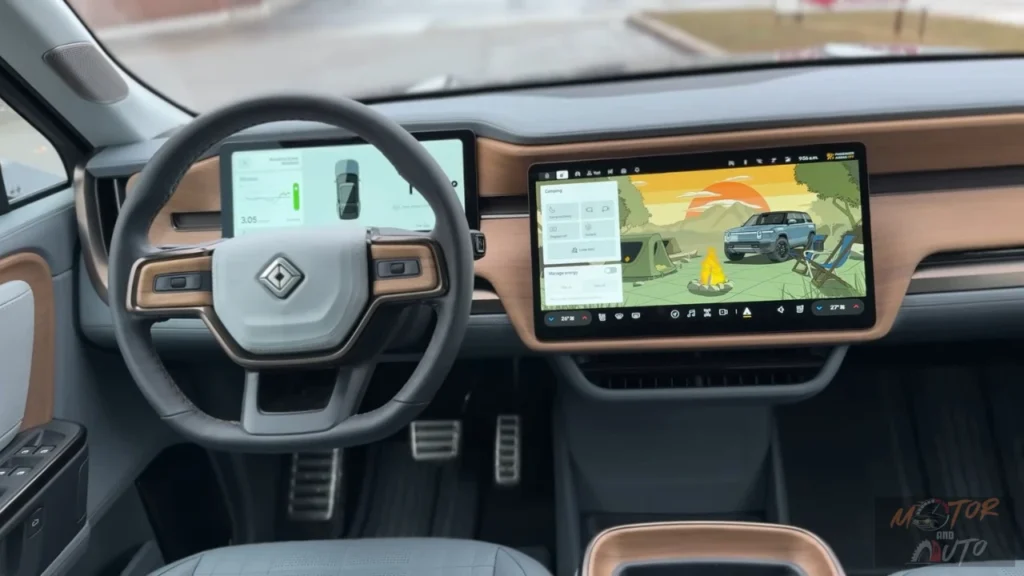
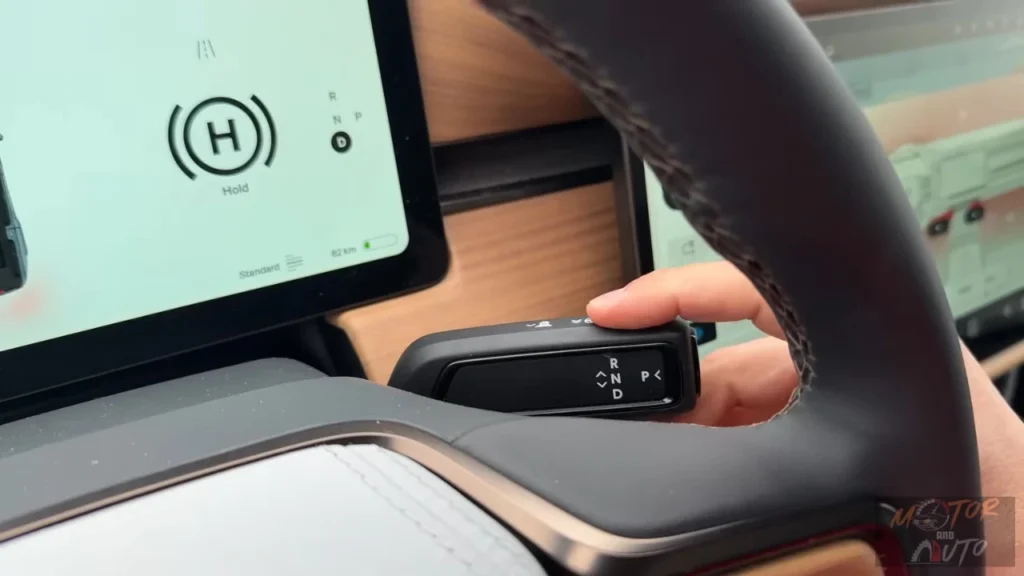
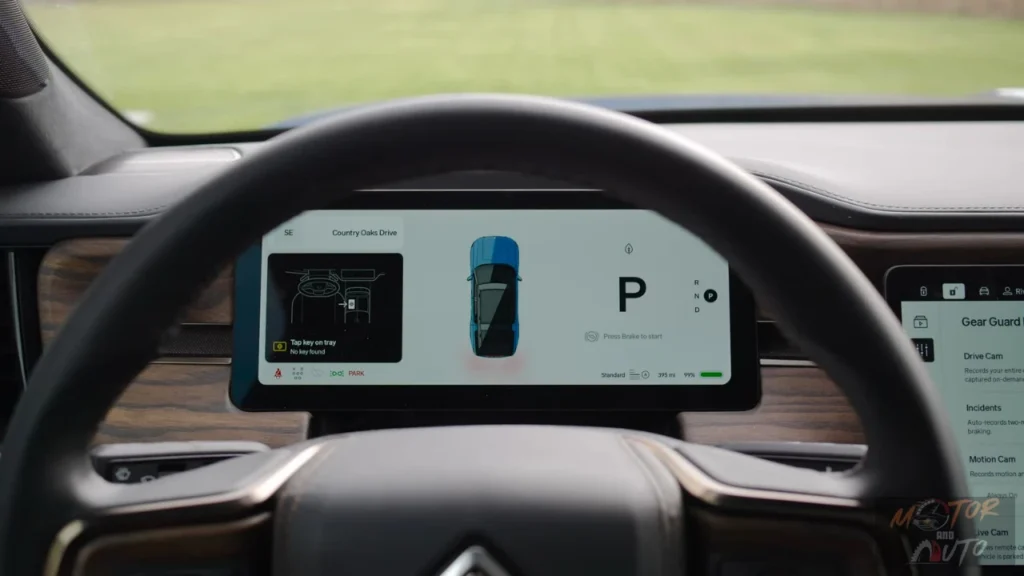
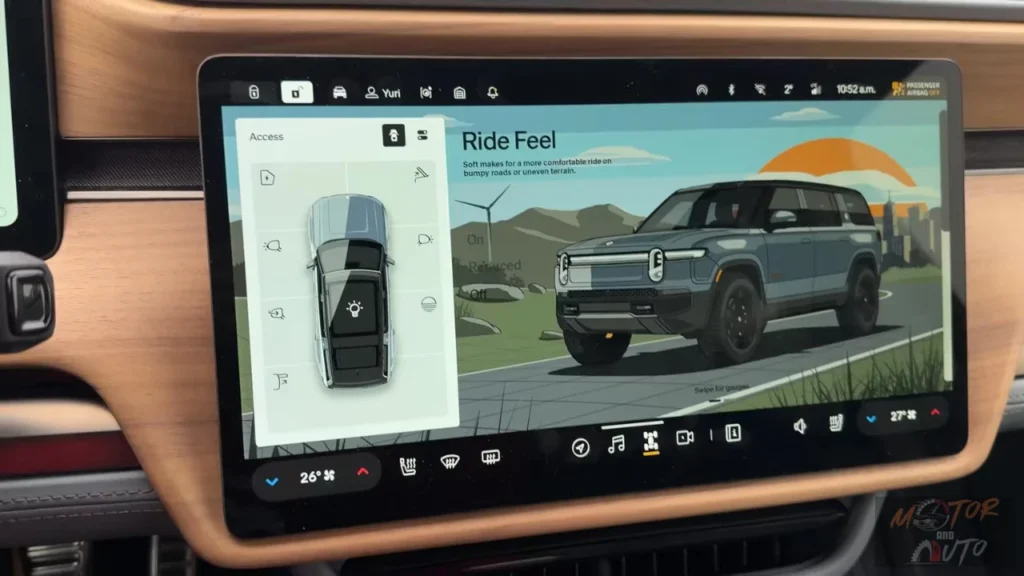
Step inside the 2025 Rivian R1S, and, wow, you can’t help but be struck by its immediate charm. It’s not just about looking good; it’s this cool mix of premium materials, smart design, and a spirit ready for adventure. Unlike a lot of luxury rides that go heavy on the shiny chrome and glossy finishes, the R1S takes a different route. It crafts its upscale vibe with sustainable materials and a keen eye for detail that speaks to those who love the outdoors.
As you settle in, you’ll notice that Rivian uses high-quality vegan leather upholstery throughout the cabin. It’s not just about looking fancy; it feels great, too, and fits right into the company’s eco-friendly philosophy. This material wraps around the comfy seats and even makes its way onto parts of the dashboard and door panels. To complement the vegan leather, there’s gorgeous open-pore wood trim that really warms up the space, giving it a nice, tactile feel. The wood is particularly eye-catching on the dashboard, creating a horizontal design that visually broadens the cabin. Plus, you can choose from different finishes, including a dark ash option, which all help the R1S stand out without falling into the usual luxury clichés. Honestly, the quality of materials is impressive, even compared to more established luxury brands, while still offering a unique look.
Now, let’s talk about the dashboard. It’s all about two screens here: you’ve got a digital instrument cluster right in front of the driver and a big 15.6-inch horizontal touchscreen in the center. Unlike some competitors who ditch physical controls altogether, the R1S keeps essential buttons and stalks on the steering wheel for quick access. Sure, many secondary functions are on the touchscreen, but this setup keeps things clean and modern without feeling overwhelming. The horizontal layout of the main screen is a nice change from the vertical ones you see in some other cars—it integrates beautifully with the dashboard design and offers great visibility. At night, the thoughtful ambient lighting highlights important areas without annoying reflections or glare.
One standout feature you might not expect is the flooring. Rivian has gone with these plaid-patterned floor mats made from tough textile material instead of the usual rubber or carpet. It’s a cool choice that adds character and is super practical, especially when it comes to cleaning up after outdoor adventures. You’ll find similar textile material in various storage spots around the cabin, which ties the whole design together and emphasizes that this vehicle is built for adventure. Plus, with fun little details like the “adventurous forever” inscription hidden around, the R1S interior has a personality that’s often missing in more traditional luxury vehicles.
Then there’s the panoramic glass roof. It stretches all the way back to the third row, flooding the cabin with natural light. For 2025, Rivian has introduced this neat “dynamic glass” technology that lets you switch from clear to opaque at the push of a button—so you get the benefits of a sunroof without dealing with a physical shade. This feature adds a touch of high-tech flair while also helping to control light and heat. And hey, even those in the third row can enjoy the views above, which is a thoughtful touch for passengers.
What’s most impressive about the R1S interior, though, is how it maintains that premium feel while being geared for real-life adventures. The storage compartments are lined with materials tough enough for wet or dirty gear. The seats are designed for easy cleaning after a day out. And those thoughtful extras, like a removable Bluetooth speaker in the center console and a built-in flashlight in the driver’s door, really show that Rivian understands how owners are likely to use this vehicle. This blend of luxury and practicality—creating a space that’s both beautiful and functional for active lifestyles—truly sets the R1S apart from both traditional luxury SUVs and more utilitarian off-road vehicles.
Exterior Design Impressions:
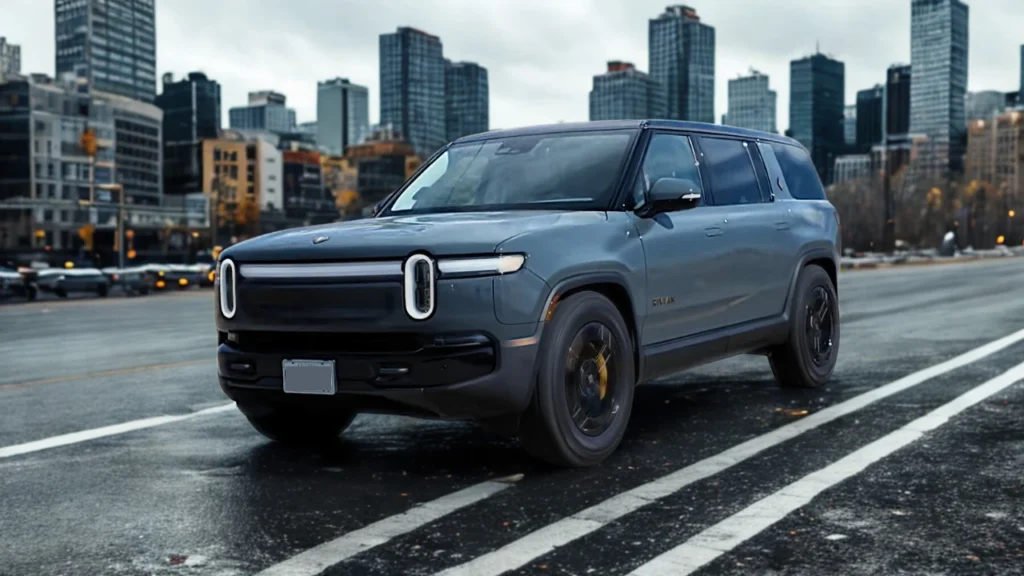
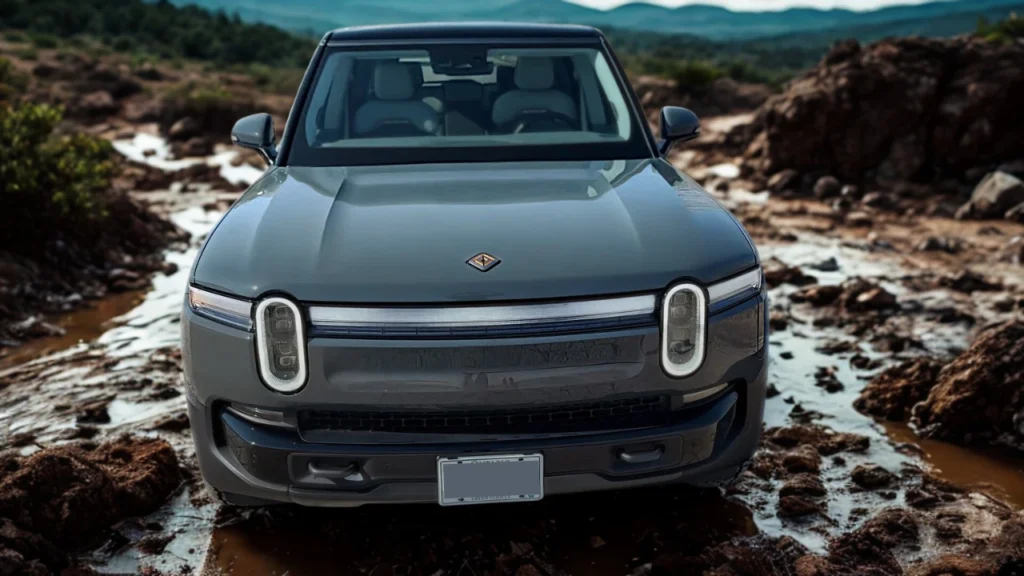
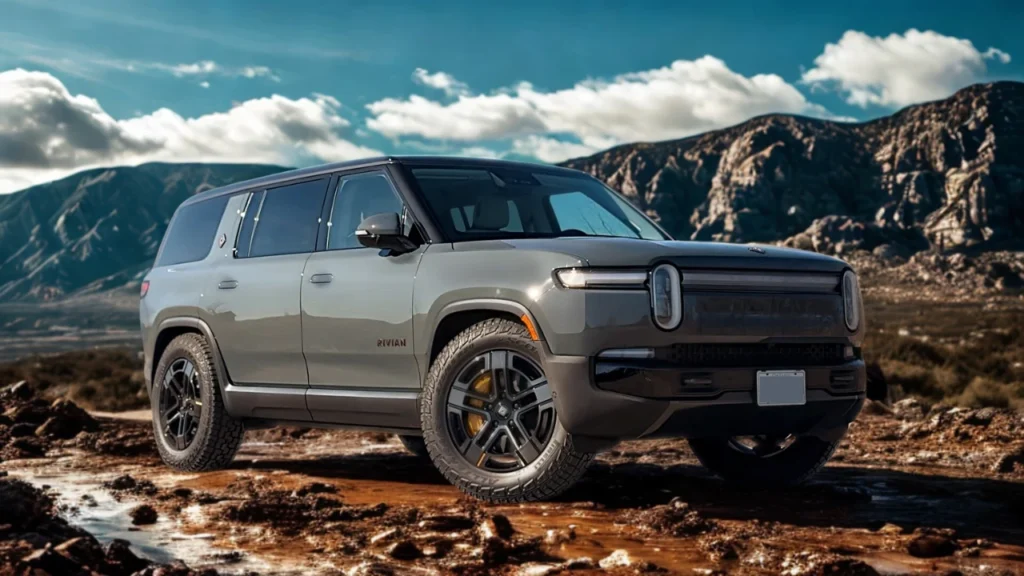
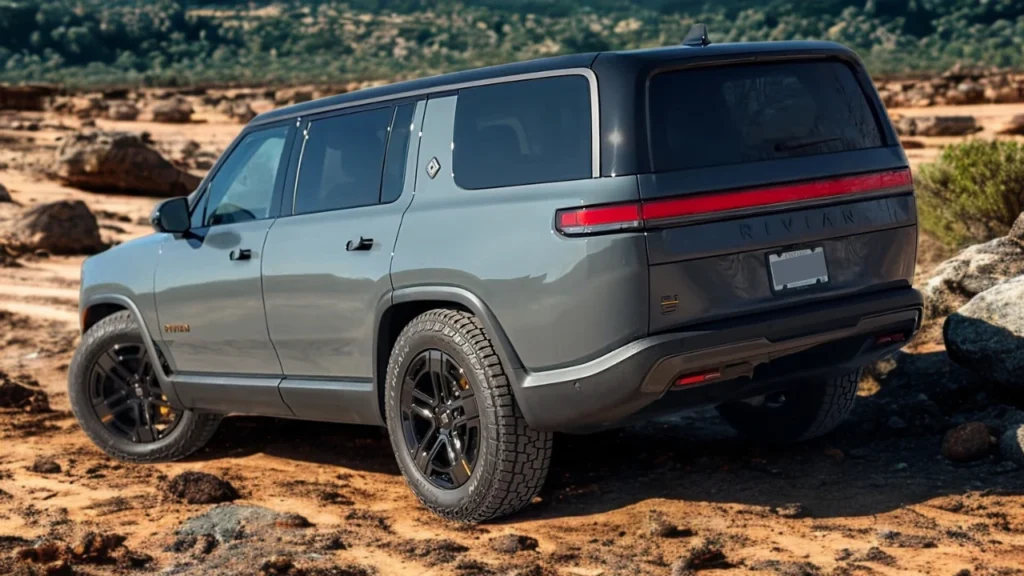
The 2025 Rivian R1S really stands out with its unique and purposeful design. It’s got this cool mix of futuristic vibes and the classic SUV look. Unlike a lot of modern electric cars that go for those sleek, flowing shapes, the R1S opts for a more upright, boxy silhouette. This choice really communicates a sense of capability and utility while also showcasing some distinctive features that set it apart from your typical SUVs.
Now, let’s talk about the front end. Right away, the R1S grabs your attention with its signature lighting elements. Those oval headlights are linked by a full-width light bar, and honestly, it’s both functional and stylish. For 2025, they’ve upgraded the lights to include “Adaptive Drive Beam” tech, which adjusts the light pattern so it doesn’t blind other drivers but still keeps everything super visible. Pretty neat, right? Plus, this light bar doubles as a charging indicator—showing how much juice is left in the battery with illuminated segments when it’s plugged in. It really gives the R1S a recognizable face, even at night, helping Rivian carve out its identity in a crowded car market.
Moving to the side, the R1S sticks to classic two-box SUV proportions, with an upright greenhouse that maximizes both interior space and outward visibility. The sides are nice and clean, without a lot of unnecessary embellishments—just some subtle sculpting that catches the light nicely. The floating roof design, achieved by blacking out the A-pillars and adding a contrasting roof finish, gives it a modern twist while still holding onto that traditional silhouette. The wheel arches have this modest black cladding that screams off-road readiness without going overboard like some competitors do. Those optional 22-inch wheels look great filling out the arches, but honestly, the 20-inch ones with their taller tires seem more balanced for off-roading adventures.
At the back, the design keeps that clean, horizontal vibe going, with a full-width LED light bar that mirrors the front’s lighting signature. This consistency helps the R1S look distinctive from any angle. The split tailgate design, kind of reminiscent of high-end SUVs like the Range Rover, adds some practical utility. The top part is power-operated, while the bottom one folds down manually—super handy for creating a seating area or loading platform when you need it. And, without exhaust outlets or other typical combustion vehicle features, the rear fascia stays clean, reinforcing the electric identity of the R1S.
Rivian offers a variety of options that range from classic to more adventurous shades. The Rivian Blue on our test vehicle strikes a nice balance—unique but not too flashy. Then there’s the California Dune Edition with its desert-inspired colors that highlight the adventurous spirit of the R1S. Just a heads up, though—some of the more eye-catching colors can come with a hefty price tag; options like Midnight (black) can run you up to $3,000. Only the silver finish is included in the base price, which might leave some buyers feeling a bit let down if they were hoping for more bang for their buck in the color department.
As for the different powertrain options, the visual differences are pretty subtle. The Tri-Motor and Quad-Motor versions are primarily marked by yellow brake calipers and small yellow accents on the front tow hooks and roof rails. These little touches hint at the performance capabilities without changing the overall look too much. This understated approach really fits the personality of the R1S—showing off its capability without going for aggressive styling or unnecessary drama. In the end, it’s a design that stands out because of its confident simplicity, creating a timeless quality that should hold up well over the years.
Comfort and Convenience Features

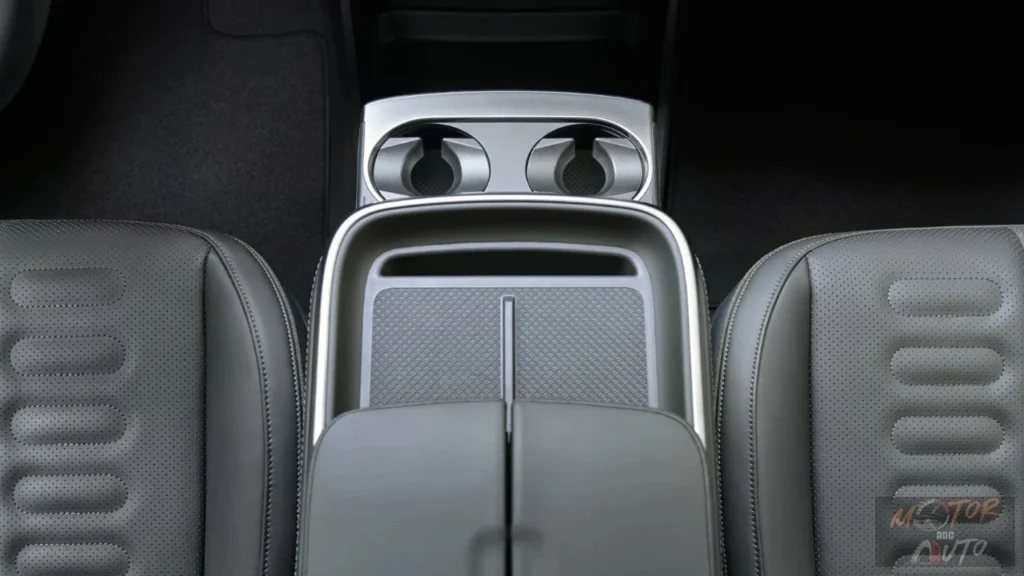
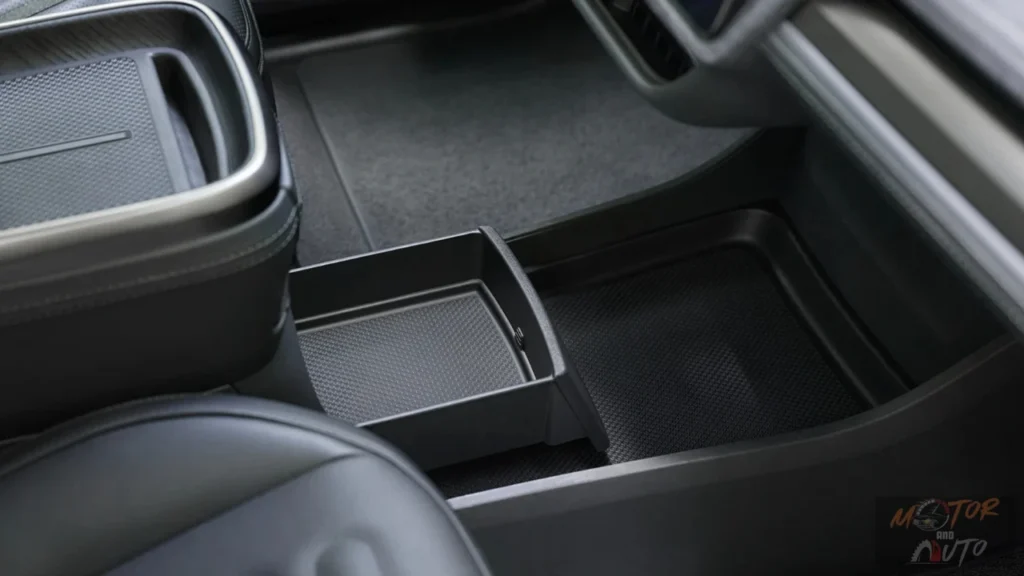
The 2025 Rivian R1S really shines when it comes to comfort and convenience features, which can definitely enhance the overall ownership experience. But there are a few surprising omissions that might raise eyebrows, especially considering the price tag. Rivian seems to have a unique take on things—focusing on features that cater to active lifestyles while sometimes stepping away from what you’d typically expect in the luxury segment.
Starting with the seating, comfort is clearly a priority across all three rows. The front seats are pretty impressive—offering solid support and nice side bolstering that keeps you in place during those spirited drives, yet they don’t trap you during long hauls. You get both heating and ventilation as standard, with three different intensity levels available right from the touchscreen. Now, the second-row seats also feel comfy enough, with decent legroom and headroom for adults, though they are a bit firmer compared to the front. They’ve got heating too, but sadly there is no ventilation. The third row, while not as roomy as the second, can still accommodate average-sized adults for short trips, which is a win for electric SUVs. With the second row pushed forward a bit, those in the back enjoy acceptable legroom, and the extended glass roof really helps it feel less cramped. Plus, those third-row seats are heated—definitely a nice touch that shows Rivian cares about passenger comfort throughout.
When it comes to climate control, it does its job well, offering separate temperature zones for front and rear passengers. But here’s the kicker—the interface can be a bit tricky. You’ve got to adjust all the vents through the touchscreen, which means a few more steps than a simple dial or knob would require in most cars. Once you get it set up, it works just fine, but it leans more towards looking sleek than being immediately accessible. On the upside, the climate system has some cool features, like a “Pet Comfort” mode that keeps your furry friends at a nice temperature while they’re waiting in the car. It even displays a message outside to let folks know the climate control is still running. And there’s a new optional heat pump for 2025 that does a better job of heating the cabin in cold weather, which is great for conserving battery life during those winter drives.
Now, let’s talk storage. Rivian’s got some practical solutions throughout the cabin. The front doors have expandable pockets that can hold large water bottles—a small detail, but super handy in everyday life. The center console features wireless charging for two phones, though some reviewers mentioned these chargers can be a bit slow and tend to heat up. But hey, there are plenty of USB-C ports spread across all three rows, so everyone can stay powered up. It’s worth noting that there’s no traditional glove box, which is a bit odd, but the various storage compartments make up for it. The removable flashlight built into the driver’s door is pretty clever too—delivering 1,000 lumens of light when needed and recharging automatically when you put it back.
As for getting in and out, there are some thoughtful features in place, but a few limitations too. The standard air suspension can “kneel” when parked, lowering the ride height to make it easier to hop in and out, which is great given the R1S’s higher ground clearance in regular mode. The pop-out door handles work electronically, extending when you unlock the vehicle with the app or key card. Some testers, however, found this less convenient than touch-sensitive handles, especially when you’re juggling things in your hands. The power tailgate operates smoothly for the upper part of the split rear door, but the lower section requires a bit more effort to close than you might expect.
When it comes to convenience tech, there are ups and downs. The digital key feature lets you unlock and start the vehicle using your smartphone, which sounds great in theory, but in practice, it can be hit or miss—sometimes you’ll find yourself waiting a bit too long for the car to recognize your phone. There’s a standard key card as a backup, but many folks might prefer the optional physical key fob for more reliable access. What about voice recognition for text messages? That’s a win—fast and accurate, a big step up compared to what you’ll find in many other vehicles. But here’s a downside: there’s no Apple CarPlay or Android Auto integration, which is pretty surprising at this price. You’re left to get used to Rivian’s own interface instead of using the smartphone features you’re already familiar with. These mixed experiences really show Rivian’s desire to carve its own niche in the luxury market, even if it sometimes means straying from the norms that many buyers expect.
The connectivity features in this vehicle are pretty impressive, but there are some limits too. So, here’s the deal: The standard package comes with over-the-air software updates, which means you can get new features and improvements without needing to go to a dealership. Pretty neat, right? Now, if you want to step it up a notch, there’s the optional Connect+ subscription—$14.99 a month or $149.99 for the year. This adds some cool capabilities like a Wi-Fi hotspot that can connect up to eight devices, streaming services like Spotify and Apple Music, and even the Gear Guard security system.
However, it’s worth noting that Apple CarPlay and Android Auto aren’t included, which seems a bit surprising for a vehicle in this price range. We mean, many people probably expect those as standard features. Instead, Rivian has opted to create its own ecosystem. It works well, but if you’re used to linking your smartphone seamlessly to your car, it might be a bit frustrating. On the bright side, Rivian says they plan to introduce GoogleCast and expand app compatibility in future updates, which could help with that.
Now, let’s talk about the R1S’s drive mode system—this is where things get really interesting. It’s packed with advanced features tailored for various driving conditions. Besides the basic modes (like All-Purpose, Sport, Conserve, and Snow), you’ve got specialized off-road modes too: All-Terrain, Soft Sand (if you have the Performance package), Rally (also with Performance), Rock Crawl (for Tri-Motor and Quad-Motor versions), and Drift (again, for the Tri-Motor and Quad-Motor). Each mode fine-tunes different vehicle settings—throttle response, suspension height, damper stiffness, stability control thresholds, and how power is distributed among the motors. This means the R1S can really adapt to whatever driving environment you find yourself in, whether you’re cruising on the highway or tackling tough off-road trails. Plus, you can customize settings like ride height and regenerative braking for even more flexibility.
Rivian also understands that owners might want to use the R1S for more than just driving to work. The camping and adventure features really show this understanding. The Camp Mode suite has loads of functions that enhance outdoor experiences. For instance, it can level itself on uneven terrain using the air suspension, keep the interior comfy overnight without draining too much battery, and even power external devices through outlets in the cargo area. And there’s an air compressor built right in for easy tire pressure adjustments during off-road trips—no need to lug around a separate compressor. All these features, combined with the vehicle’s impressive ground clearance and ability to ford water up to three feet deep, mean it’s designed for real adventures, not just good looks.
Oh, and let’s not forget the adaptive headlight technology. The R1S is one of the first cars in the U.S. to feature an “Adaptive Drive Beam.” The hardware is ready in all 2025 models, but it’s going to be activated via an over-the-air update once it gets the green light from regulators. This nifty system uses matrix LED elements to turn off parts of the high beam pattern as needed so you can see well without blinding other drivers. This tech has been around in Europe and Asia for a while, but it’s a massive step forward for the U.S. market, where regulations have been a bit of a barrier. The R1S’s setup is particularly clever, adapting to various traffic situations all at once. It really shows Rivian’s commitment to using cutting-edge tech that genuinely improves safety and functionality.
Safety and Security:
The 2025 Rivian R1S brings together a really impressive range of safety and security features that tap into the vehicle’s high-tech electrical system and sensor setup. Now, just a heads up—at the time we checked it out, the R1S hadn’t yet gotten its official crash test ratings from the NHTSA or IIHS. But, honestly, based on its design and safety tech, it looks like it’s set to do well once those tests roll around.
So, let’s talk about passive safety first. The structural design of the R1S takes advantage of its electric setup. Since there’s no need for a traditional engine, transmission, or exhaust, the engineers at Rivian have crafted some pretty sizable crumple zones at both the front and back of the vehicle. This helps absorb impact energy during a crash. Plus, the battery pack sits low in the chassis, which lowers the center of gravity, and it’s surrounded by a reinforced structure to keep it safe during side impacts. There are also multiple airbags positioned around the cabin—including front, side, and curtain airbags—ensuring that everyone across all three rows is well-protected. The seats even have whiplash protection features, and every seating position is equipped with three-point seatbelts that have pretensioners and load limiters to help reduce injury risk in serious collisions.
Now, moving on to the active safety systems—Rivian calls this their “Autonomy Platform.” It’s quite a setup with 11 cameras, five radars, and ultrasonic sensors placed all around the vehicle. This array supports a whole range of driver assistance features, which include automated emergency braking that can detect pedestrians, lane departure warnings with lane-keeping assistance, and blind-spot monitoring that comes with a rear cross-traffic alert. There’s even low-speed automatic emergency steering, which can really help avoid accidents when just braking might not cut it. We tested these systems, and they worked pretty reliably—intervening when needed but not throwing out false alarms that would make drivers tune out real warnings.
When it comes to adaptive cruise control, it does a solid job on highways and well-marked roads. It keeps a good distance from the car in front and adjusts smoothly to changes in traffic. There’s also a more advanced feature called Highway Driving Assist that adds lane-centering on mapped highways, which is great for those long interstate drives. But, here’s the thing: we noticed that this system isn’t as comprehensive as what you might find from companies like GM or Ford. It’s limited to pre-mapped highways and doesn’t work on as many types of roads. Unlike Tesla’s Autopilot that tries to operate on pretty much any road with visible lanes, Rivian has taken a more cautious stance, focusing on reliability. This is a reasonable decision, but it might leave some drivers wanting more, especially if they were hoping for that Tesla-like experience everywhere.
The R1S also boasts an advanced camera system that boosts safety by giving excellent visibility around the vehicle. The high-res 360-degree camera view is super handy when you’re trying to navigate tight spots, and honestly, it’s clearer than what most competitors offer. If you’re signaling to change lanes, the instrument cluster shows a camera feed from the side you’re about to move into, kind of like what you see in some Hyundai and Kia models—but with a much crisper image. These camera systems not only help in everyday driving but also shine in off-road situations, where spotting obstacles can really save you from trouble and boost your confidence on tricky terrain.
On the security side of things, you’ve got the “Gear Guard” system, which uses that extensive camera setup to keep an eye on things when you’re parked. It automatically starts recording if it senses a potential threat and then saves that footage for you to check out later. Unlike some aftermarket options, Gear Guard fits right in with the vehicle’s hardware, and it is easy to navigate through the main touchscreen. Oh, and those same cameras work as a dashcam too—recording while you drive and keeping footage safe in case of an accident or other major event. So, it’s a smart use of the vehicle’s tech that really gives owners some peace of mind.
Child safety features are thoroughly considered in the R1S design. The second row includes LATCH anchors for secure car seat installation in all three positions, while the third row provides LATCH anchors in the outboard positions with a top tether anchor for the center seat. The rear doors include child safety locks, and the power window controls incorporate anti-pinch protection to prevent injuries. These features, combined with the spacious interior dimensions, make the R1S a particularly family-friendly vehicle despite its high-performance capabilities and adventure focus. The combination of cutting-edge active safety systems with thoughtful traditional safety elements creates a comprehensive approach to occupant protection that should inspire confidence among safety-conscious buyers.
On the Road with the Rivian R1S:
When you get behind the wheel of the 2025 Rivian R1S, it’s like stepping into a world where everyday practicality meets thrilling performance and genuine off-road prowess. Seriously, this vehicle really nails it when it comes to versatility, serving as both a family-friendly ride and a true adventure machine.
Driving around town in the R1S is surprisingly manageable, even with its hefty size. The elevated seating gives you a commanding view of the road, and the camera system makes tight spots feel a lot less intimidating. In the default All-Purpose driving mode, the throttle response is smooth and predictable—perfect for those frustrating stop-and-go moments. Plus, the regenerative braking is set up nicely to let you drive with just one pedal in most situations, but hey you can tweak that if you want. And even though it tips the scales at around 7,000 pounds, it doesn’t feel clunky or hard to handle in the city. That’s a shout-out to its responsive electric powertrain and well-tuned controls. The only thing to keep in mind is the turning radius—it’s decent, but you’ll need a bit more room compared to smaller SUVs when you’re making U-turns or squeezing into tight parking spots.
Once you hit the highway, the R1S really shines. It’s all about smooth sailing; wind and road noise are kept in check, making long trips feel pretty tranquil. The adaptive cruise control and Highway Driving Assist do a great job of easing the burden on the driver during those lengthy journeys, though, just a heads-up, the latter only works on mapped highways—not just any road with lane markings. When it’s time to overtake, the R1S handles it like a champ. Even the base Dual-Motor model has enough oomph to leave traditional combustion SUVs in the dust. If you opt for the Tri-Motor or Quad-Motor versions, get ready for some serious acceleration that feels almost supercar-like, shooting from 60 to 90 mph in the blink of an eye—perfect for merging or passing. It’s that kind of effortless power that makes you feel confident on the road.
And when you take it on winding roads, the R1S surprises you with its handling, which is impressive considering its size and weight. Thanks to a low-mounted battery pack and a sophisticated suspension system, it holds its own through corners—especially in Sport mode, where it lowers and firms up. What about the steering? It’s got decent feedback for an electric vehicle, allowing you to position it just right on the road. Sure, if you push it hard enough, you might experience a bit of understeer, but honestly, that’s something most drivers will never reach on public roads. The standard all-season tires give you enough grip for spirited driving, but if you go for the optional performance tires, you’ll get better cornering ability—though it might come at the cost of some ride comfort and off-road capability. If you’re into performance, you might lean toward the Tri-Motor setup, as its rear torque vectoring offers more precise cornering control compared to the Dual-Motor version, even if it doesn’t fully show off its potential when it’s stock.
Now, if you decide to take the R1S off-road, you’ll uncover another side of this vehicle that many competitors can’t touch. With the suspension cranked up to its max, you get up to 15 inches of ground clearance, allowing it to tackle obstacles that would stump most luxury SUVs. The electric powertrain gives you great torque control—super handy when you’re crawling over rocks or slogging through mud. The All-Terrain drive mode fine-tunes everything from throttle response to stability control for off-road adventures, and for those really tough trails, the Rock Crawl mode on the Tri-Motor and Quad-Motor variants has your back. During some testing on moderately challenging trails, the R1S showed off impressive traction management, keeping it moving forward even when some wheels lost contact with the ground. Plus, the comprehensive camera system helps you navigate off-road by giving you clear views of what’s ahead and to the sides, which is nice, given the limited forward visibility due to the height of the hood.
Performance testing revealed the R1S’s extraordinary acceleration capabilities, with even the base Dual-Motor model delivering 0-60 mph times that would have been considered supercar territory a decade ago. The Tri-Motor configuration’s 2.9-second sprint to 60 mph represents an almost surreal achievement for a seven-passenger SUV, while the Quad-Motor’s 2.5-second capability borders on the physics-defying. However, we did note that this extreme performance is only available under specific conditions—the vehicle must be in Sport mode with the suspension at its lowest setting, which isn’t how most owners will drive most of the time. In standard height and driving modes, performance remains impressive but not as extreme as the headline figures suggest. This represents a reasonable engineering compromise that protects the vehicle’s components during everyday driving while still providing access to full performance when deliberately selected.
Despite its generally refined driving experience, we did identify some areas for improvement. The braking system, while adequate for normal driving, can feel somewhat overtaxed during repeated hard stops, particularly in the higher-powered configurations. The suspension, while vastly improved from earlier models, still transmits more noise into the cabin than ideal over sharp impacts, even though the actual ride quality remains good. Some of our testers noted that the regenerative braking behavior could be inconsistent when the vehicle was cold, requiring a brief adaptation period. These minor criticisms aside, the overall driving experience represents a remarkable achievement—delivering comfort, performance, and capability in equal measure across an exceptionally wide range of driving scenarios.
Rivian R1S Rear Seat Comfort

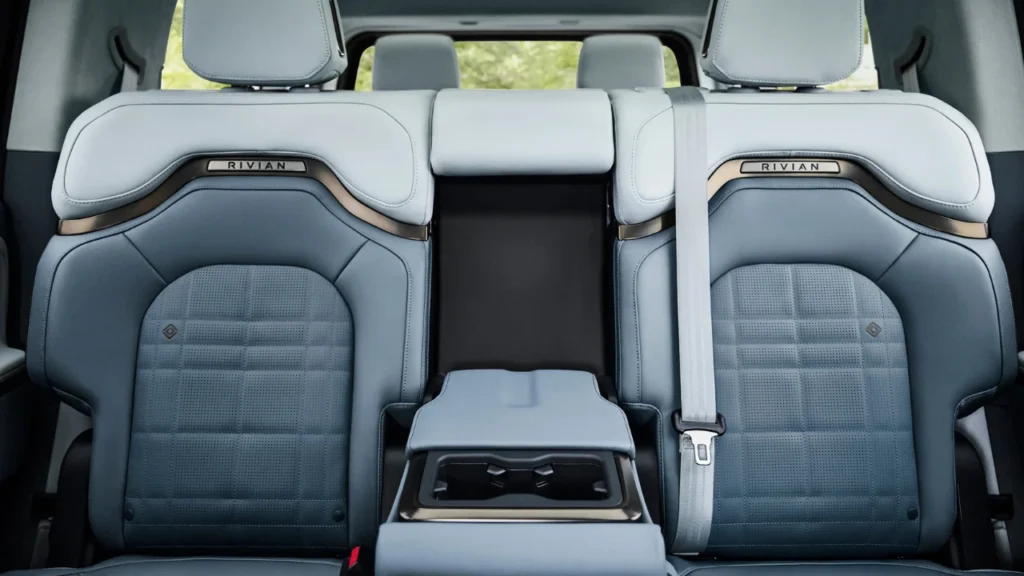
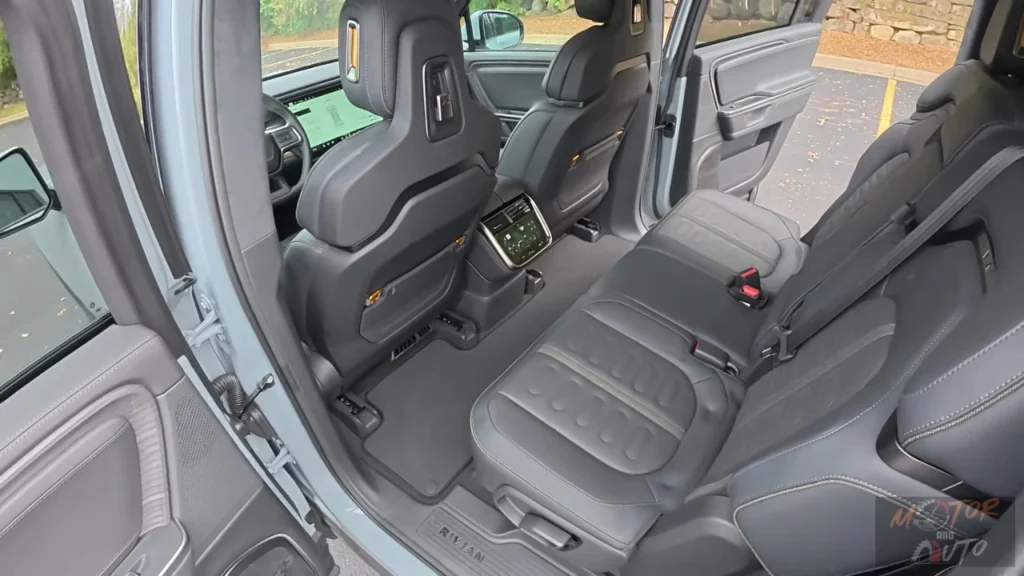
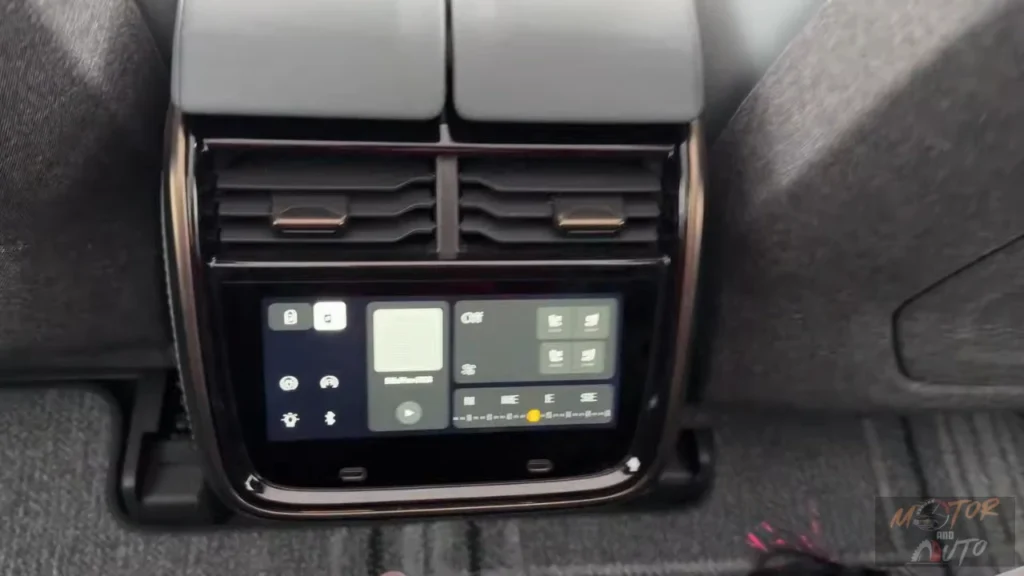
Alright, let’s dive into the seating situation in the 2025 Rivian R1S. Honestly, the second and third rows are a thoughtful mix of comfort and practicality—perfect for families on the go. They really add to the R1S’s reputation as a solid family ride while keeping that upscale vibe from the front cabin.
The second-row bench can fit three adults and does a pretty good job of keeping everyone comfy, no matter their size. The cushions provide just the right amount of support—not too hard, not too soft—and you can adjust the backrest to suit your sitting style. And legroom is generous when you slide the second row back, though that does eat into how much space the third row gets. But even when the second row is adjusted for more room in the back, average-height folks can still sit pretty comfortably without their knees bumping into the front seats. Plus, headroom is fantastic, thanks to that big glass roof that keeps things feeling nice and airy. Oh, and let’s not forget the LATCH anchors for car seats—super handy for families!
For those chilling in the second row, there’s heated seating for all three spots, which is nice, though they don’t get the ventilation that the front seats do. You’ve got your own little climate control panel on the back of the center console, so you can tweak the temp and airflow without messing with the front. It also lets you control the media, so rear passengers can adjust the tunes without distracting the driver. Each door has storage pockets, but they’re a tad smaller than what you find in the front. The fold-down armrest has dual cupholders and a little compartment for stashing small stuff during long drives.
As for connectivity, it’s pretty well thought out. There are USB-C ports on the back of the front seats at a nice height, plus some hooks to hold tablets or phones for entertainment on those long hauls. Rivian really gets how families use tech while traveling. The climate vents are nicely placed, too, in the B-pillars and center console, ensuring everyone stays cool—even after the car’s been sitting in the sun.
What about getting to the third row? Just hit the buttons on the second-row seatbacks, and the seats slide forward to clear a path. It works great, although when the seats slide back, they tend to default to a more upright position than you might like, so you may need to adjust them again. Once you’re in the third row, it’s not as spacious as the second, but it’s still decent for average-sized adults on short trips. With the second row adjusted right, someone around 5’10” can fit comfortably, enjoying decent headroom and legroom. The cushions back there are a bit flat, though—less thigh support than you’d want for a long journey. Still, they’re totally fine for occasional use.
Now, here’s where the third row stands out: it has heating, which is kind of a luxury for that part of the vehicle. It may seem a bit extra, but it shows that Rivian cares about everyone’s comfort. The glass roof also extends to the third row, keeping it from feeling cramped. Each seat has a height-adjustable headrest, which is a nice touch for comfort and safety. Storage is limited, but there are small cubbies on the sides for phones and other little items, plus cupholders in the side panels that don’t take up too much room.
Folding down the third row is easy—just pull a strap at the top of each seatback, and they flop down nearly flat. Getting them back up can be a bit trickier, though; you might have to access them from the cargo area or through the second row. When you fold the third row down, it makes for a flat load floor that really opens up the cargo space. We found that the third-row seats are easy to fold when you need to, and when they’re stowed, they don’t get in the way, keeping the vehicle flexible for all your passenger and cargo needs.
Bootspace and Practicality
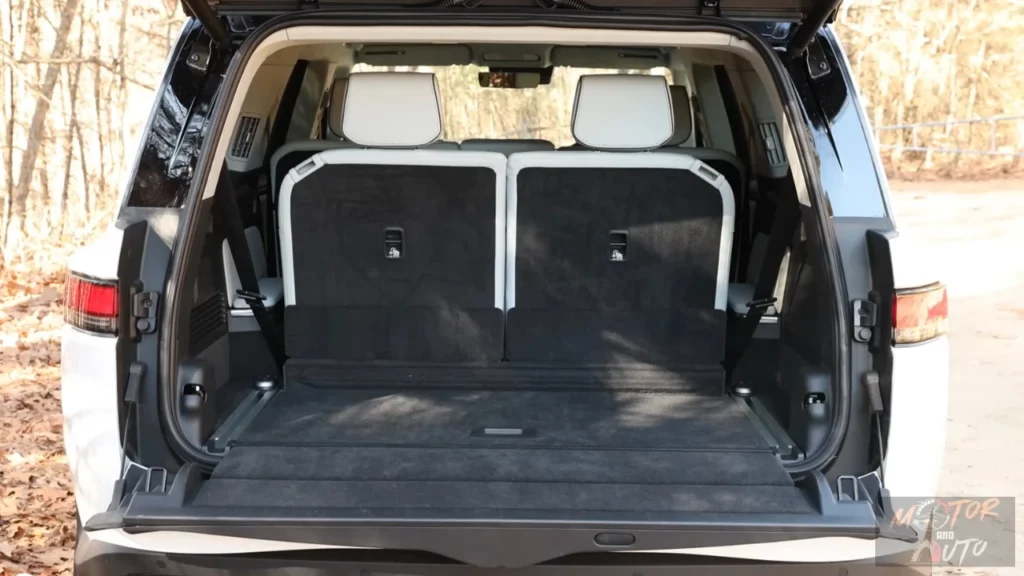
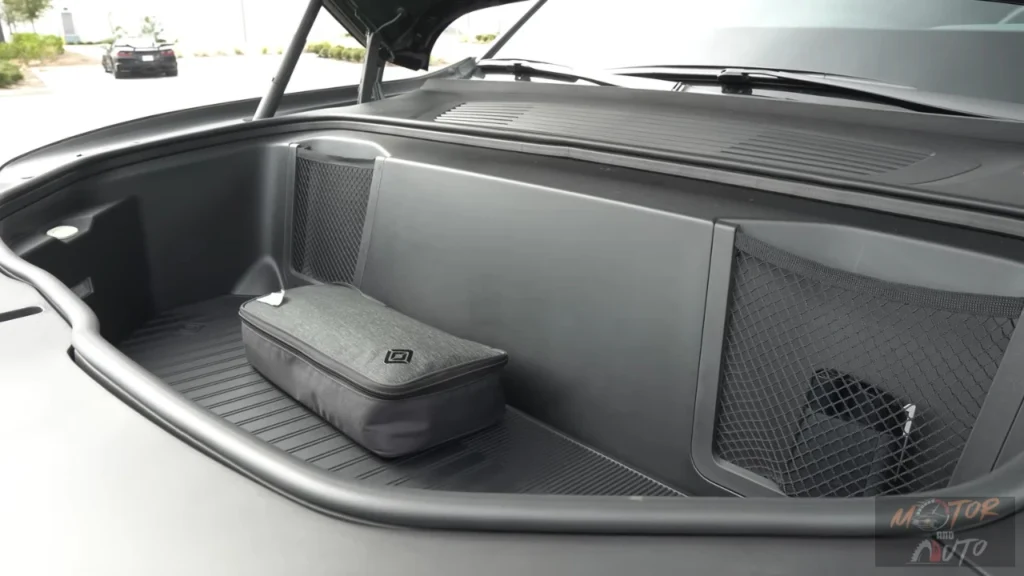
The 2025 Rivian R1S truly shines when it comes to cargo capacity and functionality. It offers some pretty versatile storage options, making it a practical choice whether you’re running errands or heading out on a big adventure. The design is clever, and all those thoughtful features really help position this vehicle as a top-tier adventure SUV.
Let’s start with the back. The R1S has a unique split tailgate that kind of reminds you of high-end SUVs like the Range Rover. The upper part opens with the push of a button, either on the tailgate itself, using the key fob, or right from the touchscreen. The lower part, though? That’s manual. It folds down to give you a handy place to sit or a flat surface to load stuff onto. Some folks have mentioned that the manual part feels a bit old-school compared to the rest of the techy features, but honestly, it brings some solid practicality. This split design is great for those tight spots where a regular tailgate might not fit. Plus, it’s perfect for changing shoes after a hike or just enjoying a spontaneous picnic.
Now, when all three rows of seats are up, you’ve got about 18 cubic feet of cargo space behind the third row. That’s decent and actually beats a lot of three-row gas SUVs out there. It’s enough for grocery runs or weekend bags for a family, but if you need to haul bigger items, you’ll have to fold down part of that third row. And if you do fold it down, you’ve got around 48 cubic feet to play with, which is great for larger luggage on road trips. Fold both the second and third rows flat, and you’re looking at a whopping 88 cubic feet of space. Just a little heads-up, though: the load floor isn’t perfectly flat due to some height differences between the seat backs and the cargo area. It’s a minor thing, but it could make loading larger items a bit tricky or change the comfort level for camping.
But wait, there’s more! The R1S isn’t just about having space; it’s got some smart storage solutions sprinkled throughout. There’s a storage compartment under the main cargo floor for hiding away smaller items or valuable gear. Plus, you’ll find tie-down points to keep loose items secure, which is especially handy when you’re off-roading. And those power outlets, both 12V and 120V, are a game changer—you can power up air pumps, coolers, or camping gadgets without stressing the main battery.
One of the coolest features has to be the built-in air compressor tucked away in a side panel. It connects to a hose that’s stored in the front trunk, giving you easy control over tire pressures, air mattresses, or sports gear. During our off-road adventures, we found it super useful for adjusting tire pressure to tackle different terrains and then reinflating before hitting the pavement again. This built-in compressor means you don’t have to drag along a separate one, which is a nice space-saver.
Speaking of storage, let’s not forget the front trunk—or “frunk,” if you will. This area gives you about 11-12 cubic feet of space, which is way more than what you usually find in other electric vehicles. It has a washable liner with a drain plug, so it’s perfect for stashing wet or muddy gear without messing up the main cabin. We used it a lot for charging cables, emergency kits, and smaller bags that would slip around in the main cargo area. Plus, it’s powered, so you can open it using the key fob, dashboard controls, or even your smartphone. Super handy when your hands are full!
And if you need to carry larger stuff on the roof, the R1S comes with integrated roof rails right out of the gate. You can fit various crossbars and accessories for bikes, kayaks, skis, or whatever else you might want to haul up there. Those roof rails even have a bit of flair, with yellow accents on the Tri-Motor and Quad-Motor versions, keeping things functional yet stylish. With a roof load capacity of 220 pounds when stationary and 165 pounds on the move, the R1S can handle most recreational gear without breaking a sweat. And if that’s not enough, it boasts a towing capacity of 7,700 pounds, perfect for trailers, boats, or anything else you want to tow—just keep in mind that towing does eat into your driving range, like with all electric vehicles.
The Rivian R1S Value Proposition: Is It Worth the Price?
The value of the 2025 Rivian R1S really comes down to what buyers prioritize in terms of its unique mix of features, capabilities, and brand identity. Let’s talk numbers: the price starts at around $77,700 for the base Dual-Motor Adventure and goes up past $130,000 for a fully loaded Quad-Motor version. That’s a pretty hefty price tag, especially when you compare it to more mainstream electric SUVs. Still, it’s going head-to-head with well-known luxury brands. After putting the R1S through various tests, we can give you a detailed look at whether the price matches what you’re actually getting.
Now, if you’re eyeing that base Dual-Motor Adventure with the Standard battery at $77,700, it’s a solid option compared to other premium three-row SUVs out there. Sure, it’s pricier than mainstream electric vehicles like the Kia EV9, but the R1S really shines with its performance, true off-road capabilities, and an interior that feels more upscale. Standard features include air suspension, vegan leather seats, a full suite of safety tech, and Rivian’s unique design and tech ecosystem. The 270-mile range from the Standard battery should cover most daily needs, but if you’re someone who often drives long distances, you might find it a bit limiting. For families living in cities or suburbs who want an electric vehicle with real adventure potential and standout style, this entry-level R1S could be seen as decent value, even if it’s on the pricier side.
If you bump up to the Dual-Motor with the Performance package and Large battery for $89,700, you’re hitting what many folks might call the sweet spot in the lineup. This setup gives you a nice boost in performance—665 horsepower instead of 553—plus extra drive modes for off-roading and an increased range of around 320 miles, which definitely eases those long-trip charging worries. That’s roughly $12,000 more than the base model brings real benefits that many buyers will find useful day-to-day. This version offers about 90% of the R1S experience at a price that, while still premium, is a bit more manageable for many luxury SUV shoppers.
Then there are the Premium and Ascend trims with Tri-Motor setups, starting at around $107,700. Now, this is where you need to think carefully about your choice. The Tri-Motor’s 850 horsepower and 1,103 lb-ft of torque deliver performance that feels, well, exotic! And with rear torque vectoring, it handles off-roads like a champ—something the Dual-Motor can’t quite match. But here’s the kicker: is that extra $20,000 really worth it over the Dual-Motor Performance with the Large battery? For a lot of buyers, it might not be, since the Dual-Motor Performance already gives more capability than most will realistically use. But hey, if you’re an enthusiast who’s going to push the vehicle’s limits or hit rough terrain regularly, then maybe the Tri-Motor’s features are worth the splurge.
Looking at the upper end, the Quad-Motor setups, which range from about $117,000 to $130,000, place the R1S in a high-end league with luxury SUVs and performance cars. With 1,050 horsepower and a 0-60 mph time of just 2.5 seconds, those numbers are impressive, but let’s be real—they’re a bit overkill for everyday driving. This option is really for those who want the best of what the R1S can offer, no matter the cost, or maybe for someone who needs that individual wheel control for specific off-road challenges. For most buyers, even those with deep pockets, the Tri-Motor is probably a more sensible choice, giving you almost all the Quad-Motor’s capabilities without the sky-high price tag.
And don’t forget about the extras! Potential buyers should think about how options and accessories can affect the bottom line. Some cool features, like special paint jobs (which can run $2,500 to $3,000) and bigger wheels, can bump up the final price pretty quickly. Plus, there’s the Connect+ subscription, which costs $14.99 a month or $149.99 a year. This subscription is pretty much necessary to access some features, adding to the ongoing costs beyond just the initial purchase. So, if you’re stretching your budget to get into the R1S, keep these extra expenses in mind.
When evaluating the R1S against direct competitors, the value equation becomes clearer. Compared to the Tesla Model X, which offers similar performance but less utility and off-road capability, the R1S generally provides more car for similar money, particularly in its lower and mid-range configurations. Against the GMC Hummer EV SUV, the R1S offers more efficiency and a more refined overall package at a lower price point. And compared to conventional luxury SUVs like the BMW X7 or Mercedes-Benz GLS, the R1S delivers comparable luxury with significantly better performance and lower operating costs, though with the range limitations inherent to current electric vehicle technology.
Ultimately, the 2025 Rivian R1S delivers a unique combination of attributes that cannot be directly matched by any current competitor. For buyers who value its specific blend of performance, utility, technology, and design, the premium pricing structure will likely seem justified despite exceeding mainstream alternatives. The vehicle’s comprehensive capabilities and distinctive character create an emotional appeal that transcends rational spreadsheet comparisons for many potential owners. However, those approaching the purchase decision from a strictly utilitarian perspective may find better value in less expensive alternatives, particularly if they don’t intend to utilize the R1S’s more extreme performance and off-road capabilities. As with many premium products, the R1S’s value proposition depends heavily on how individual buyers weigh its unique attributes against its admittedly significant cost of entry.



